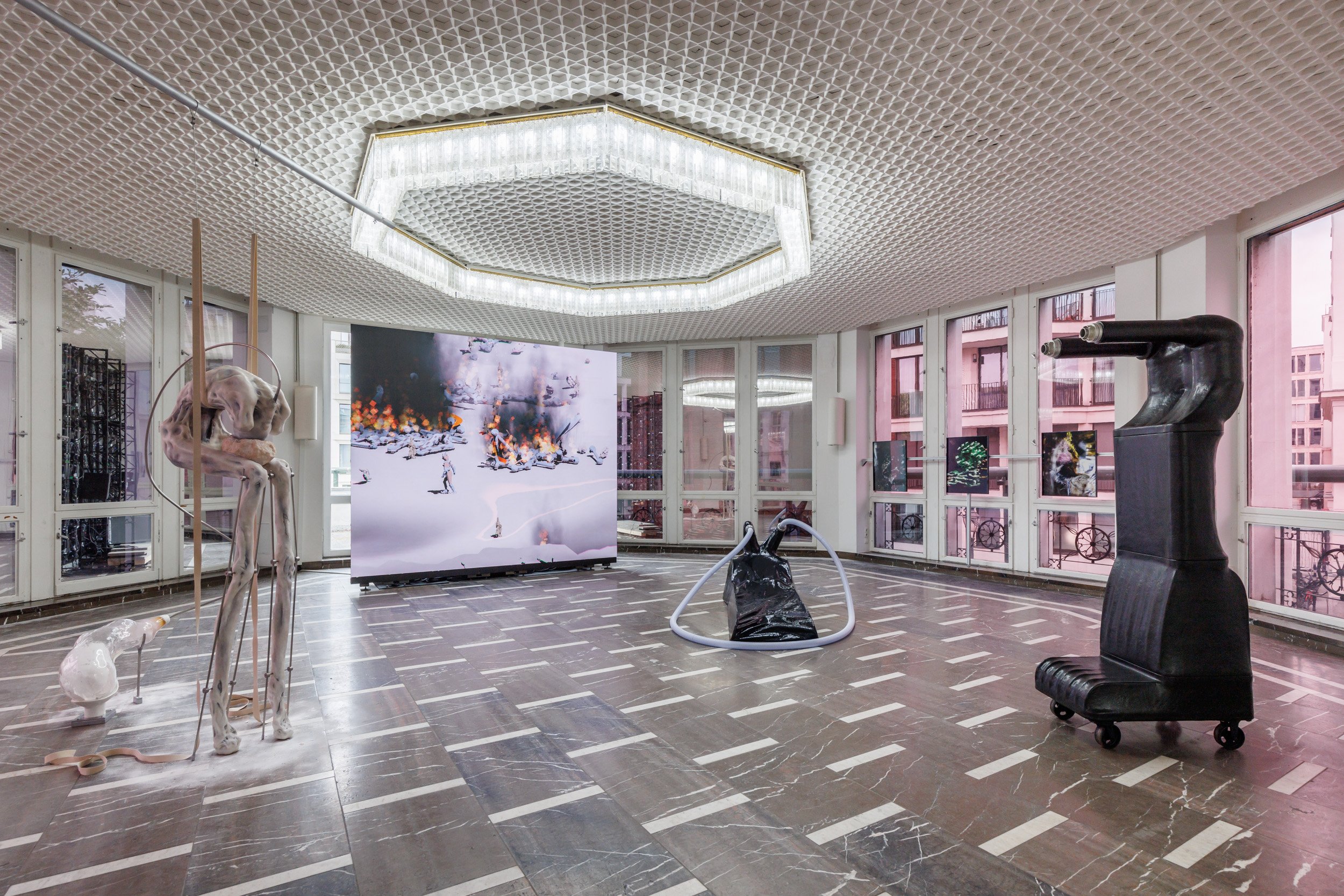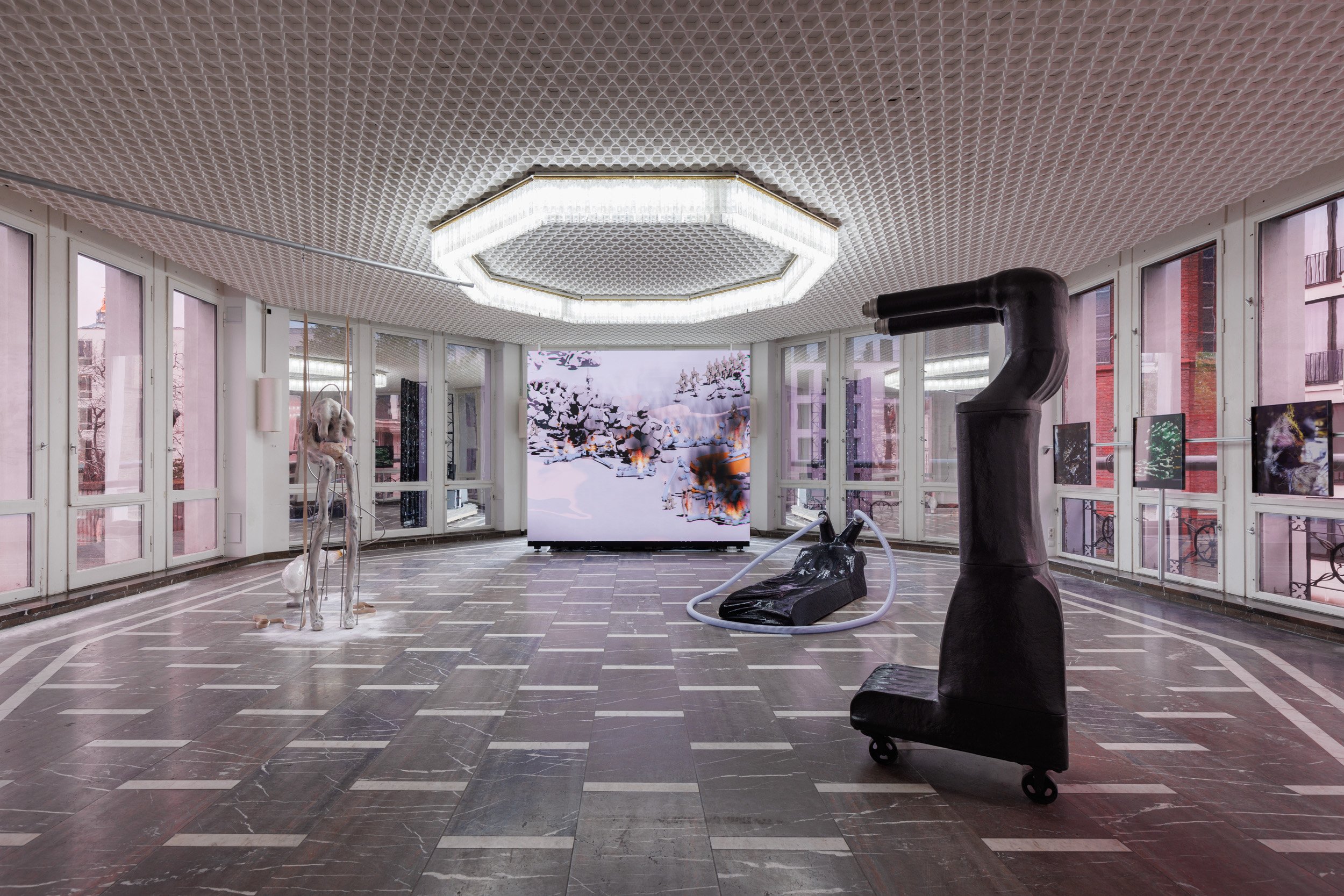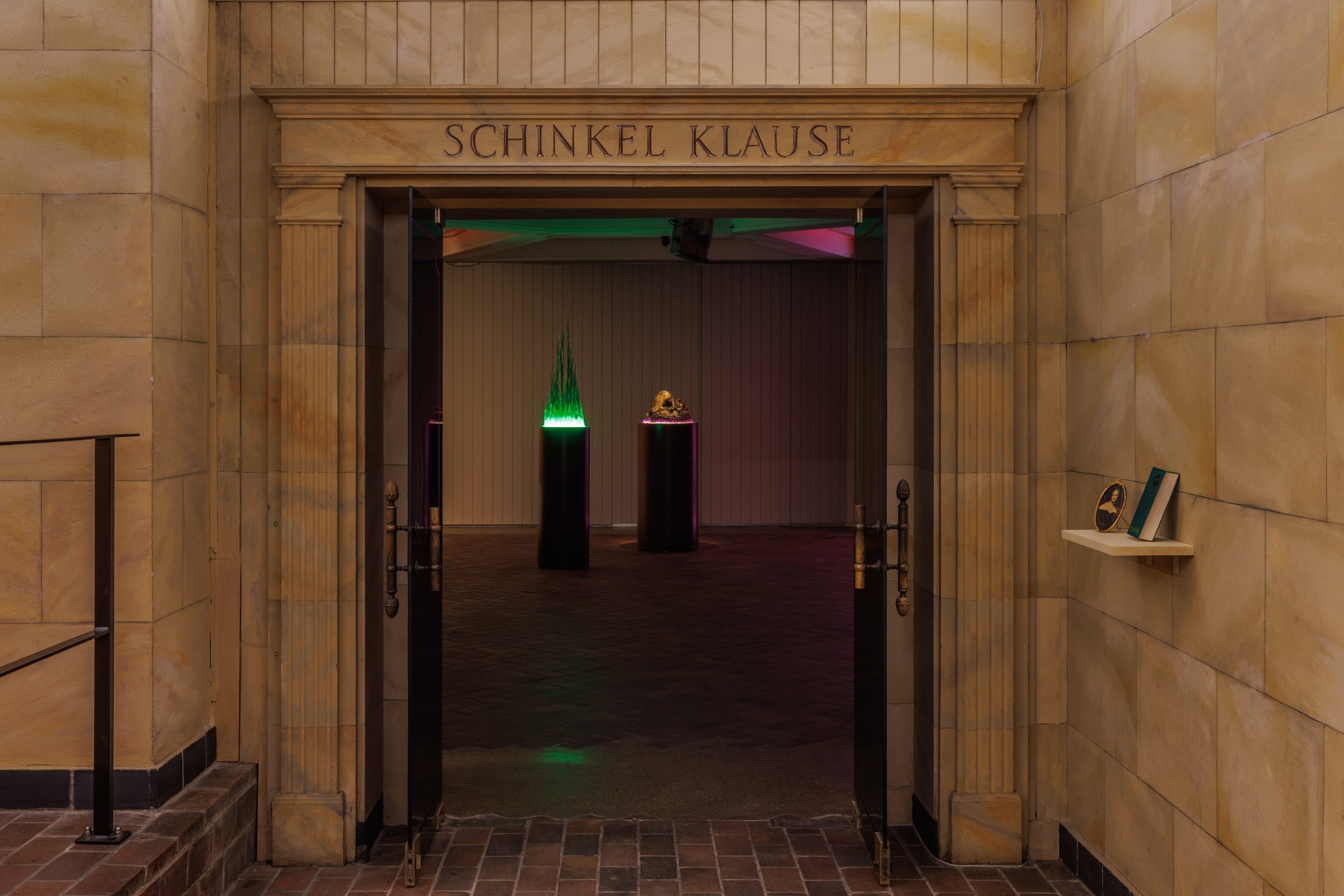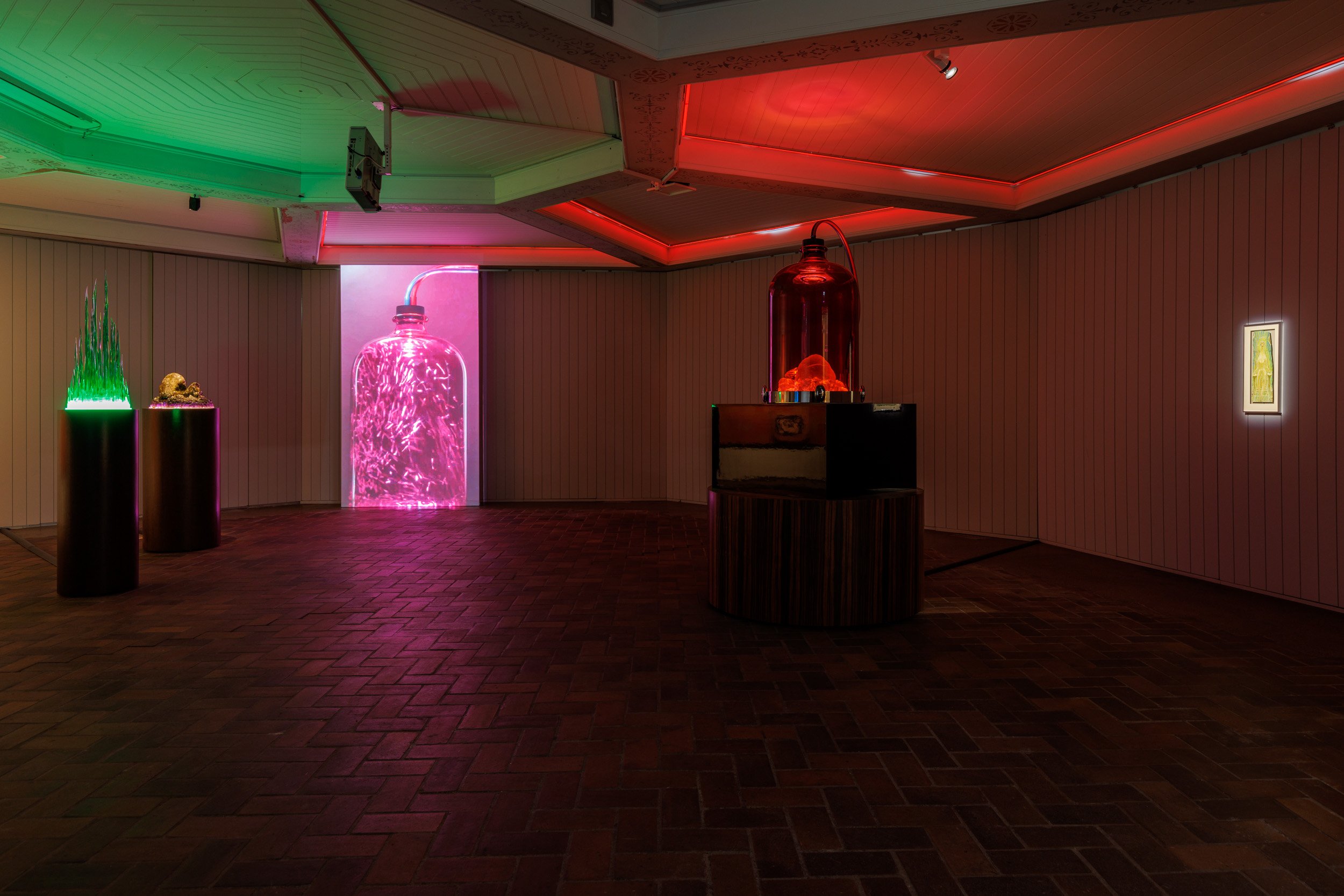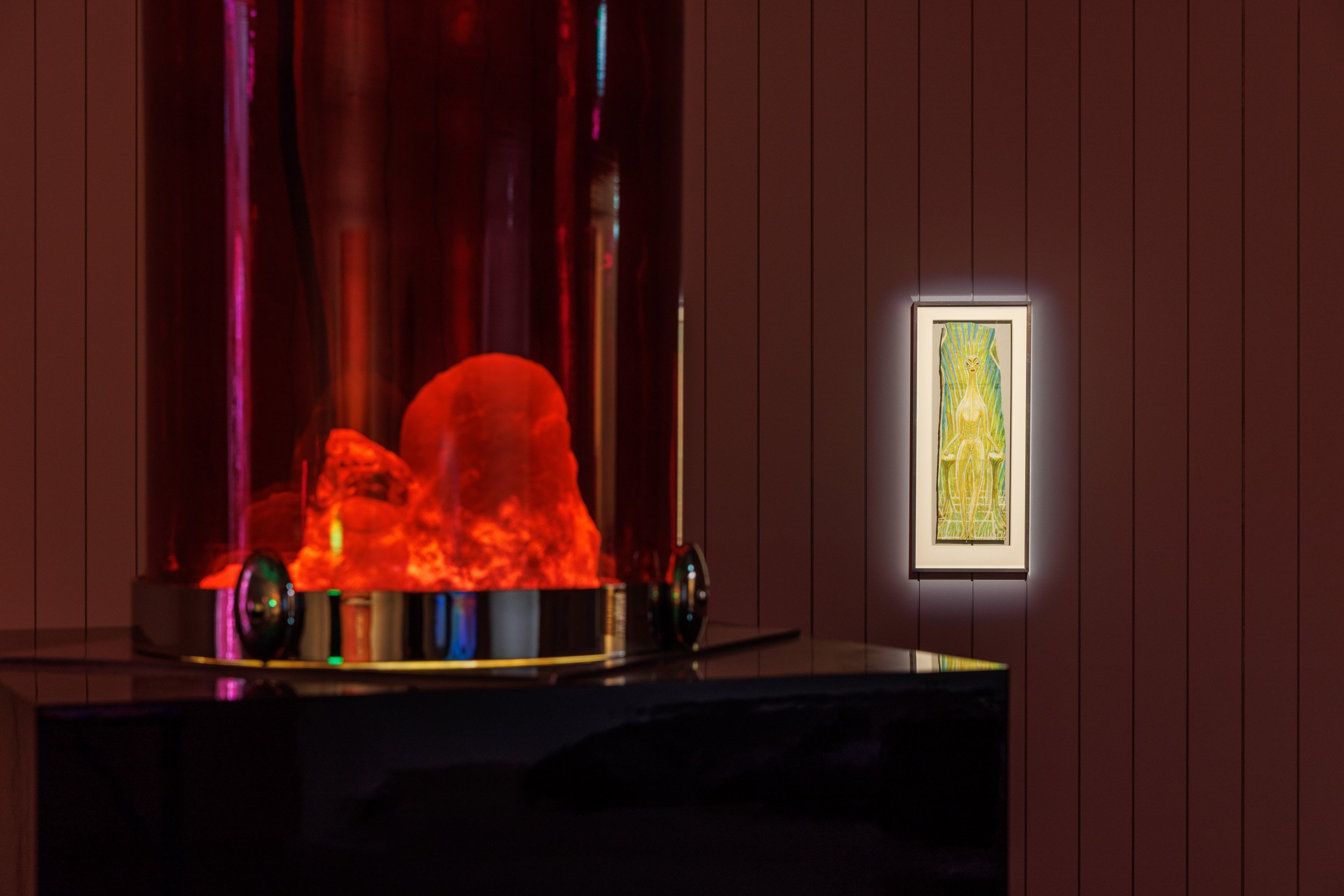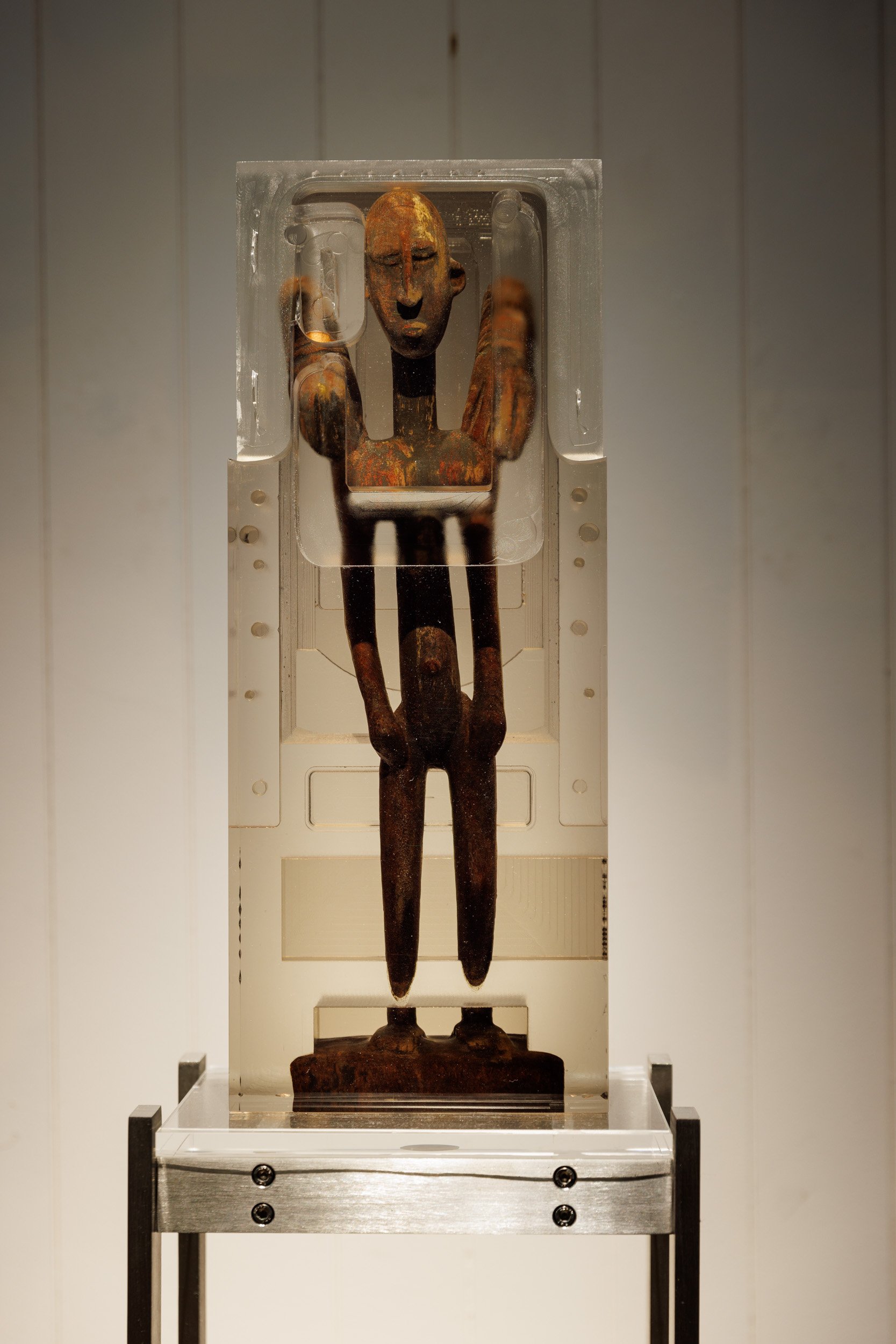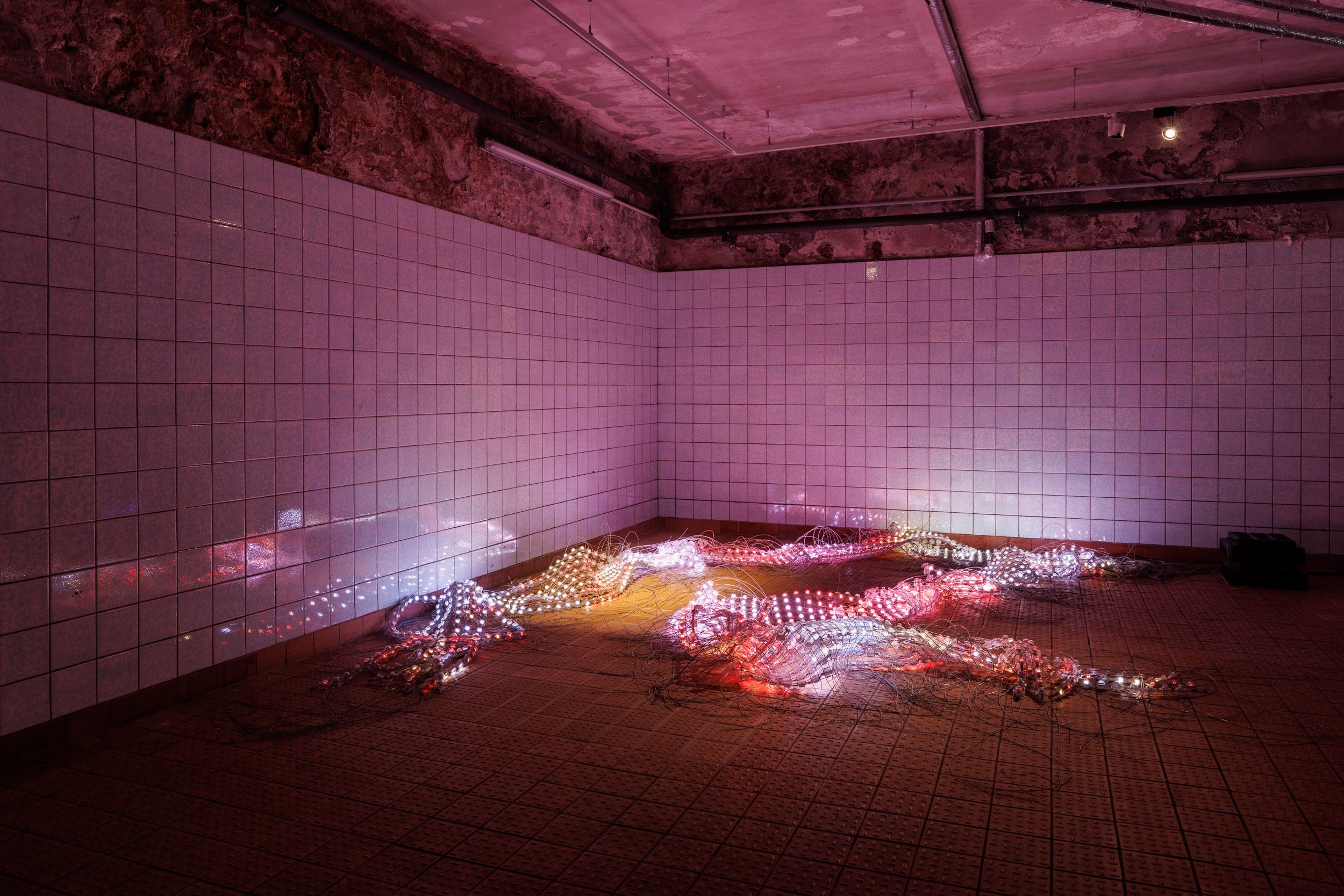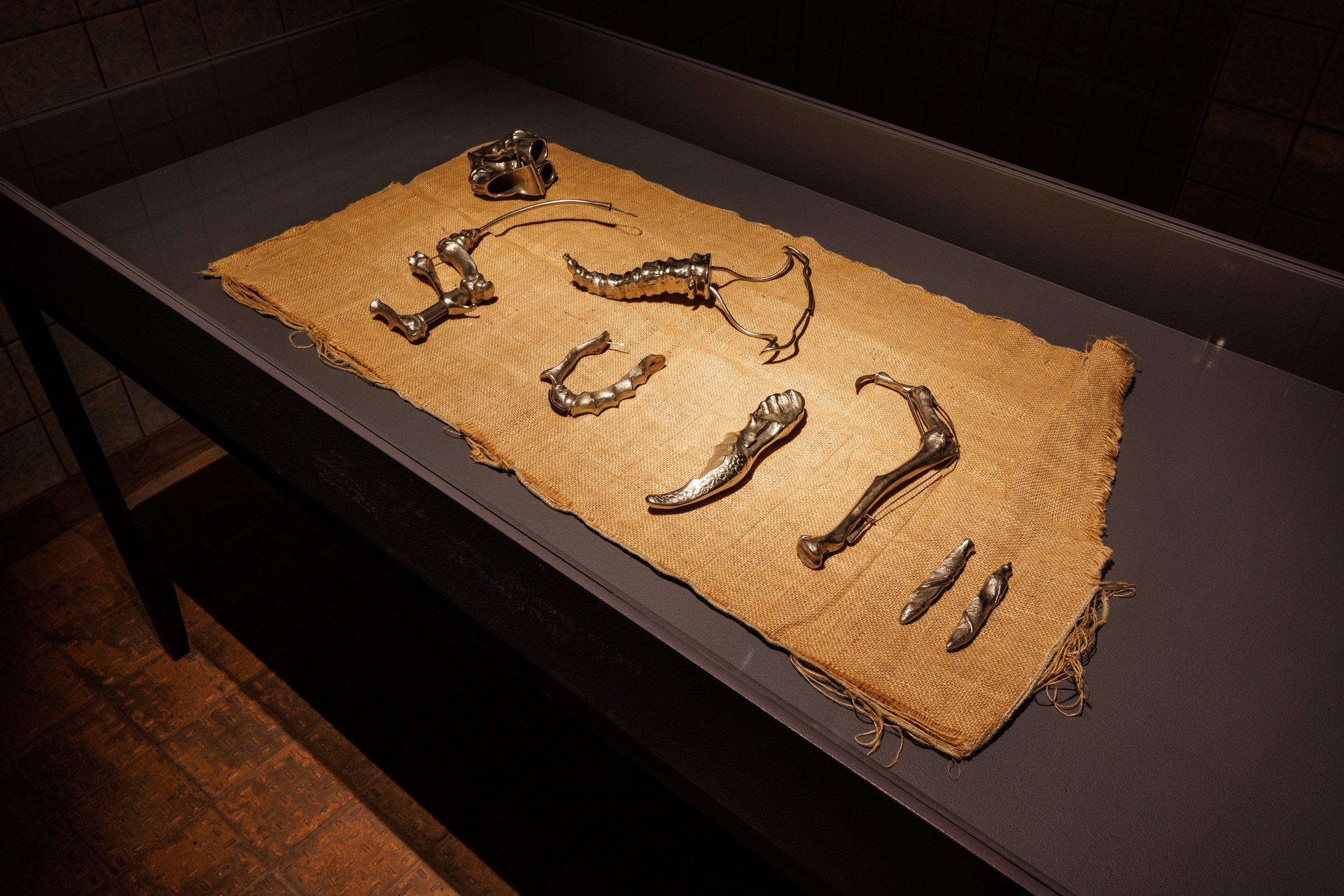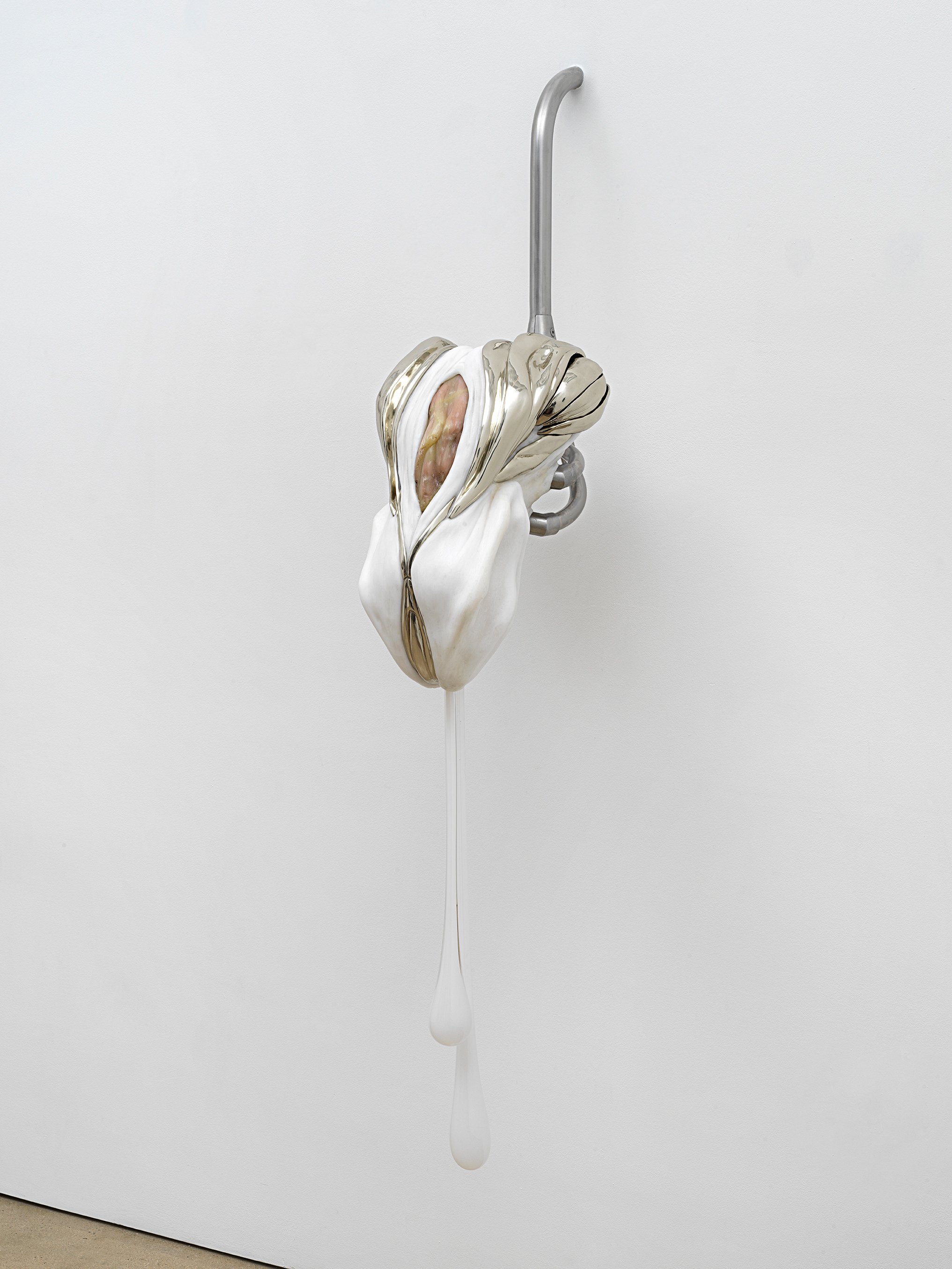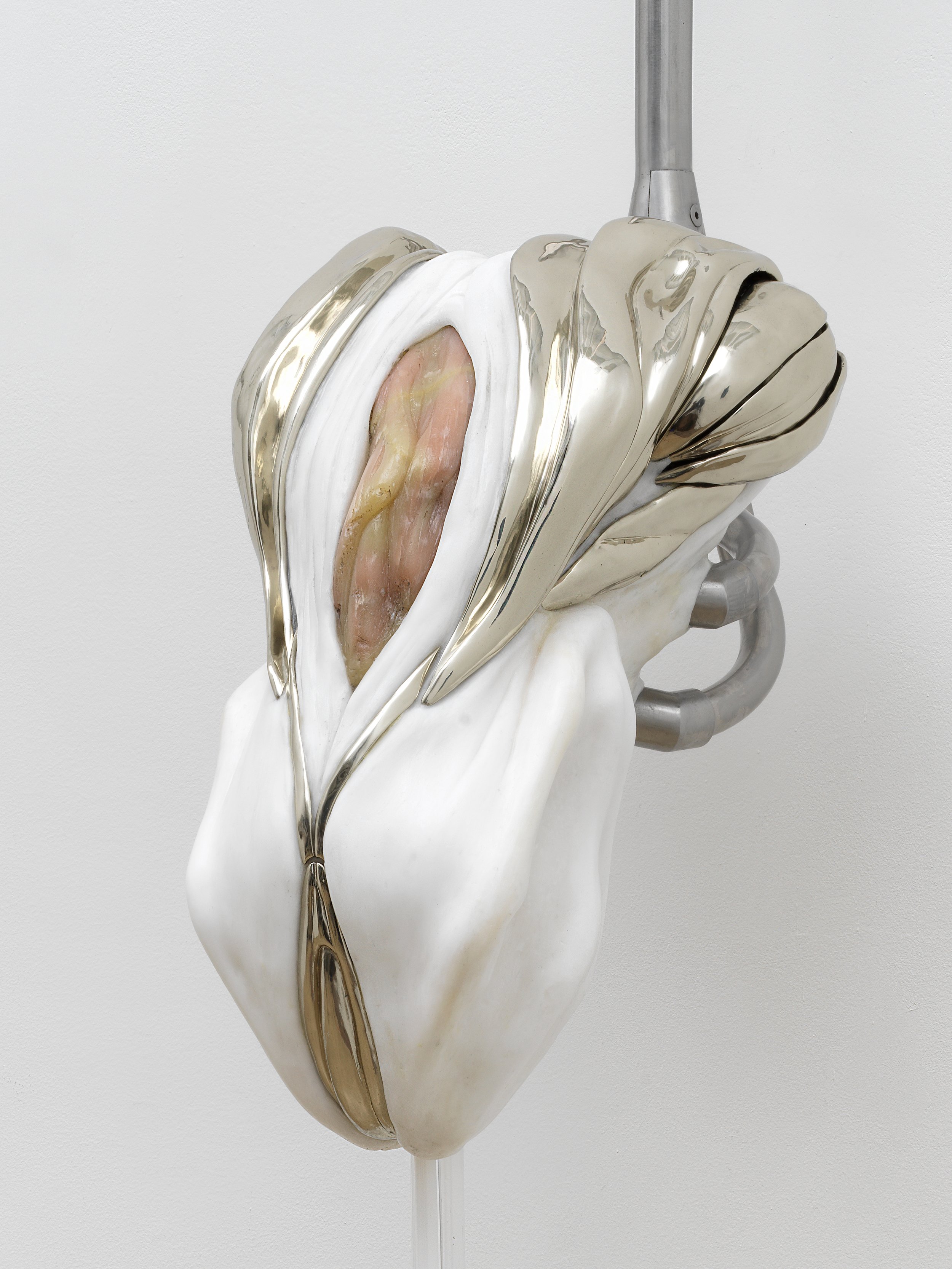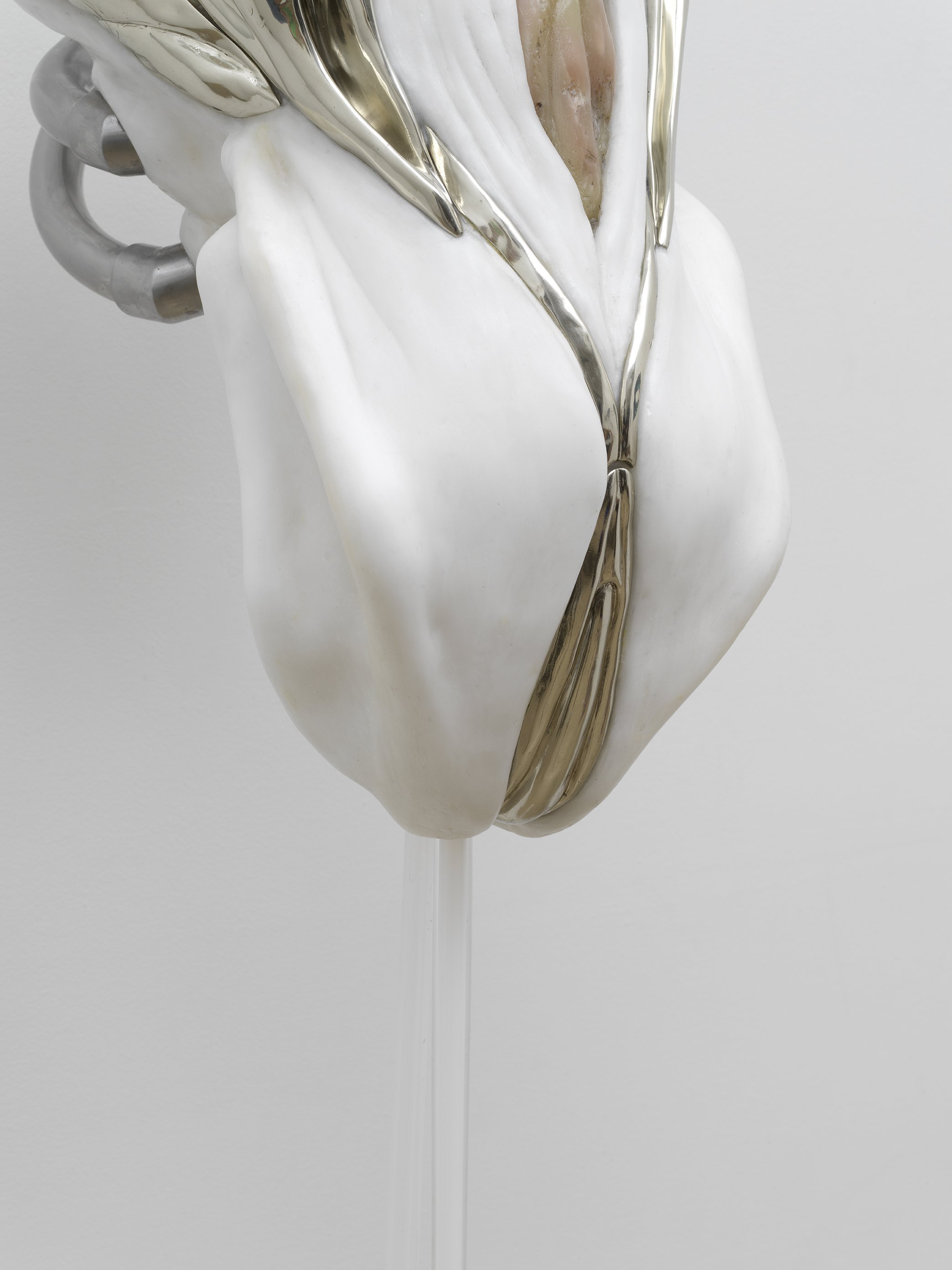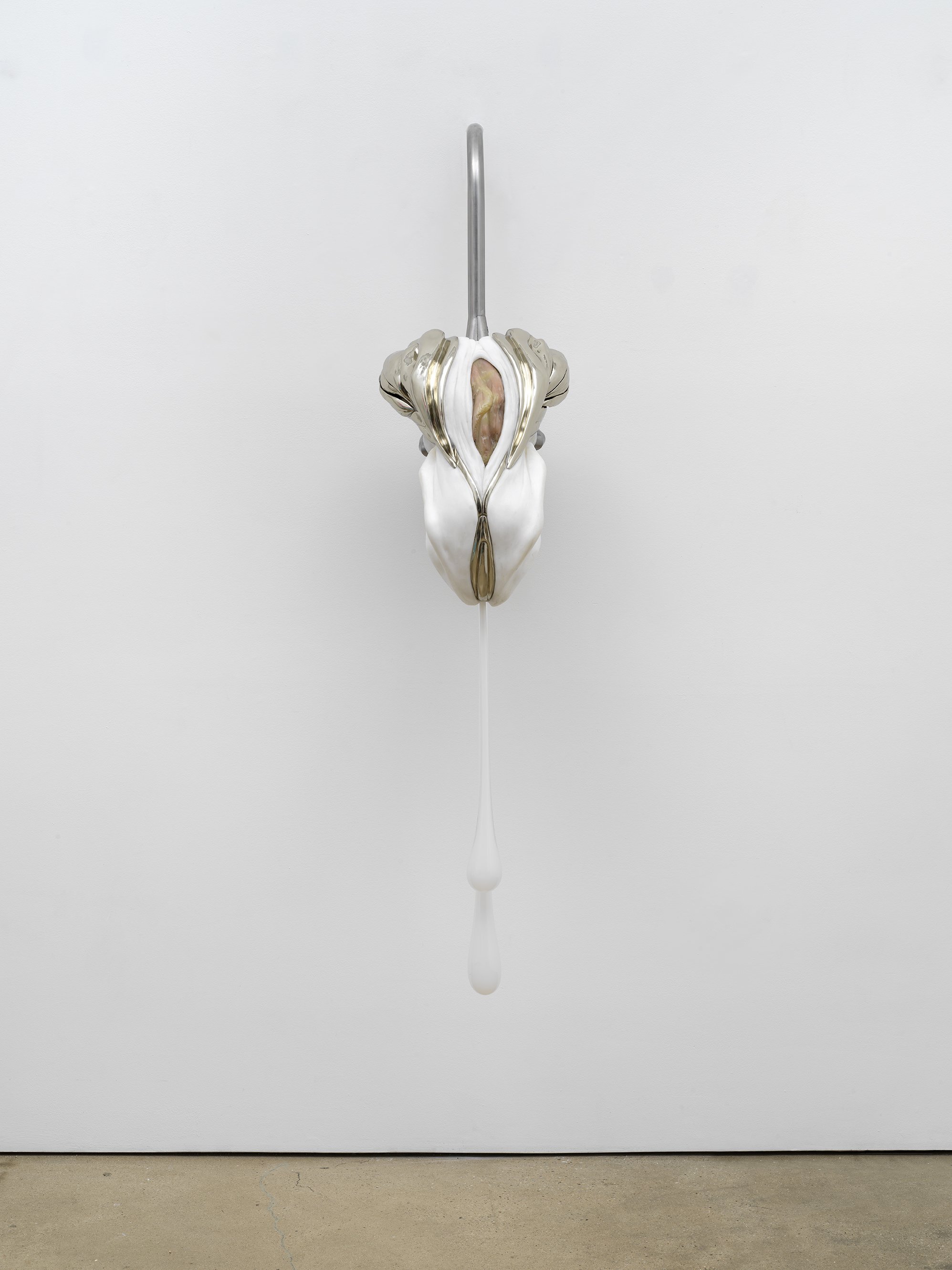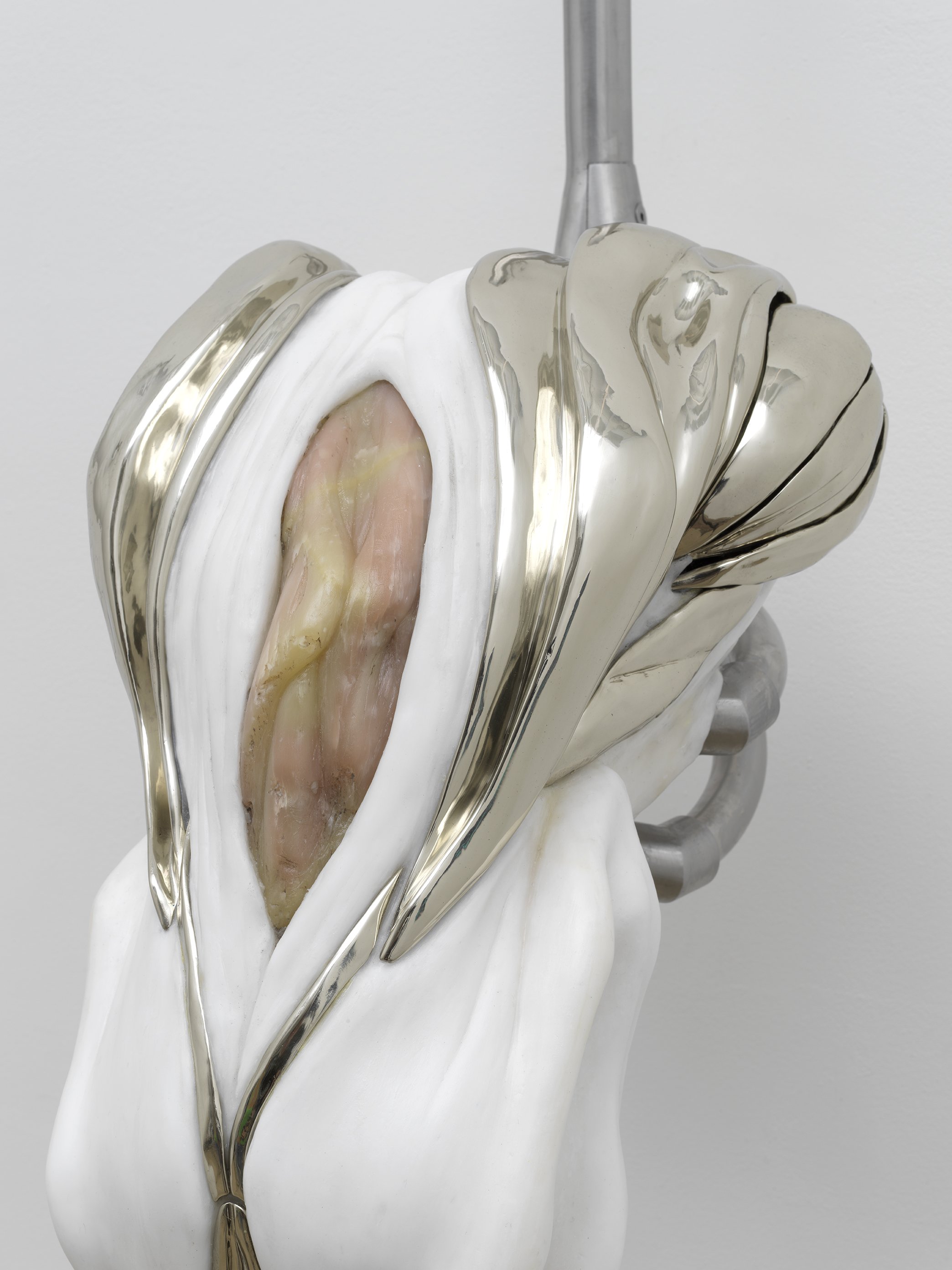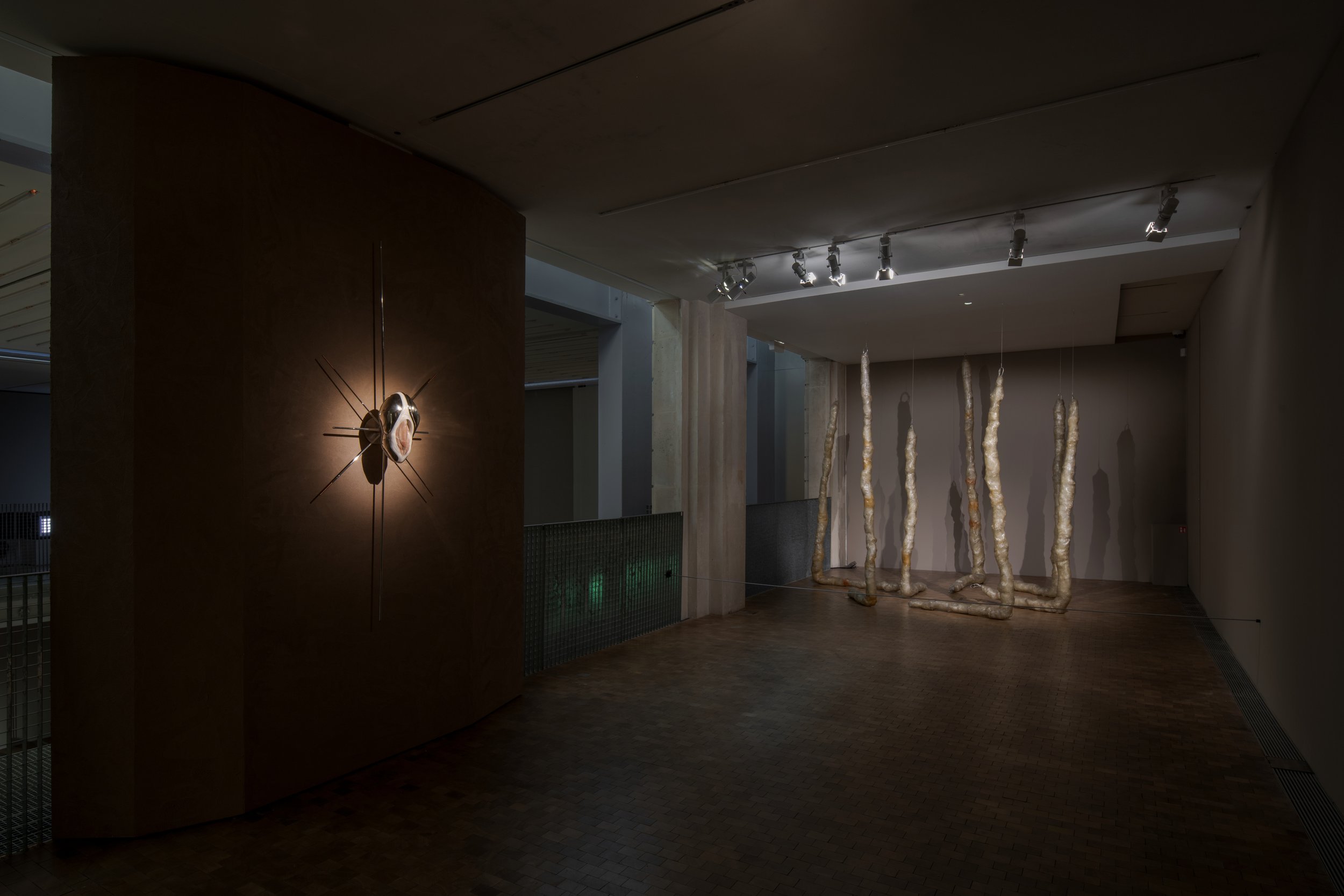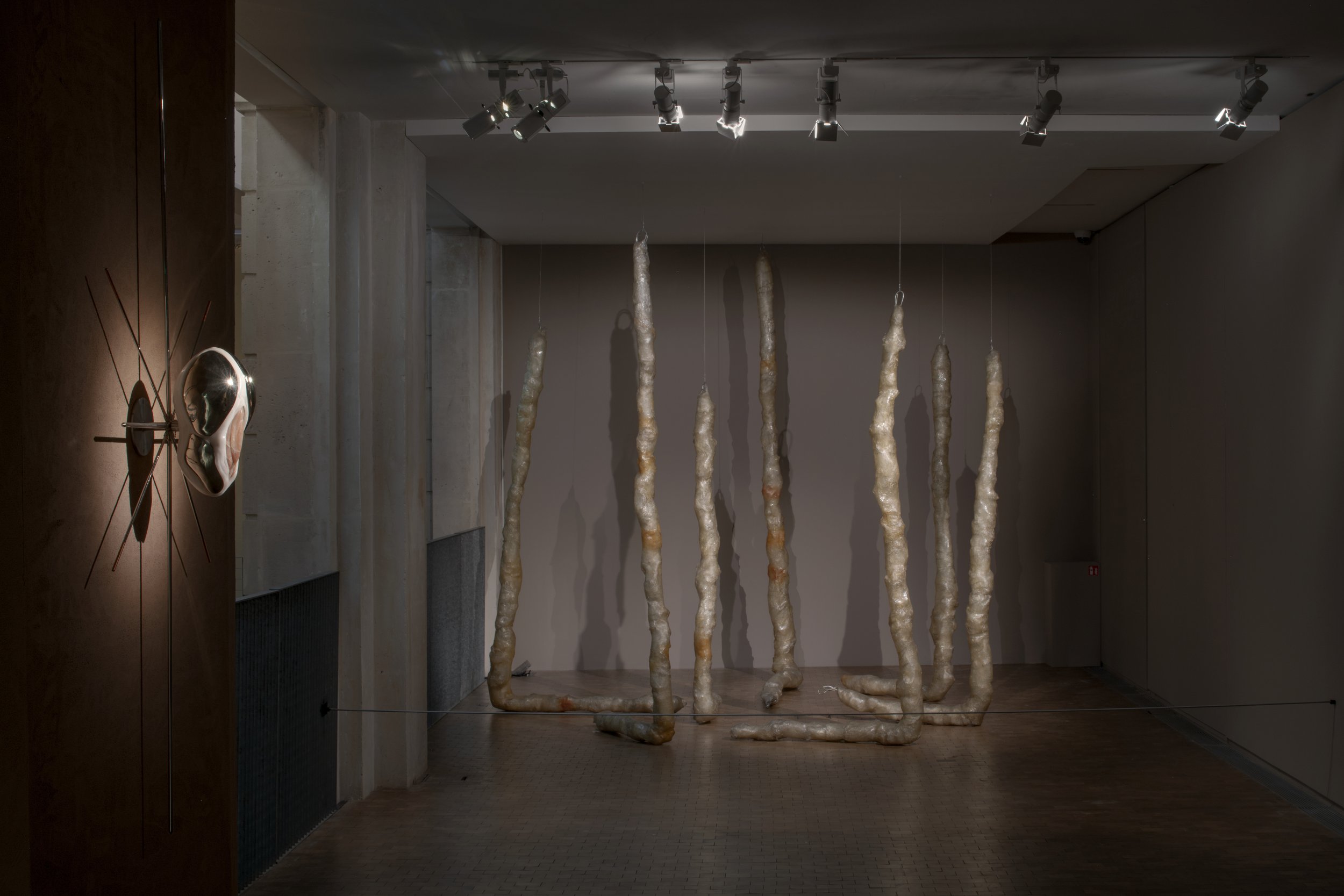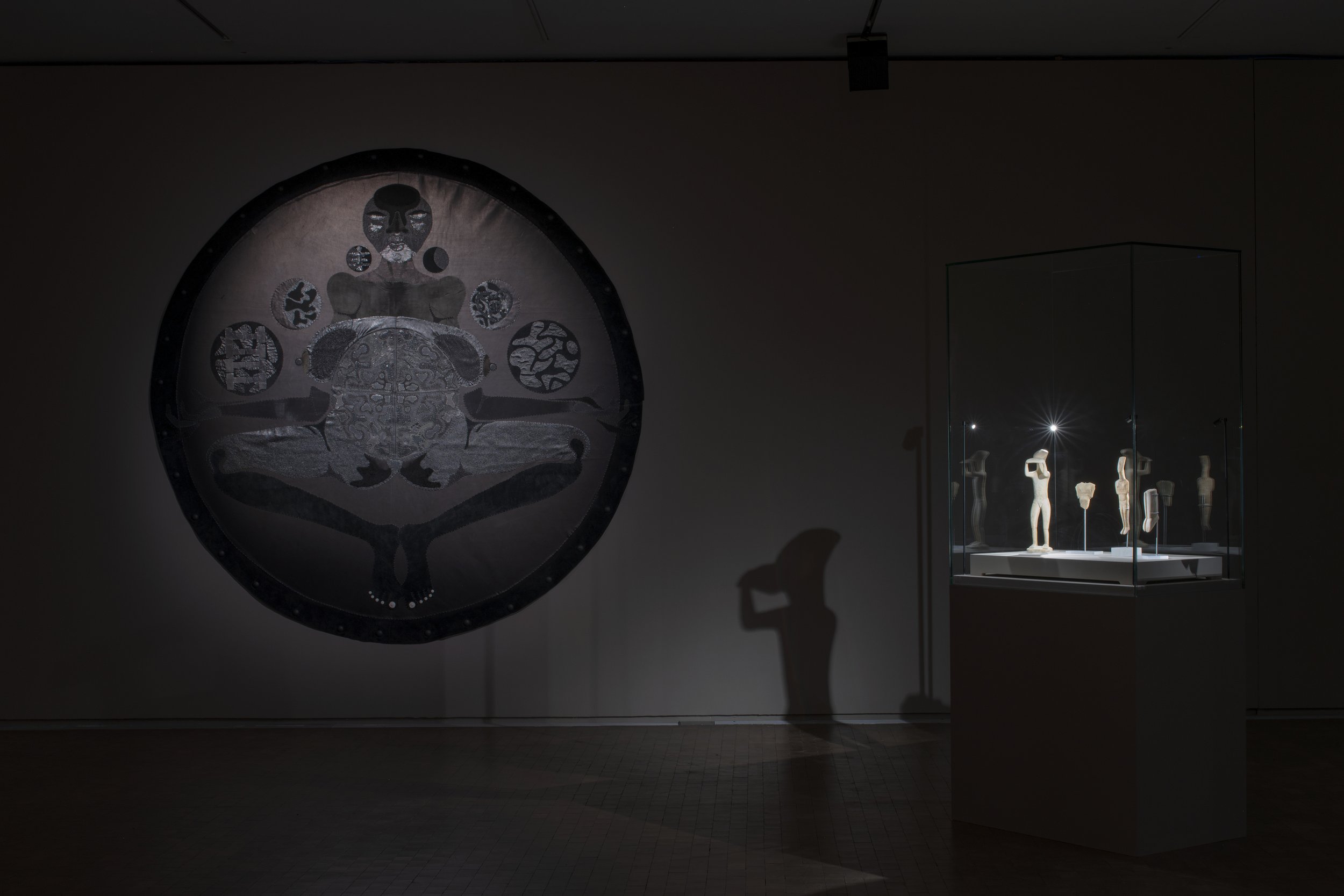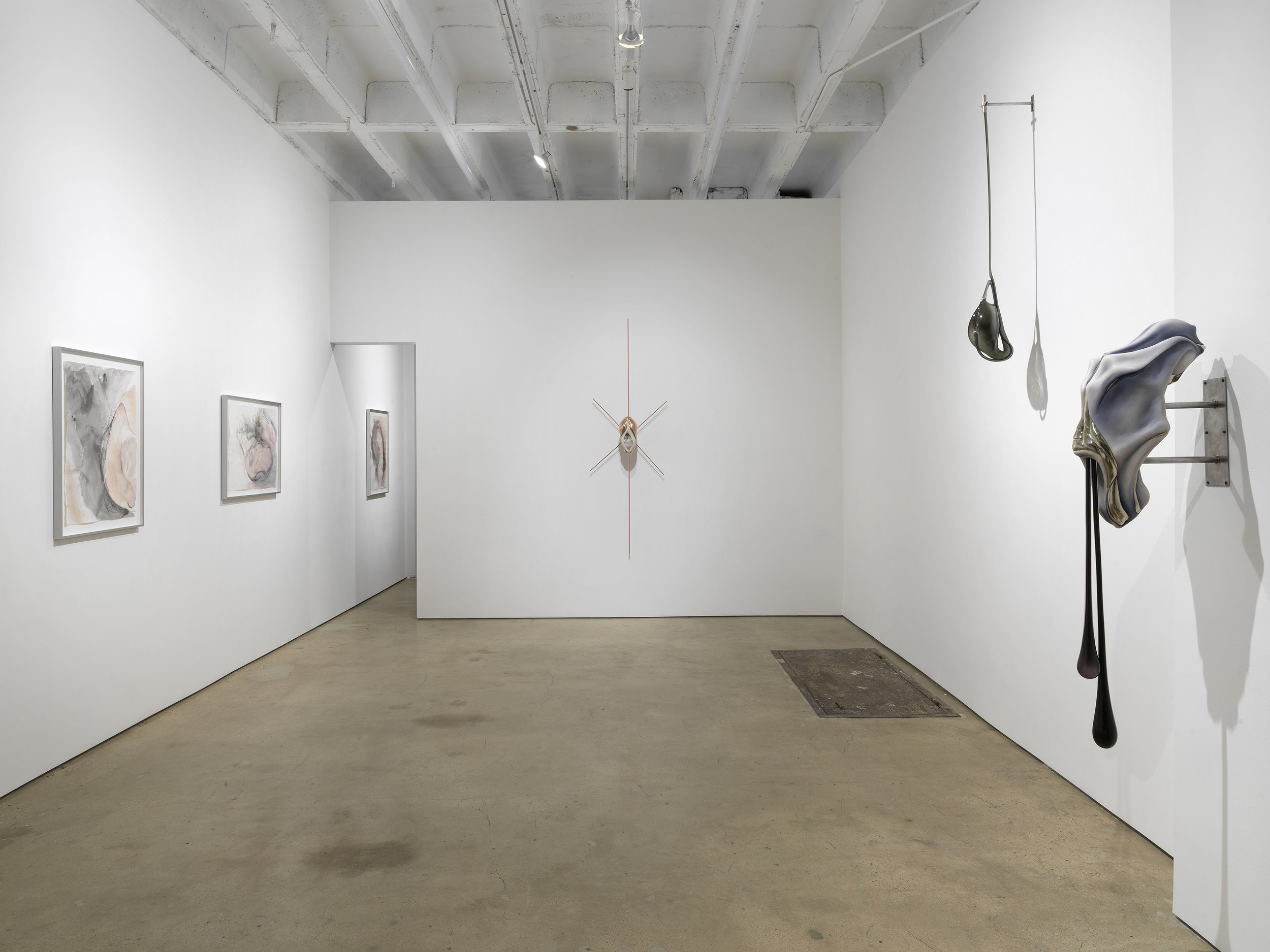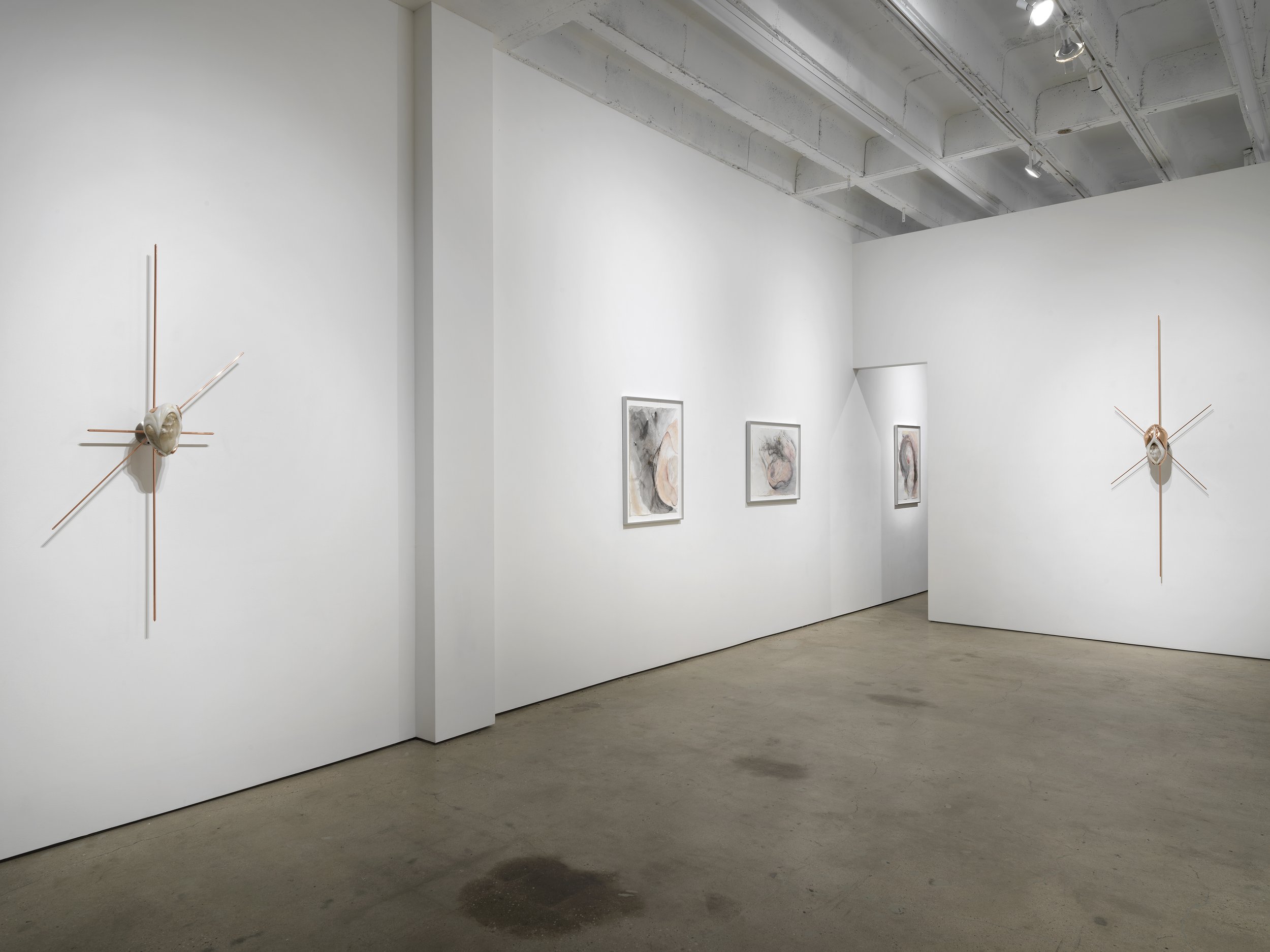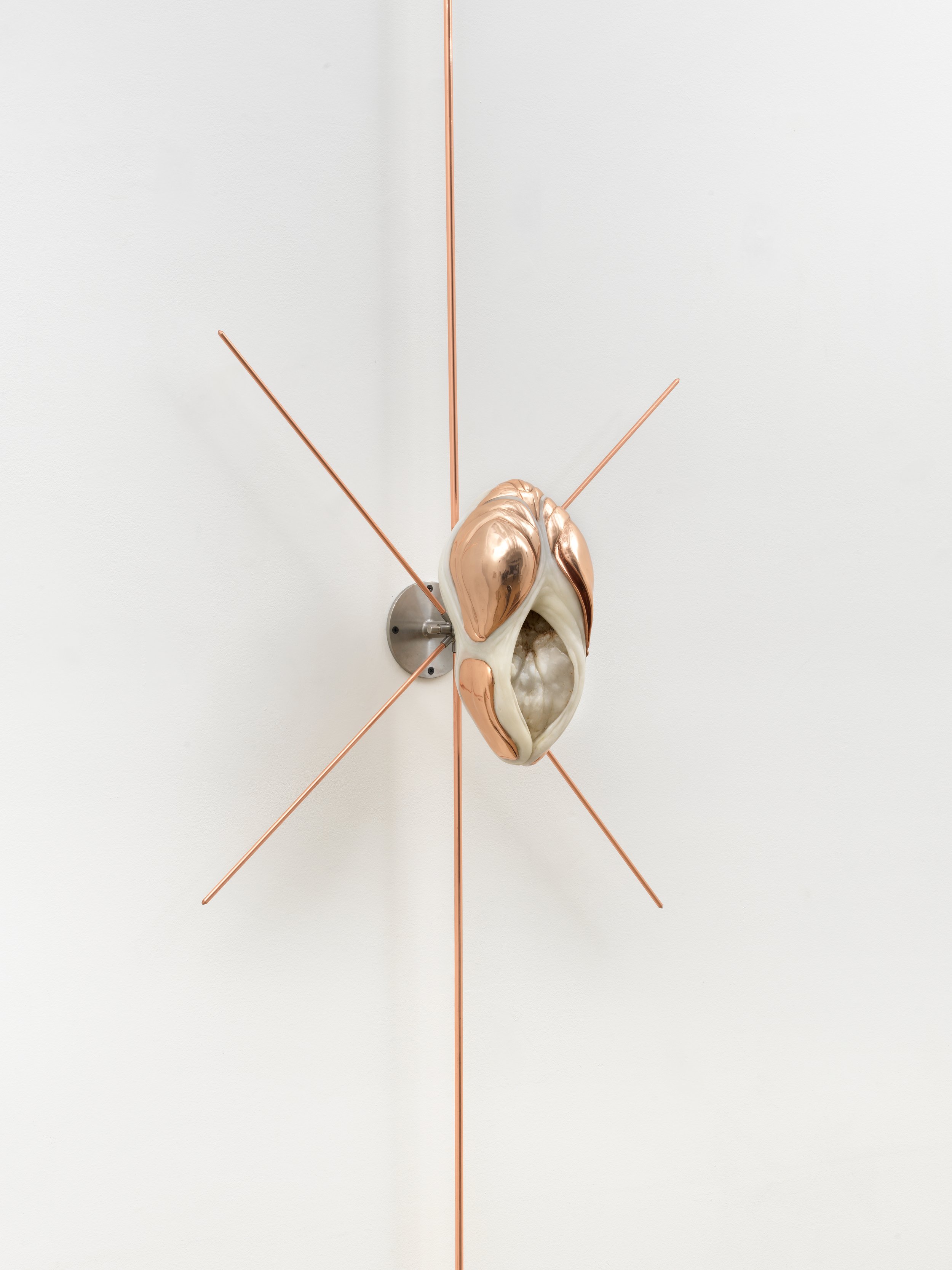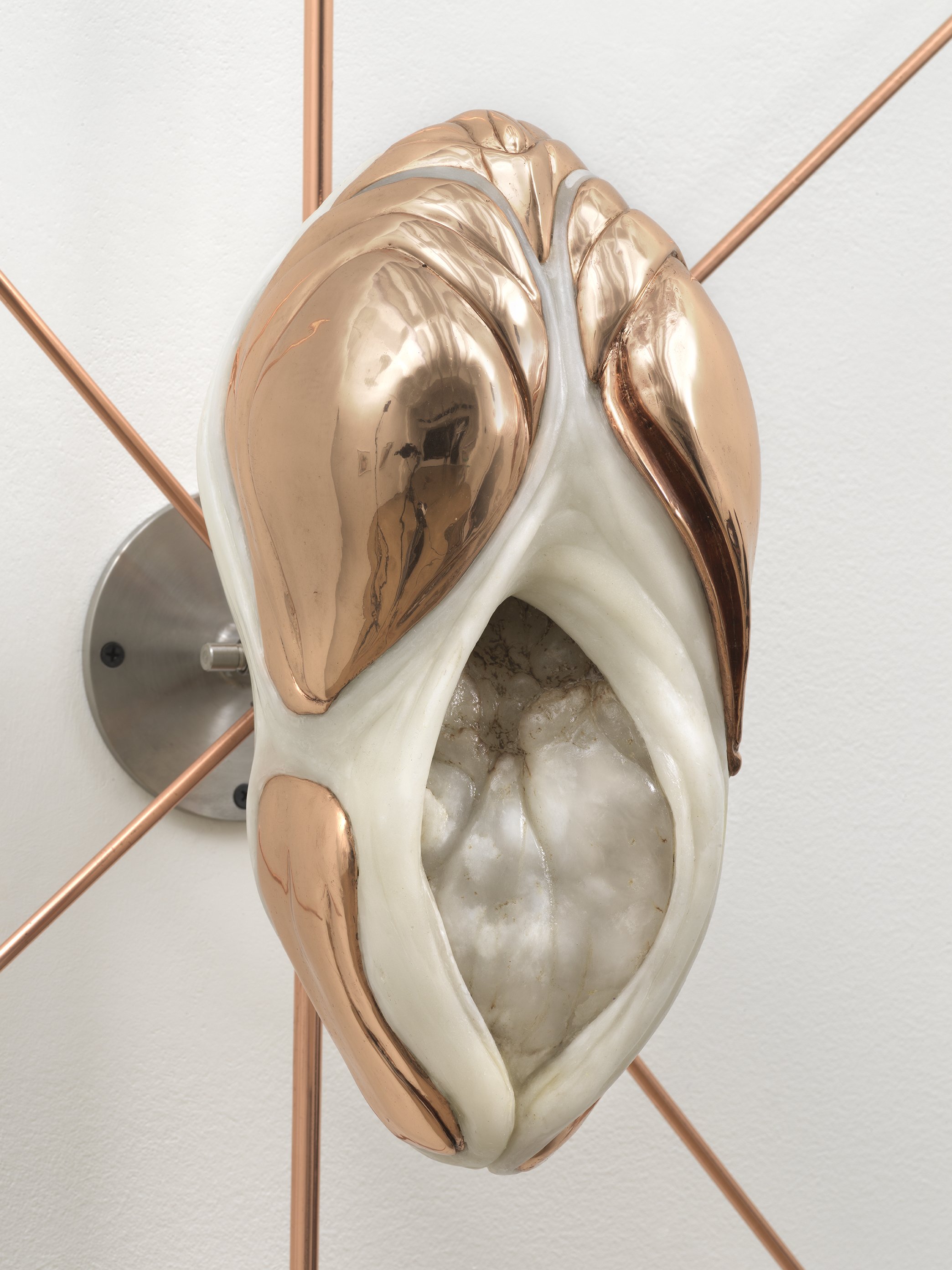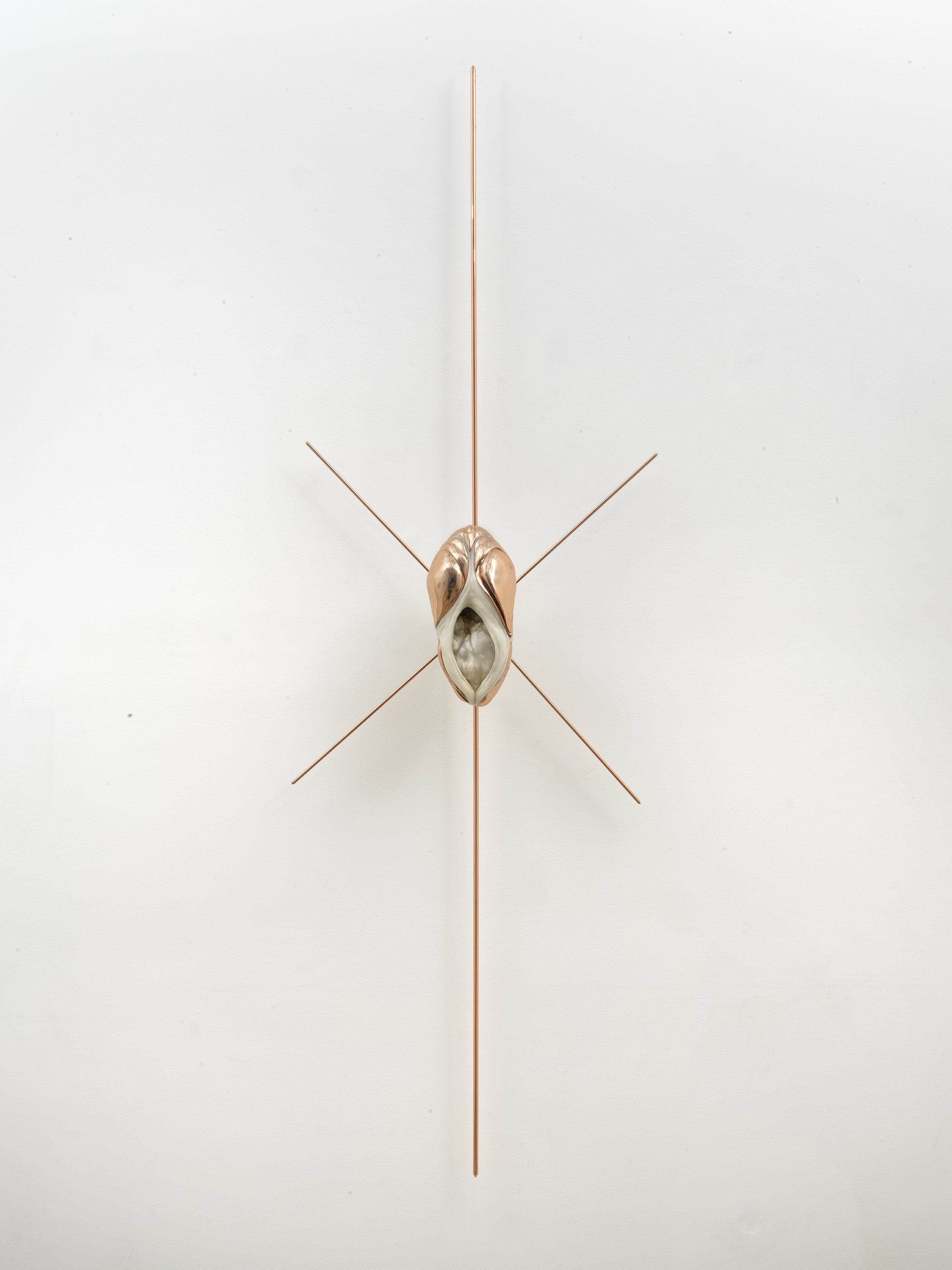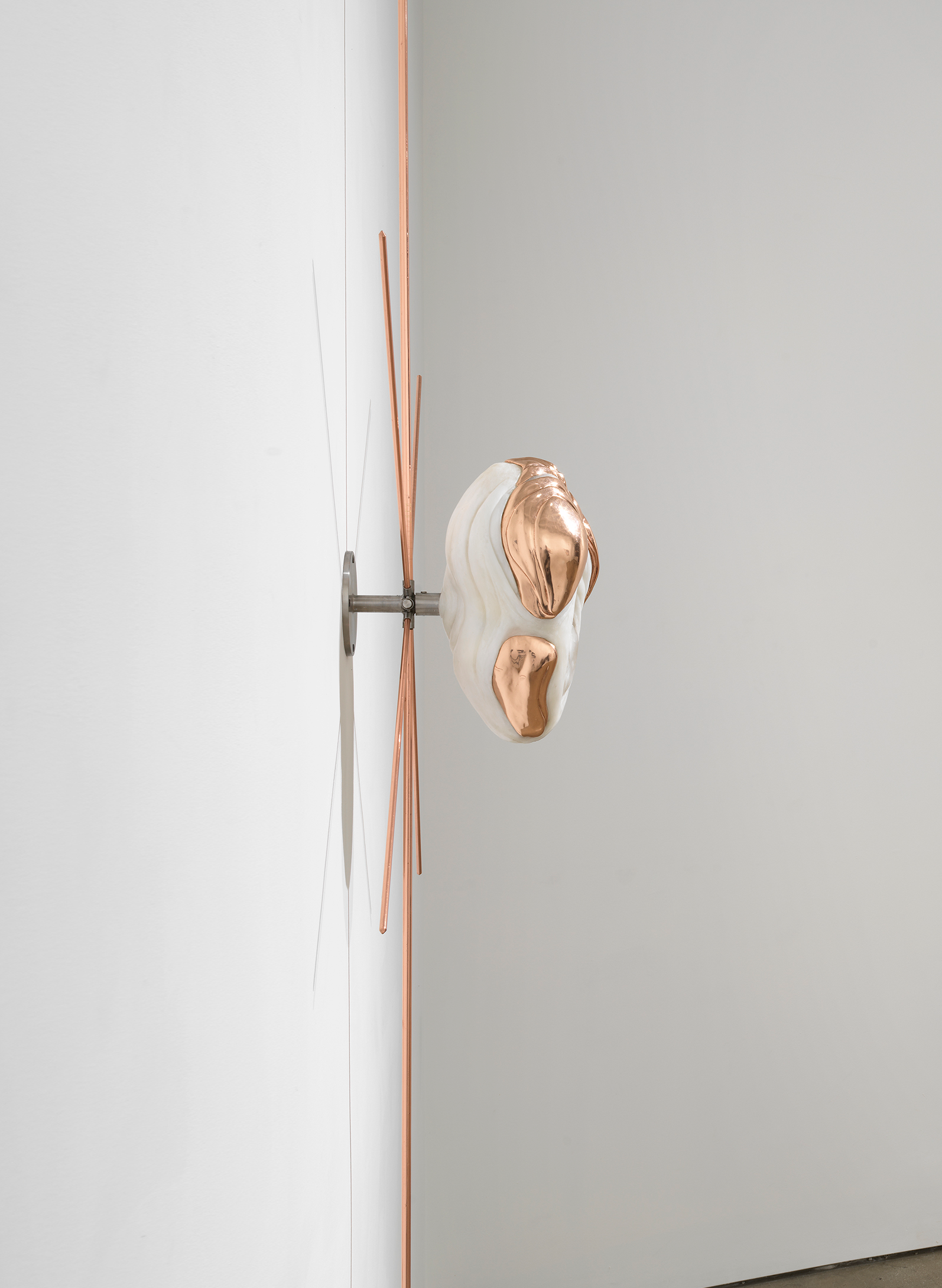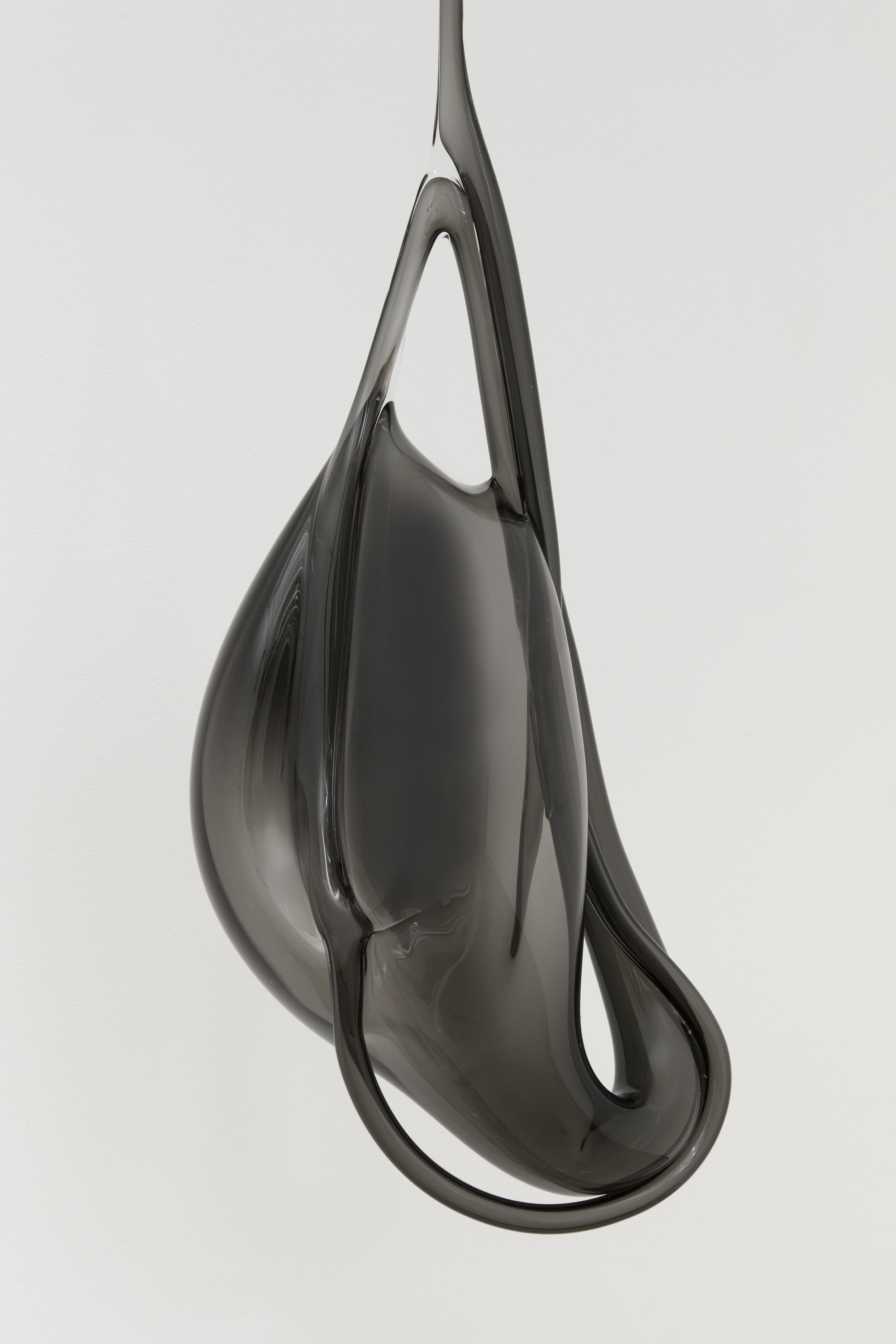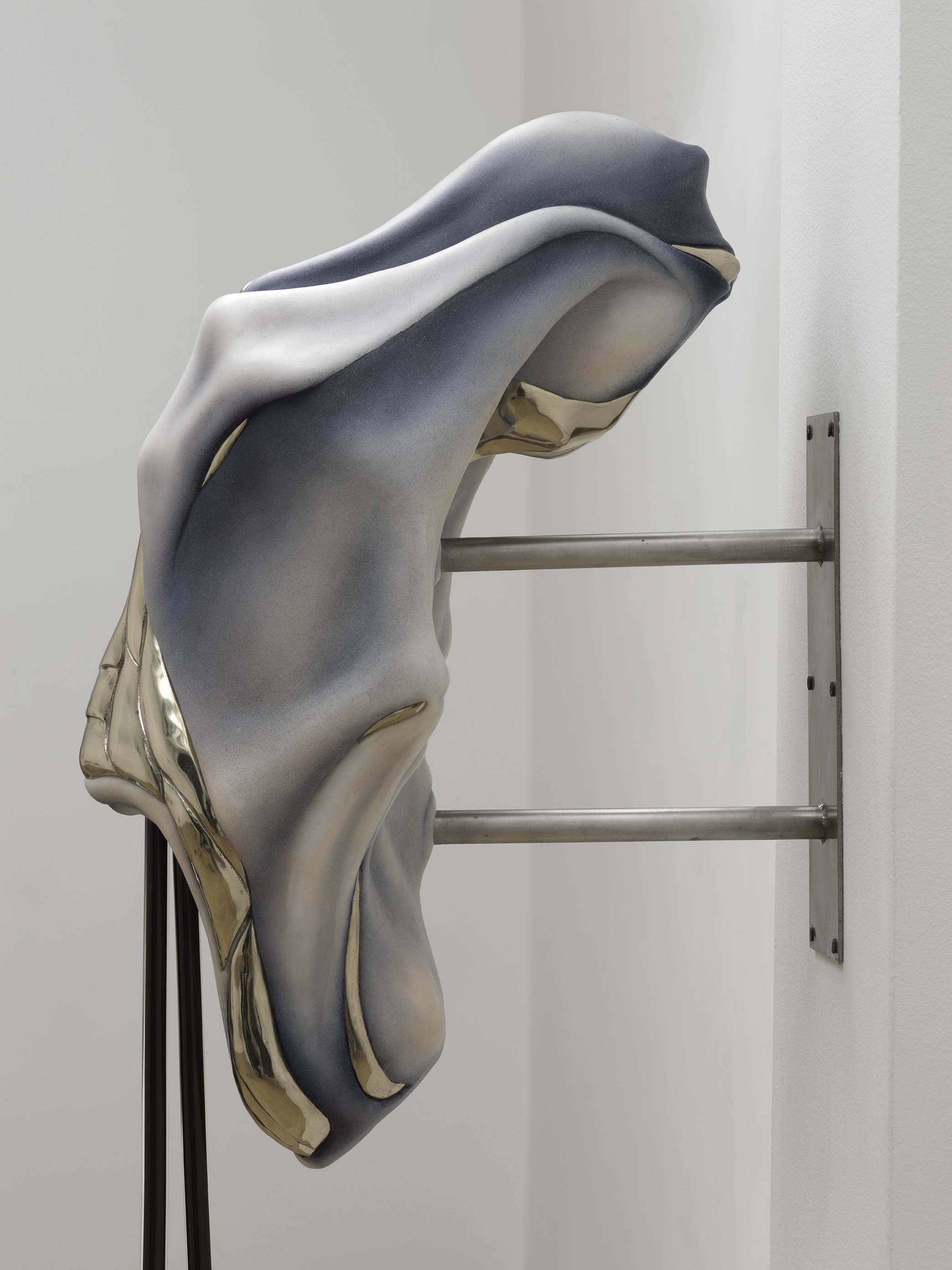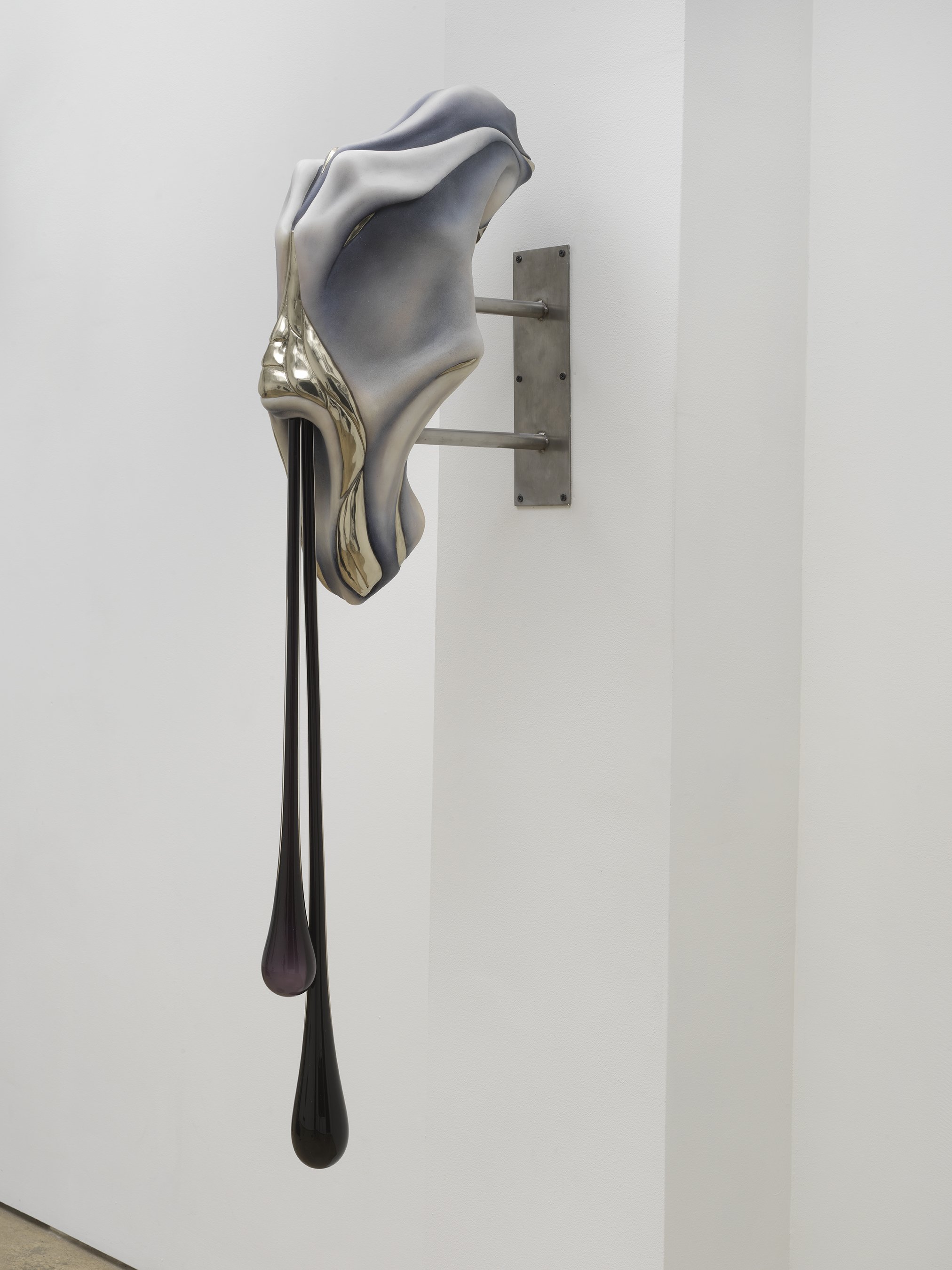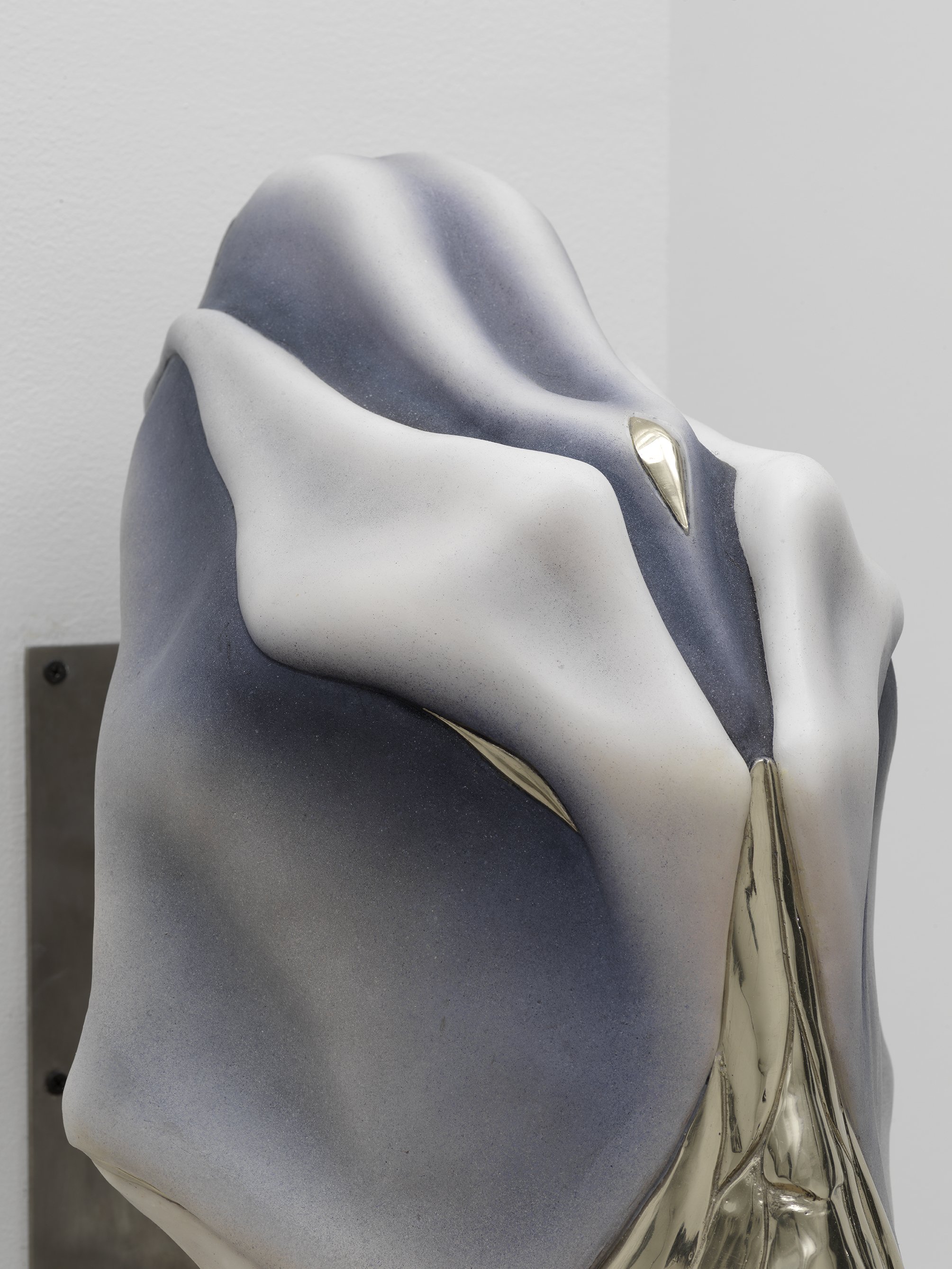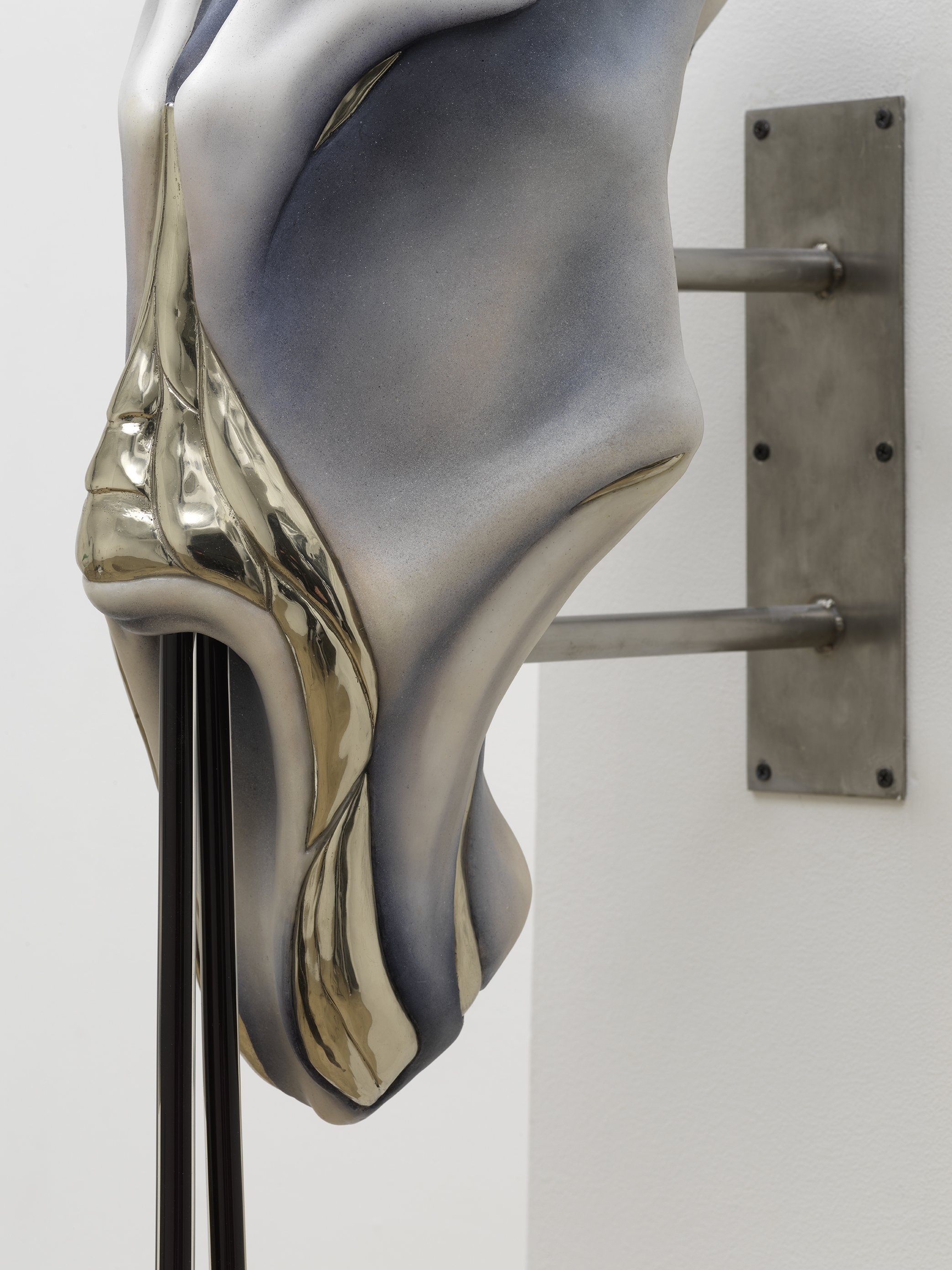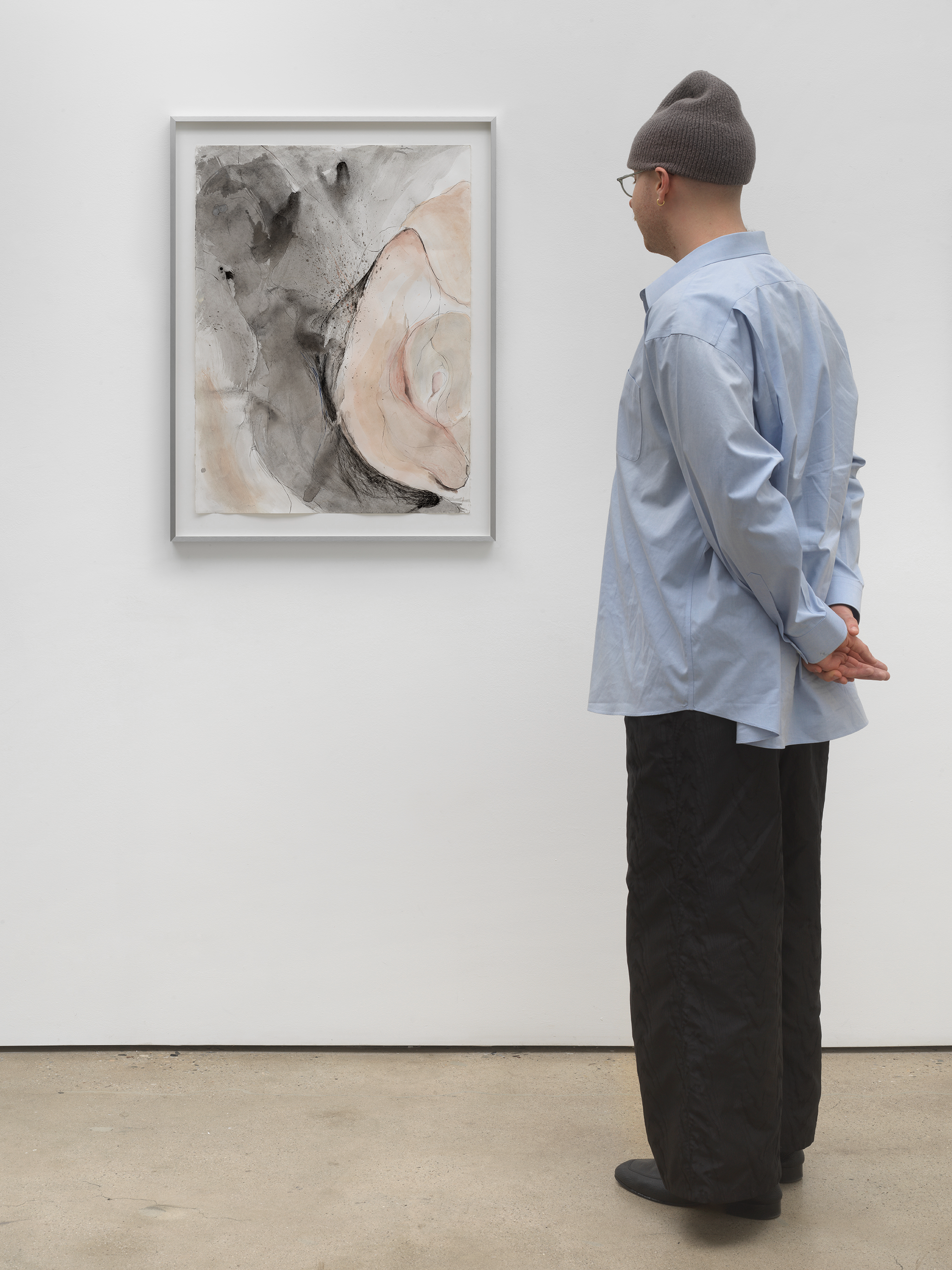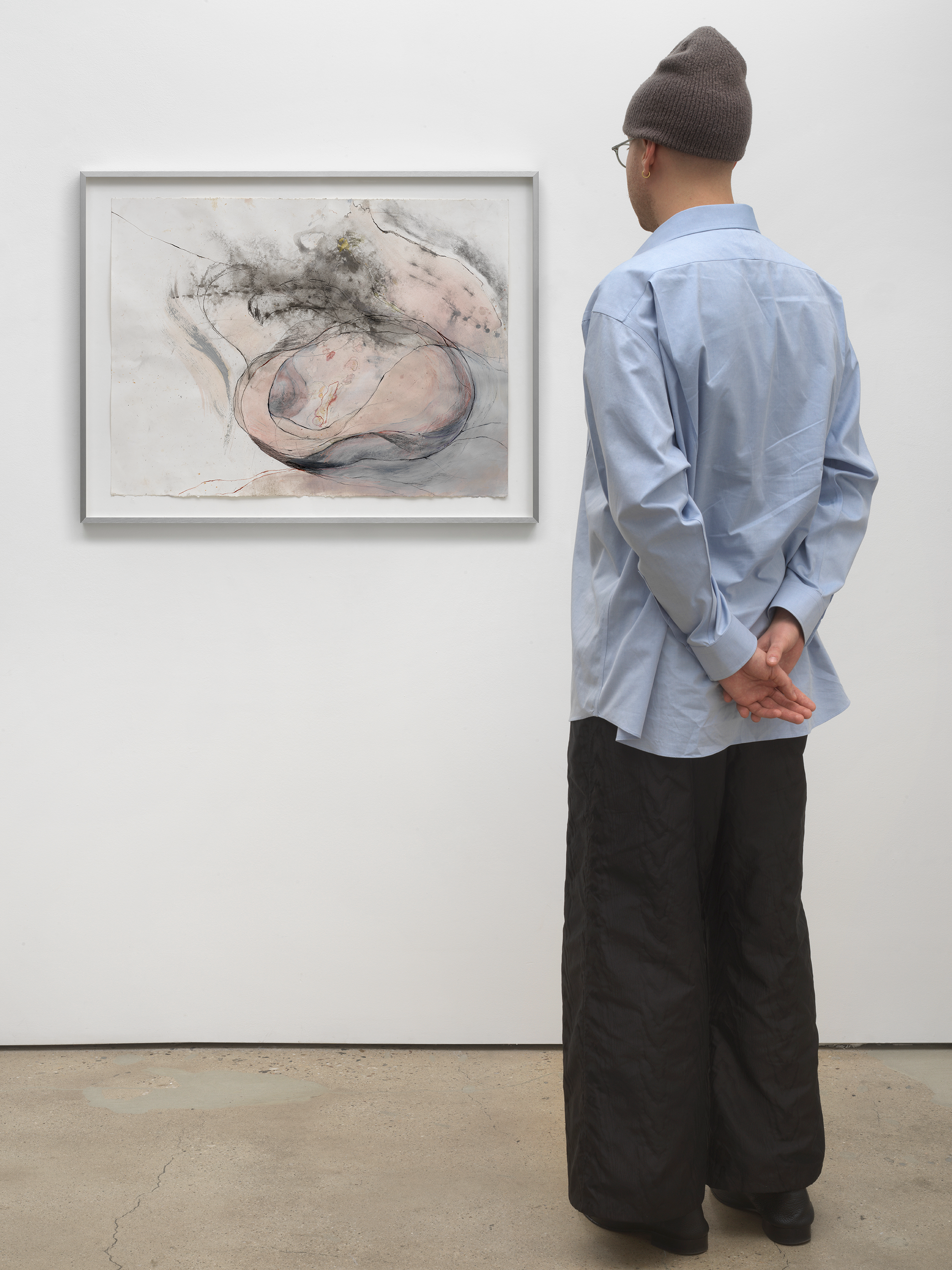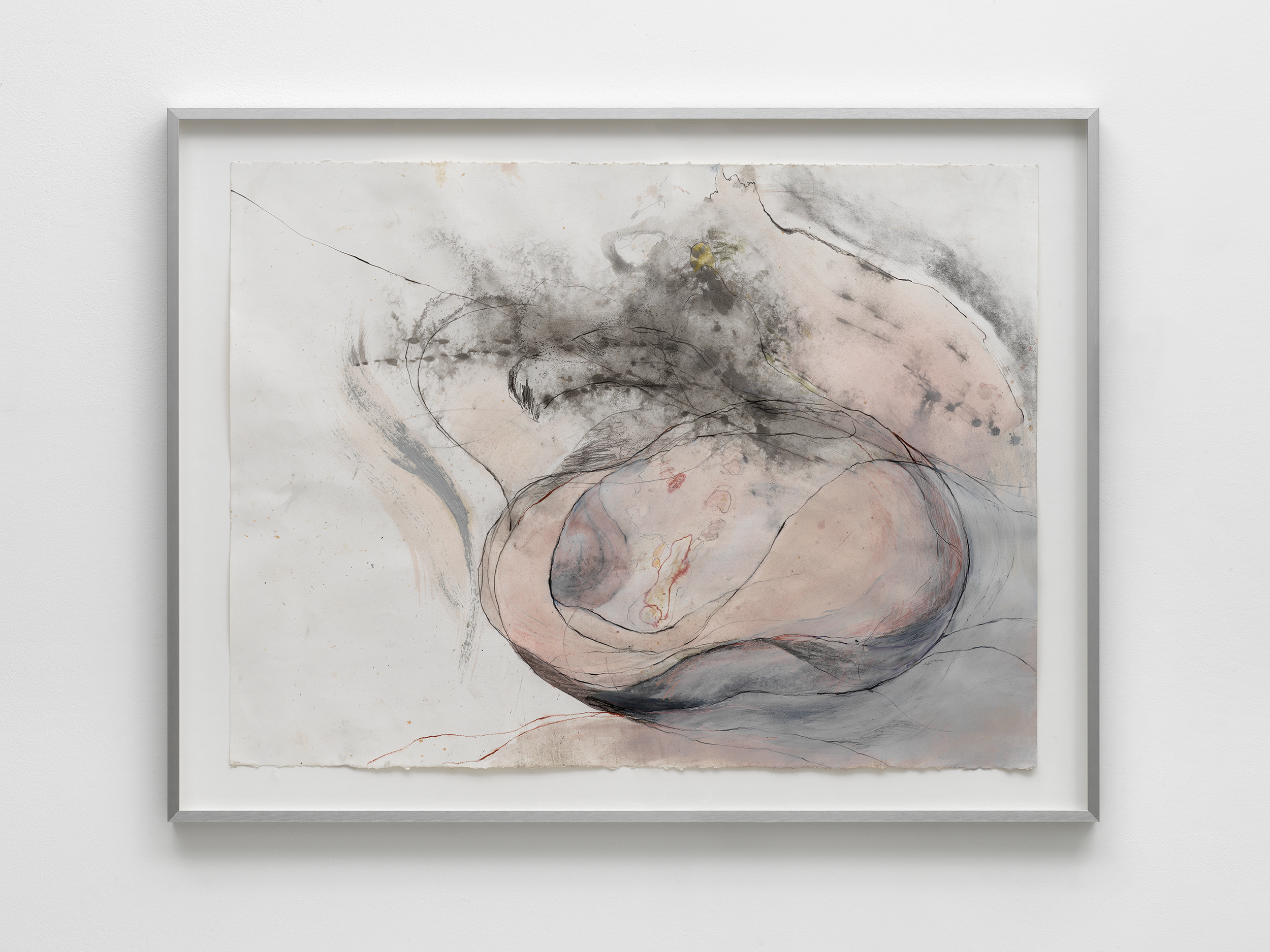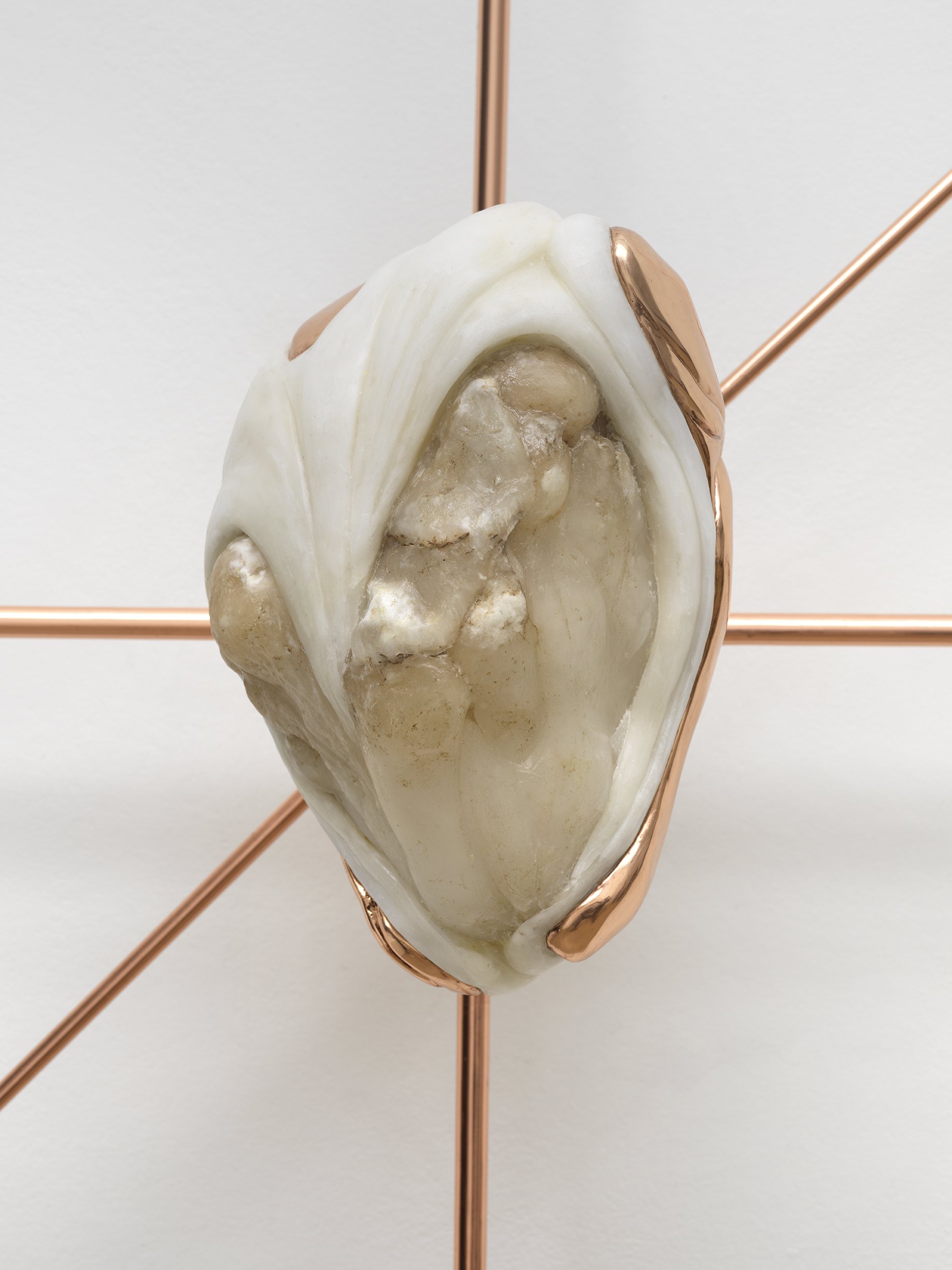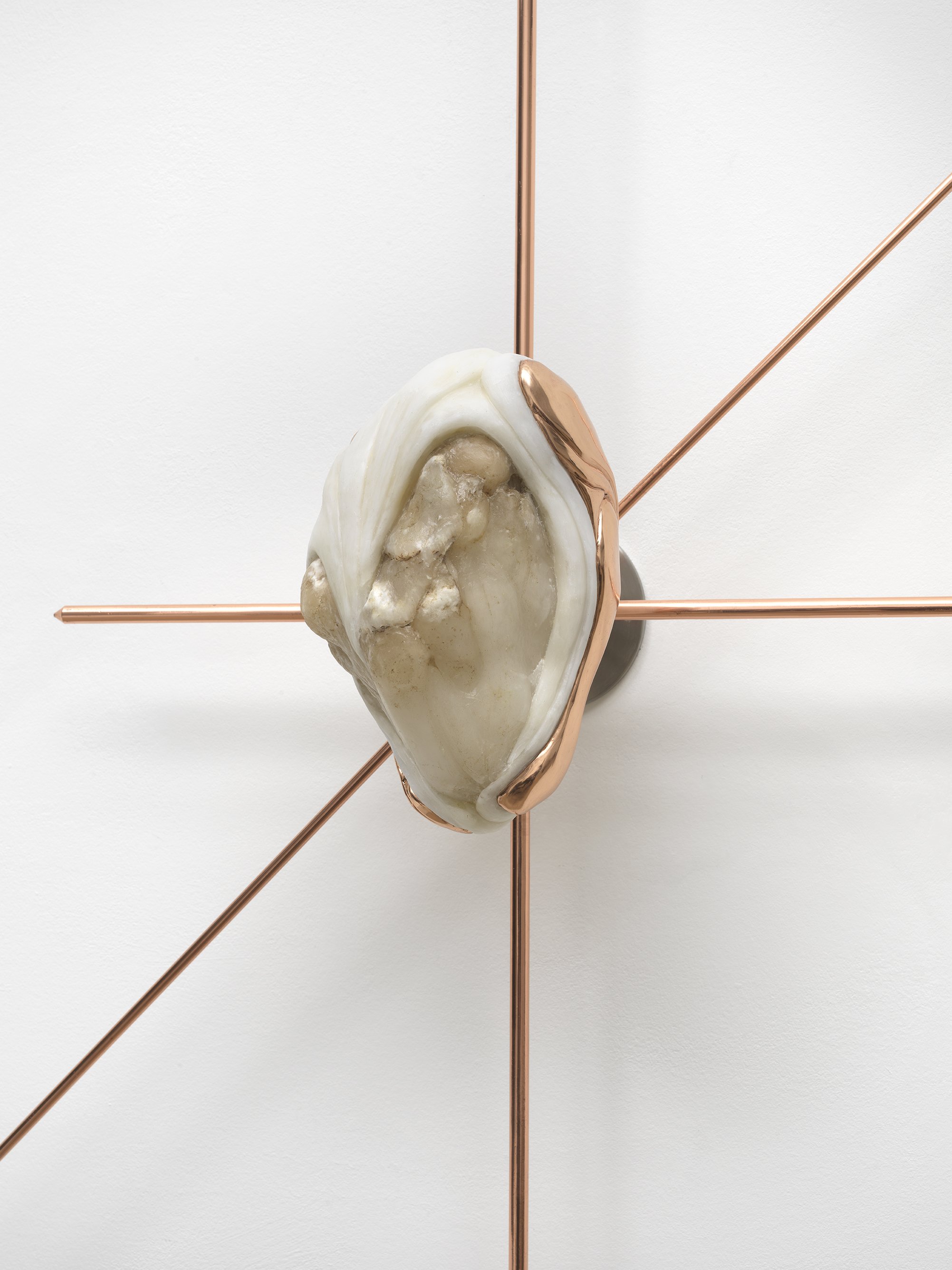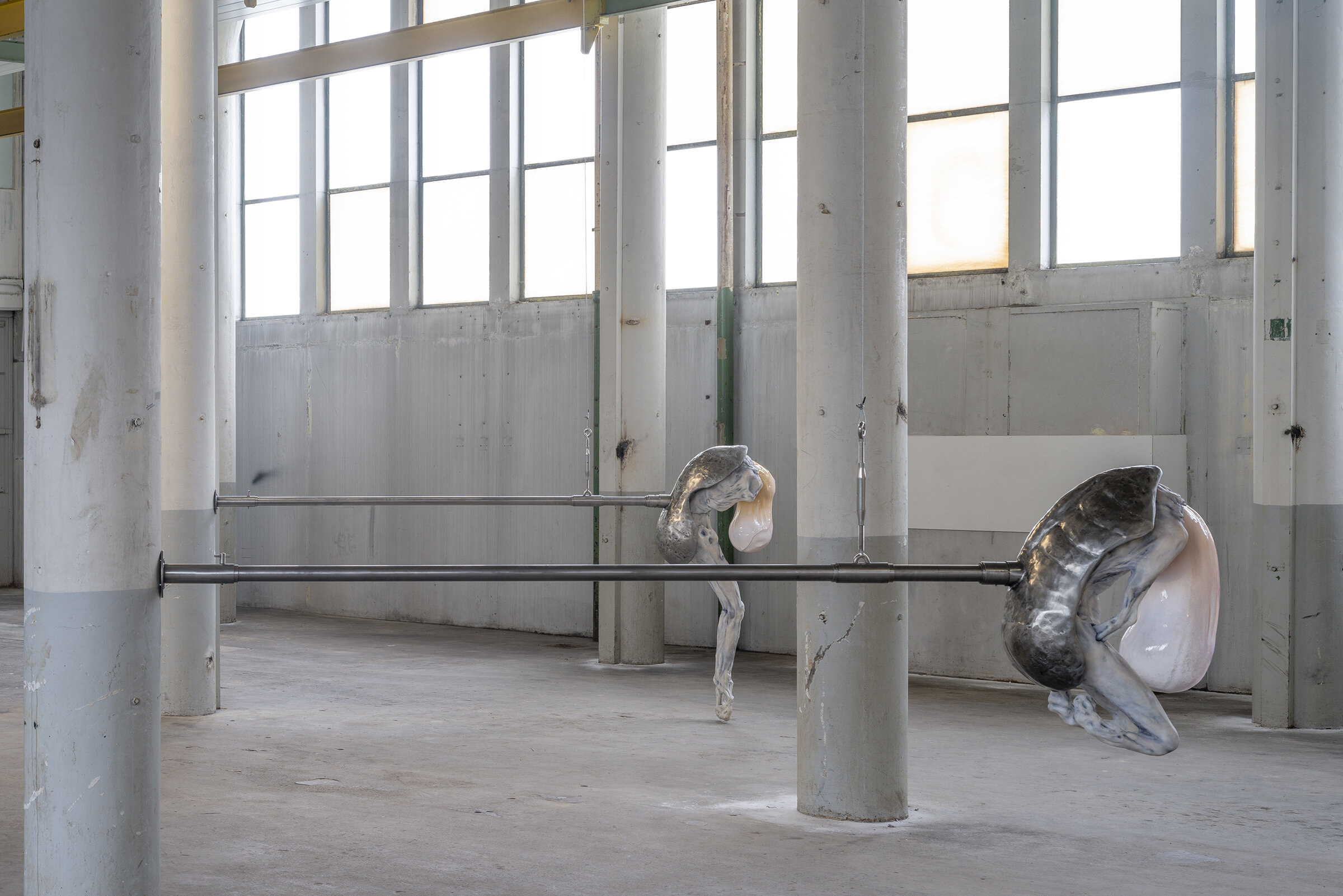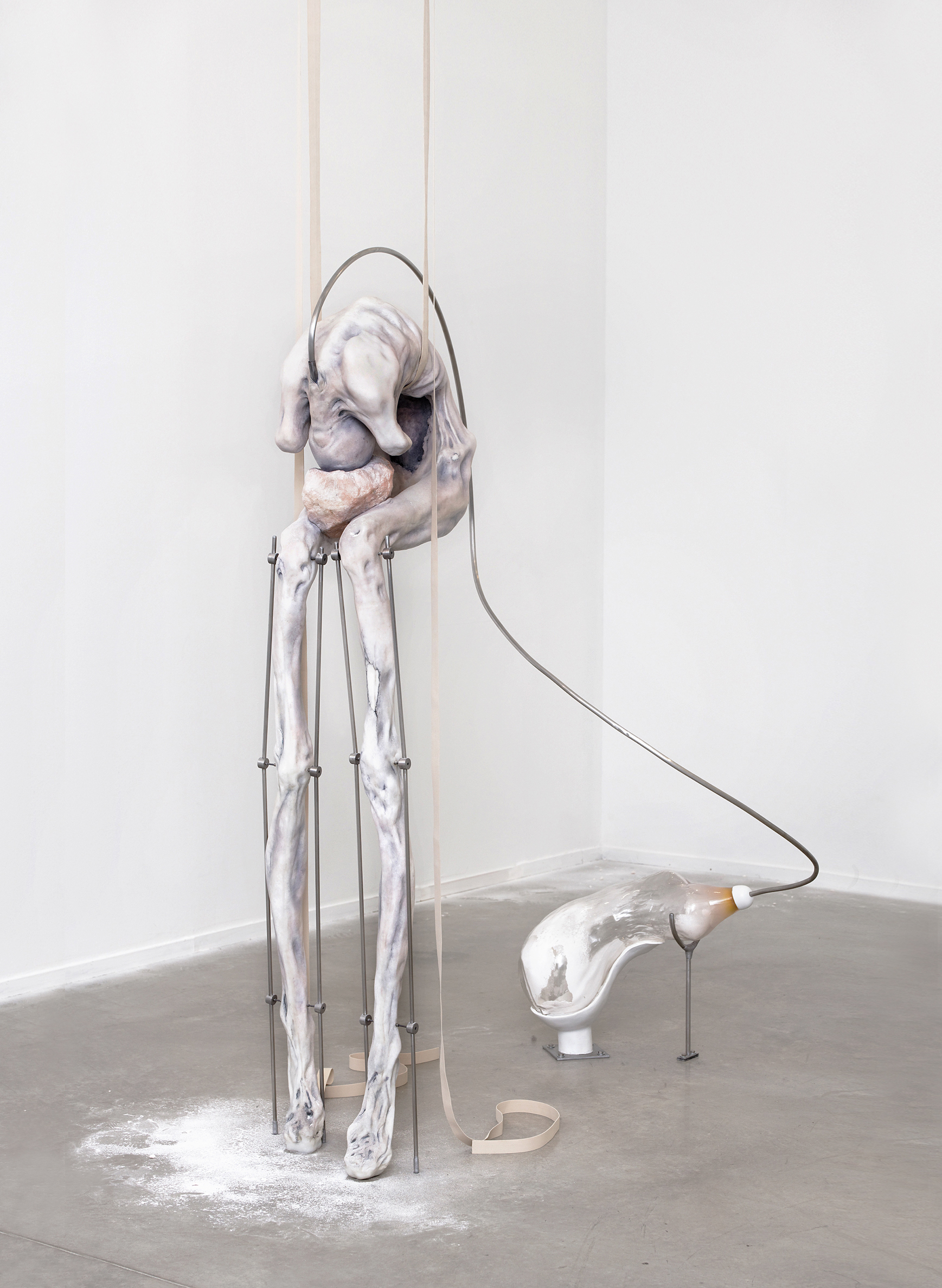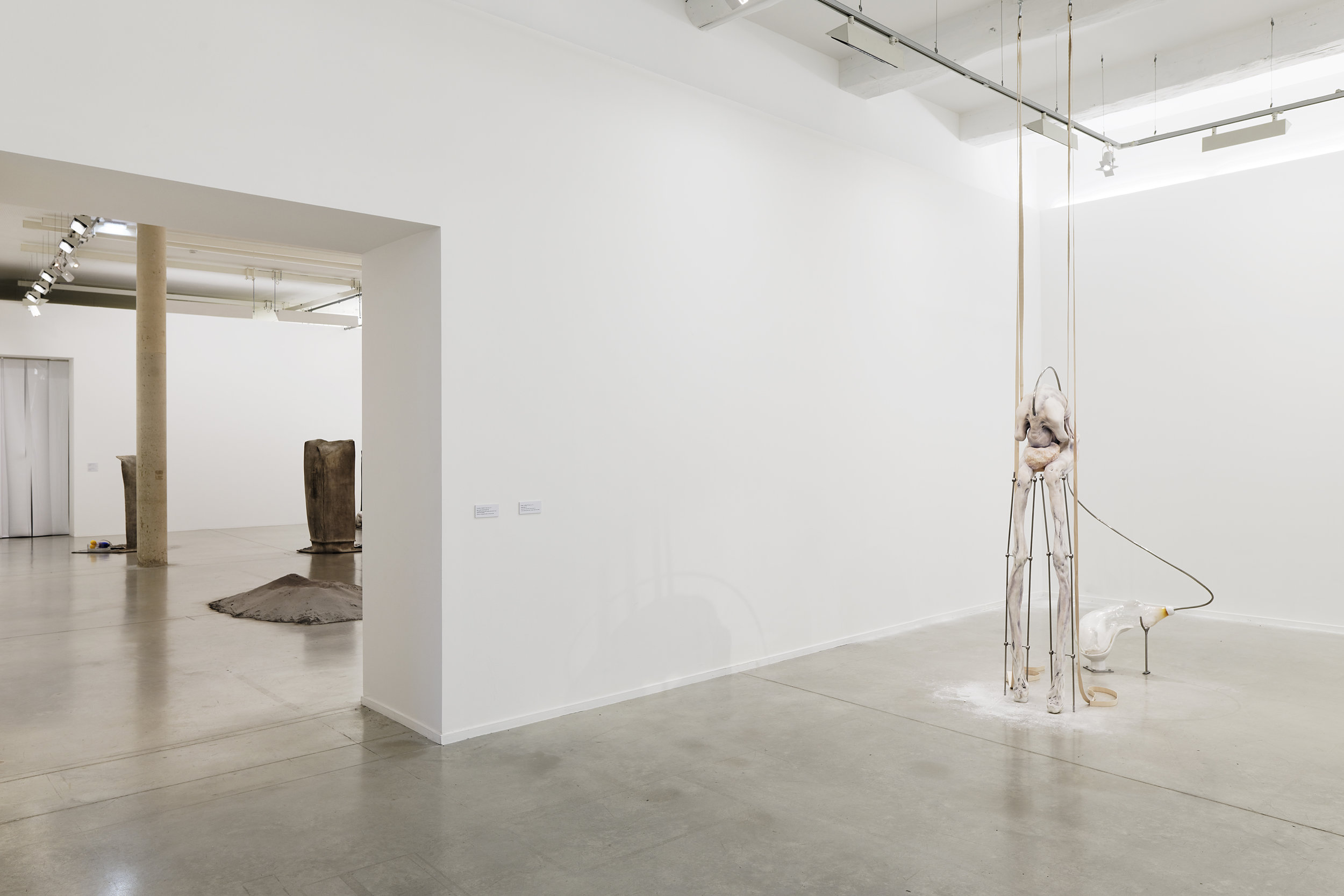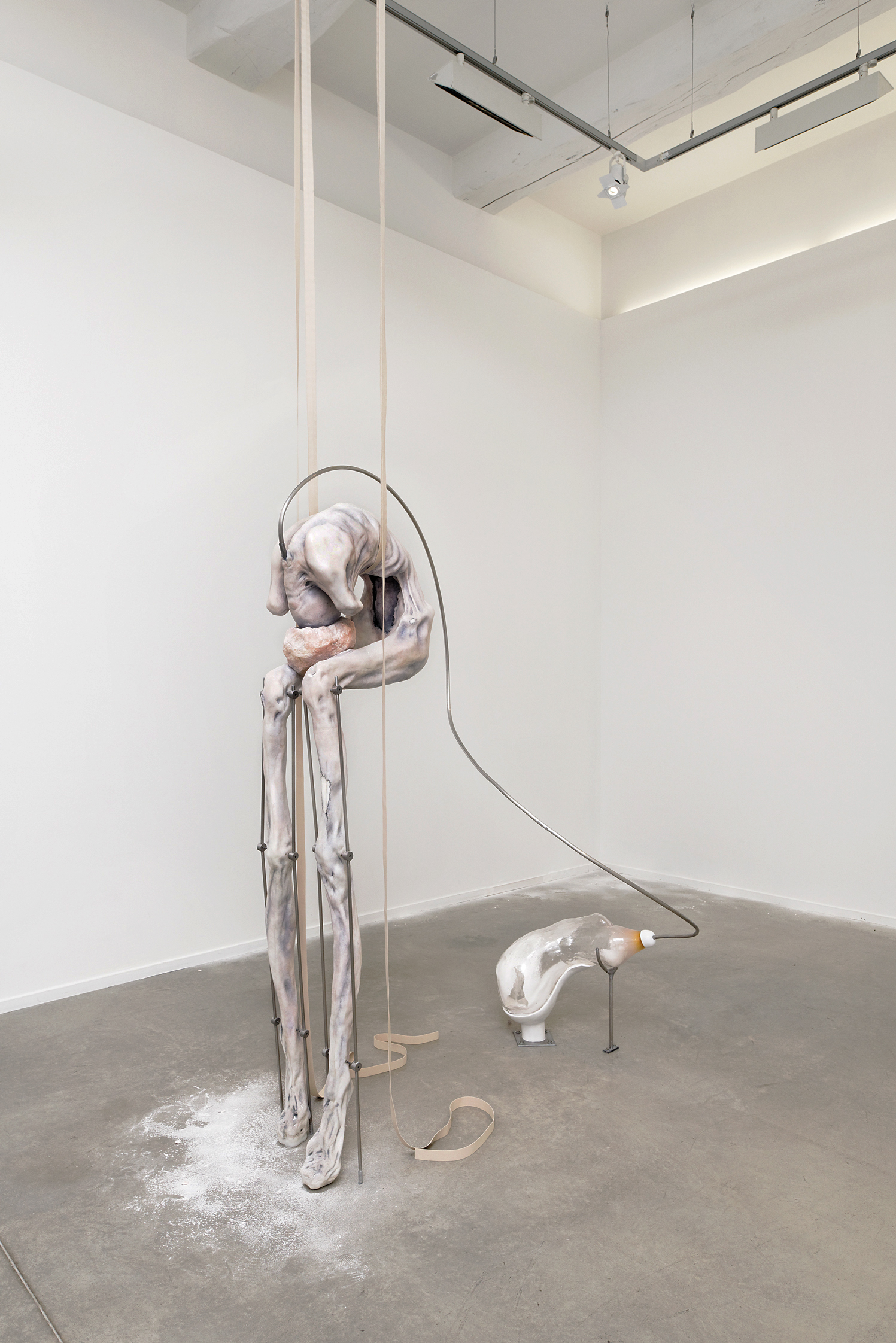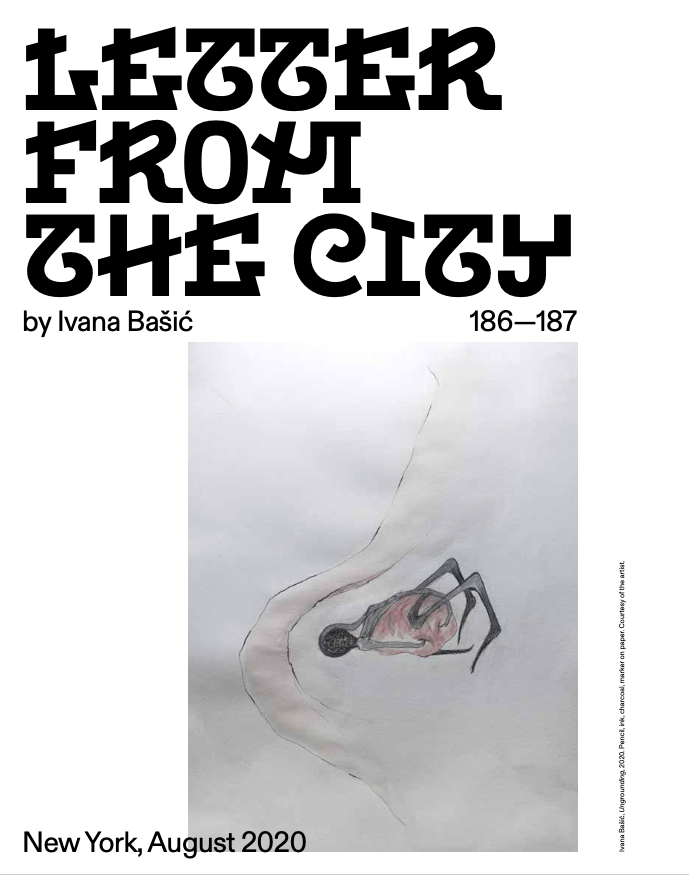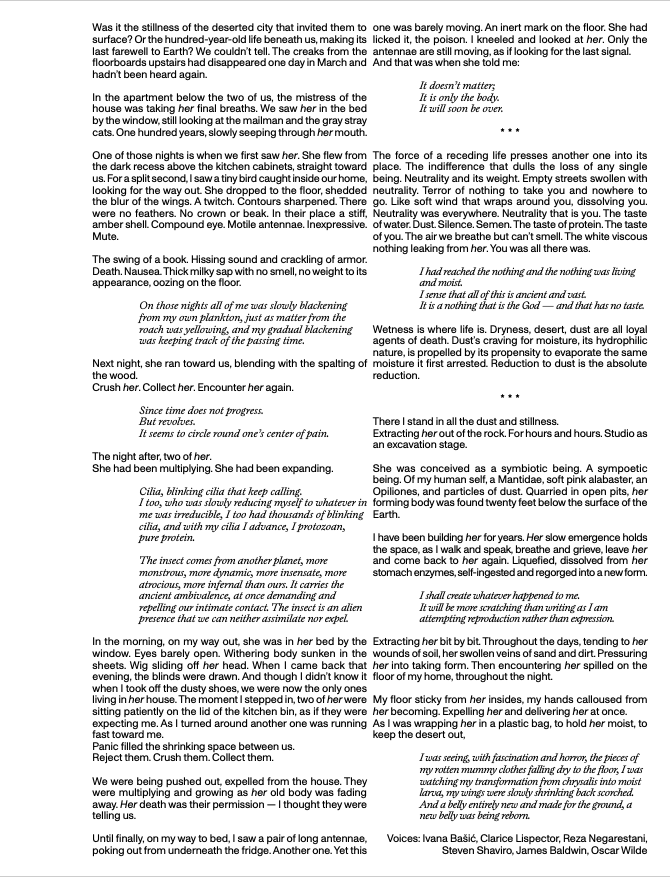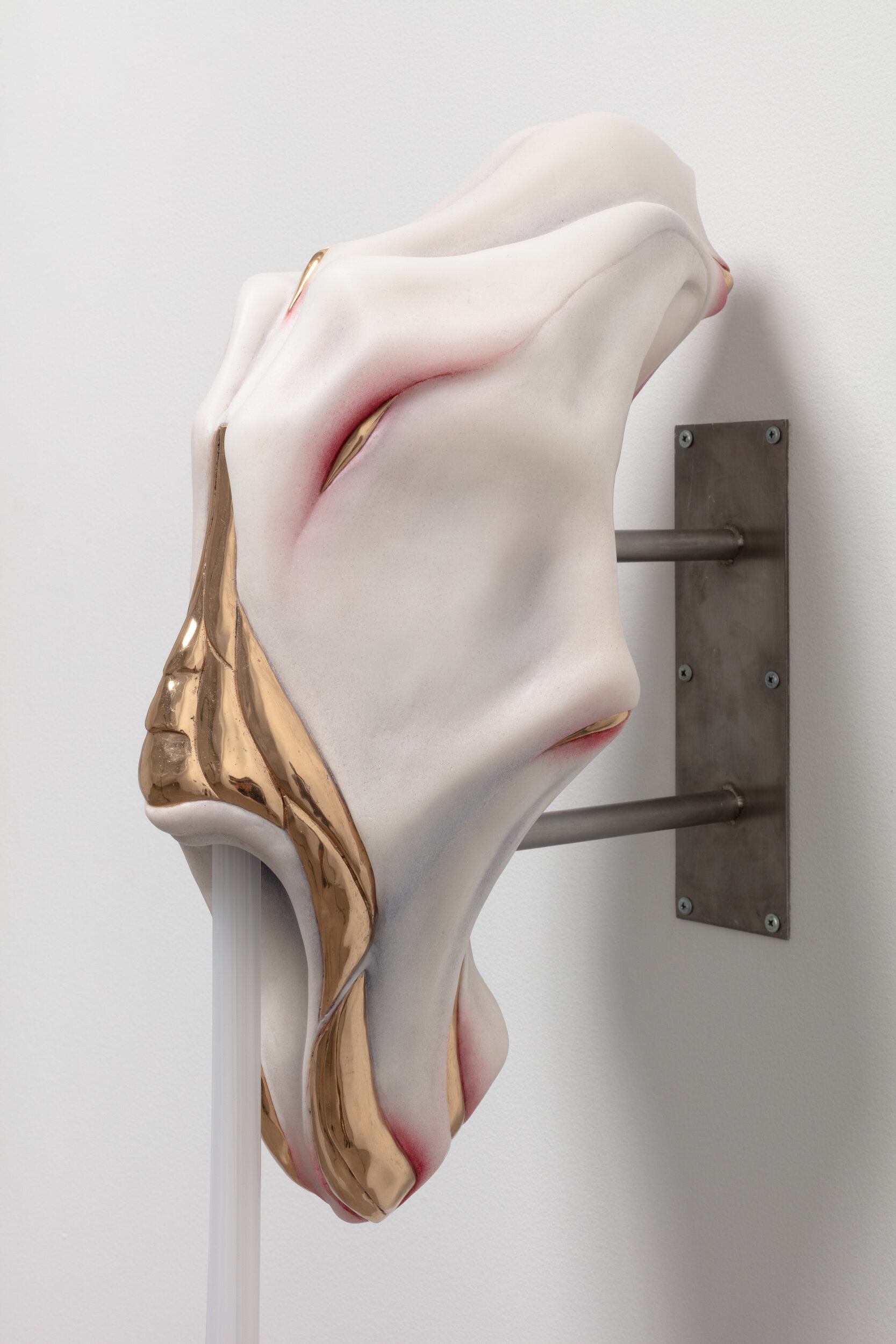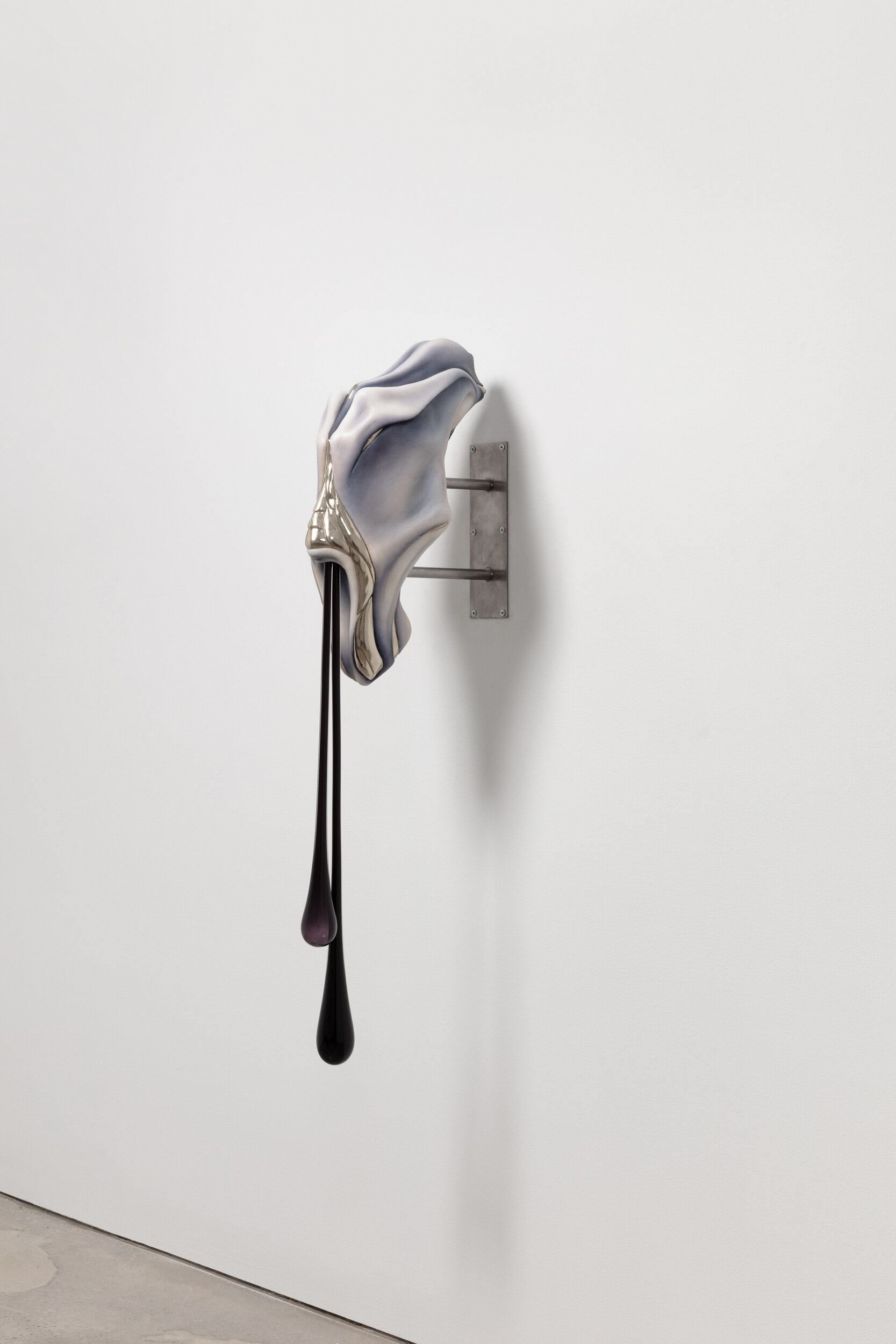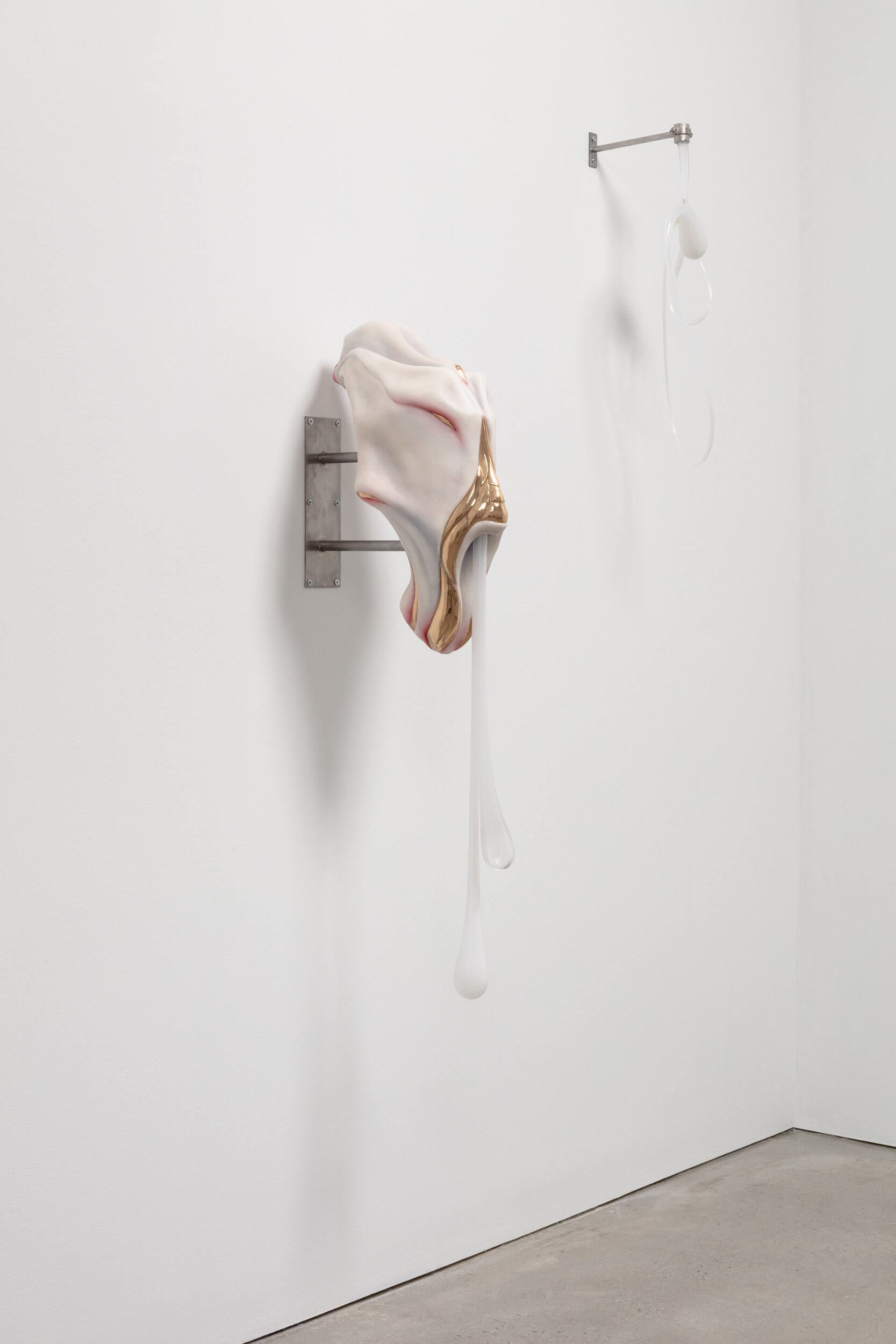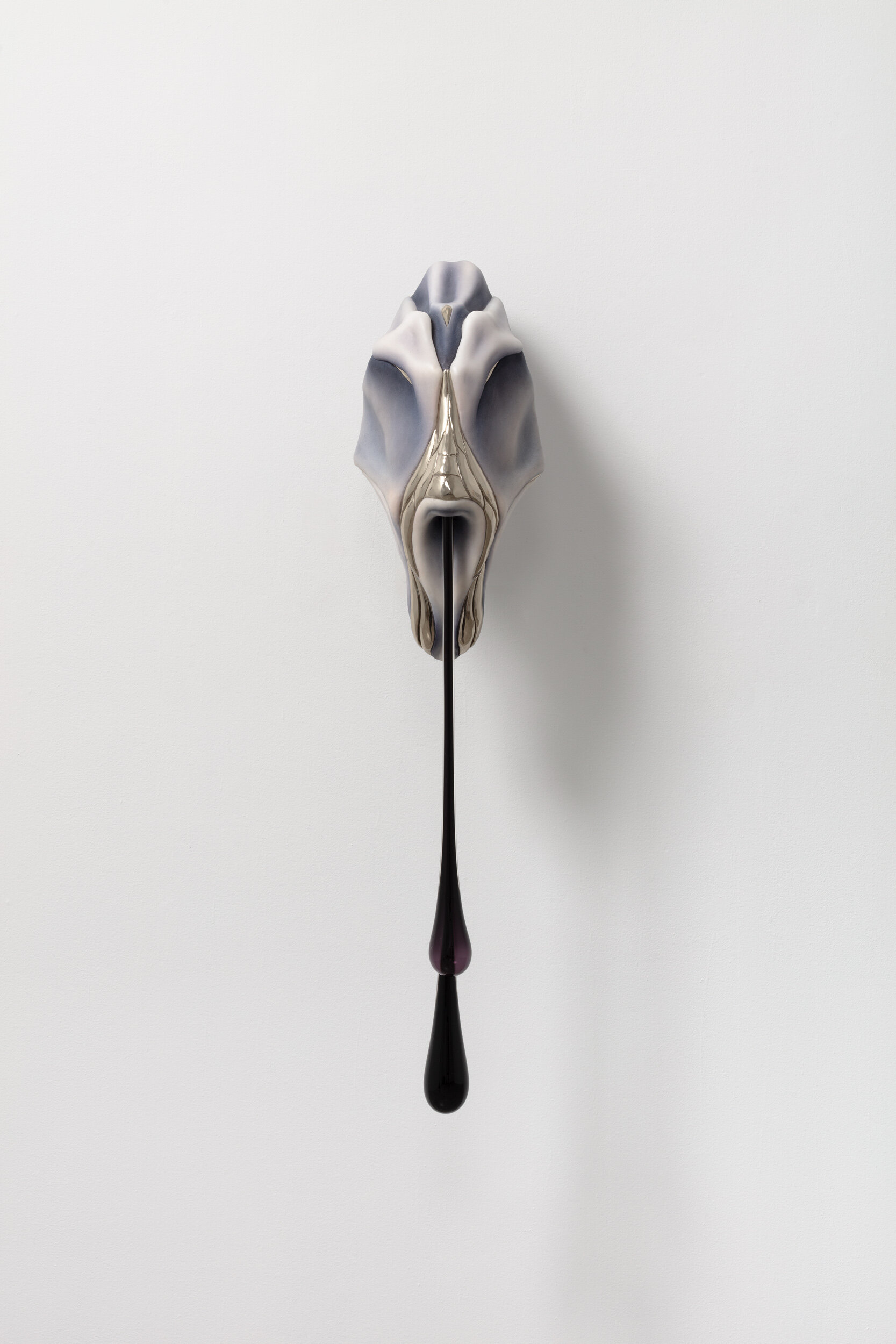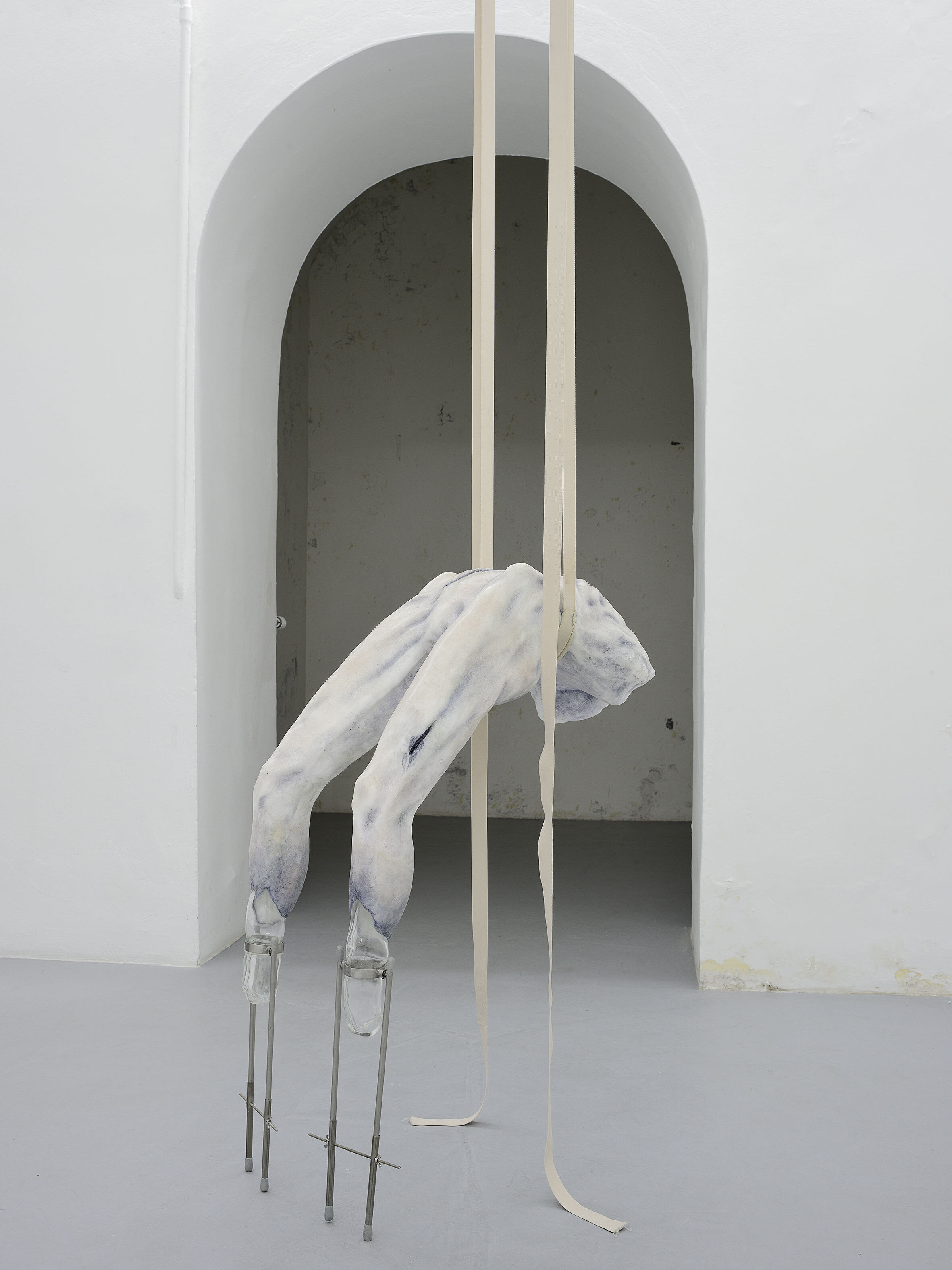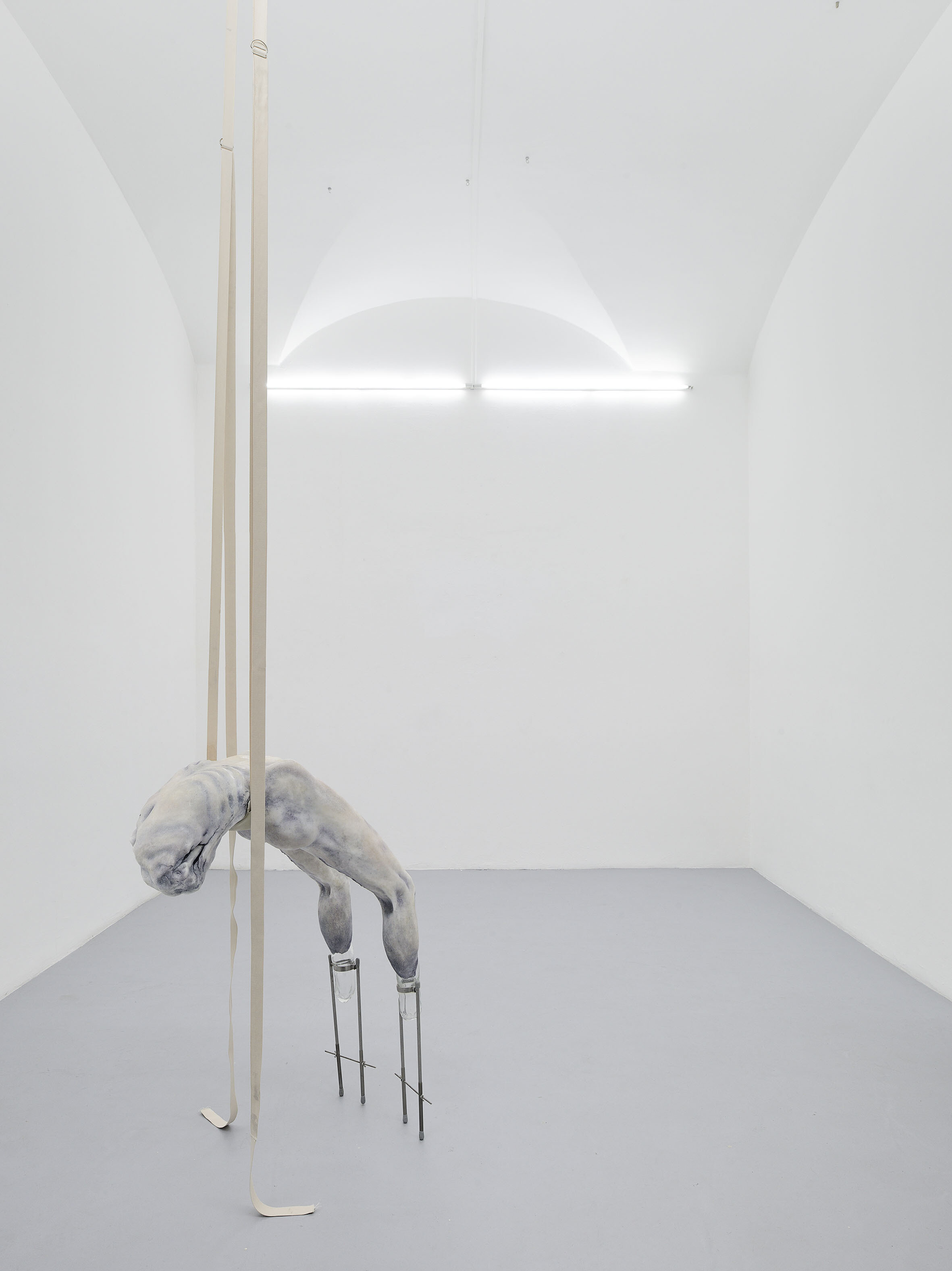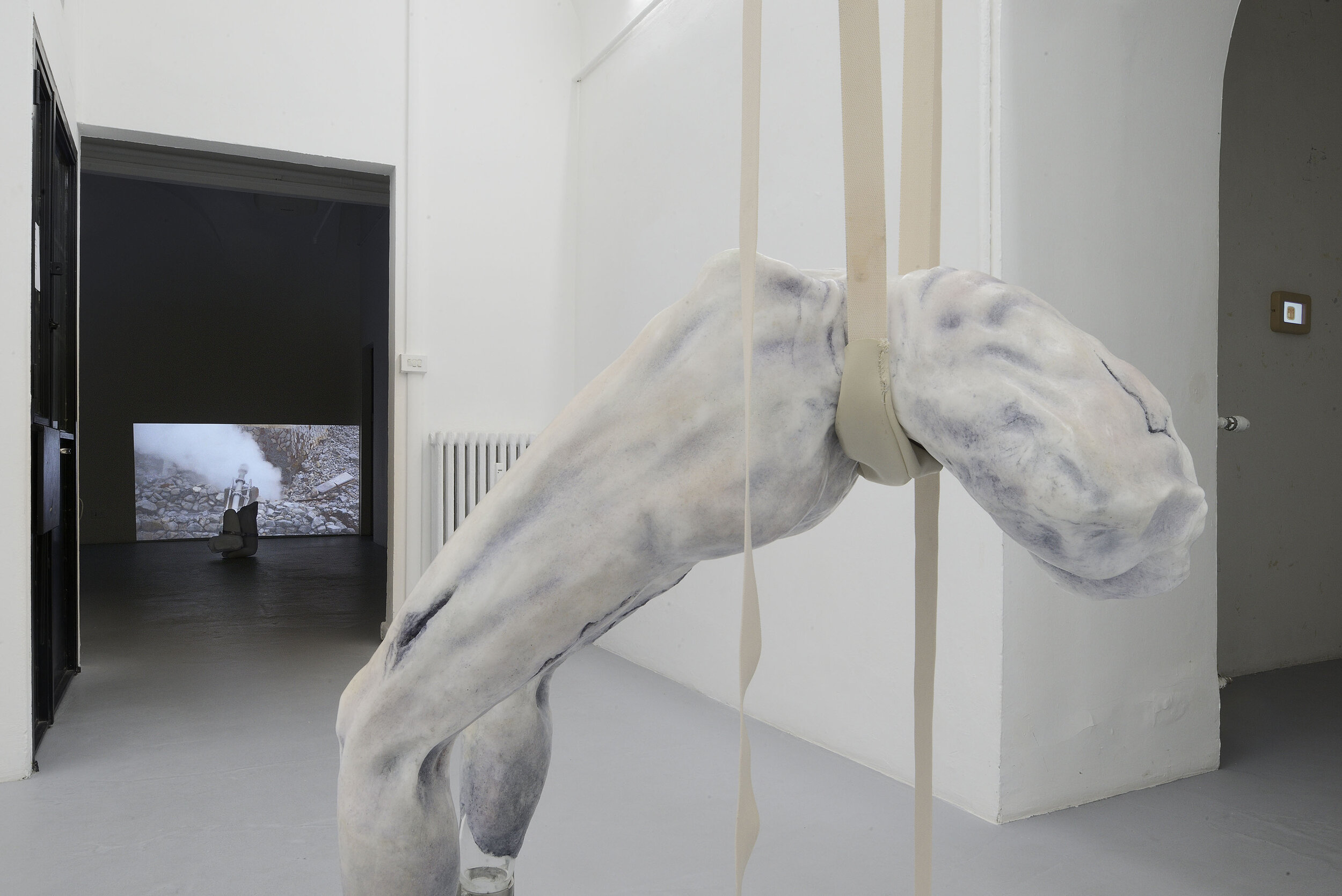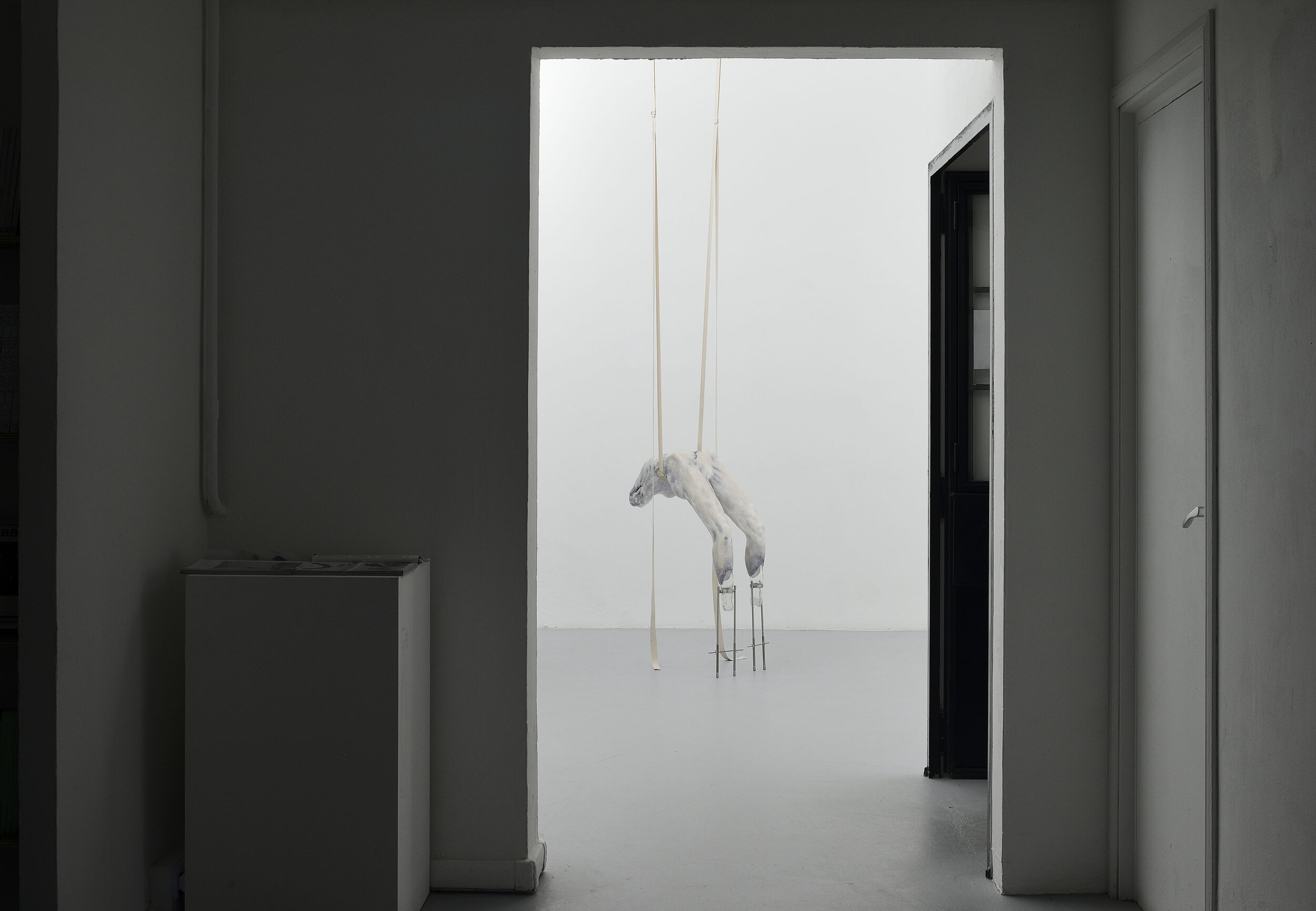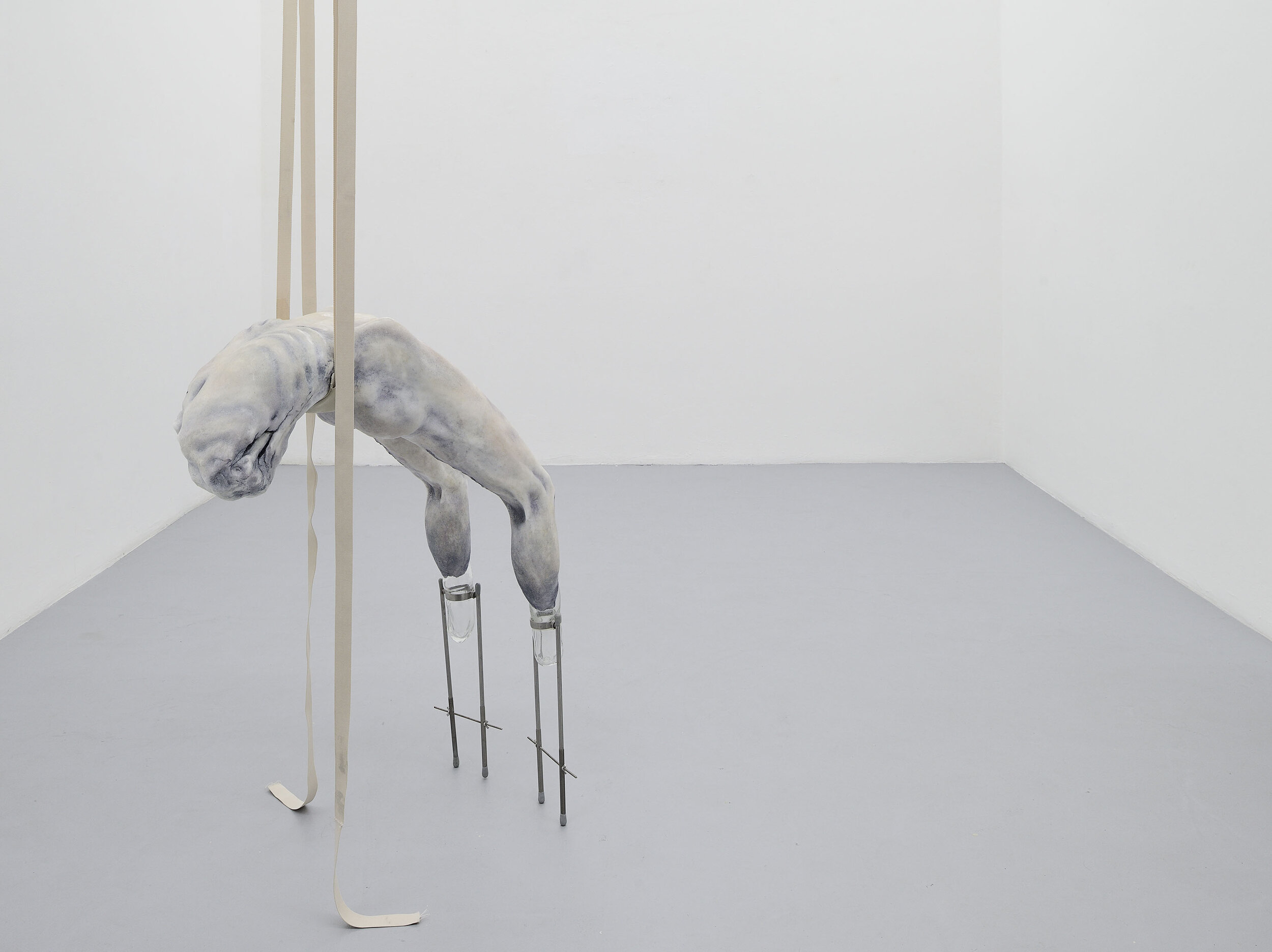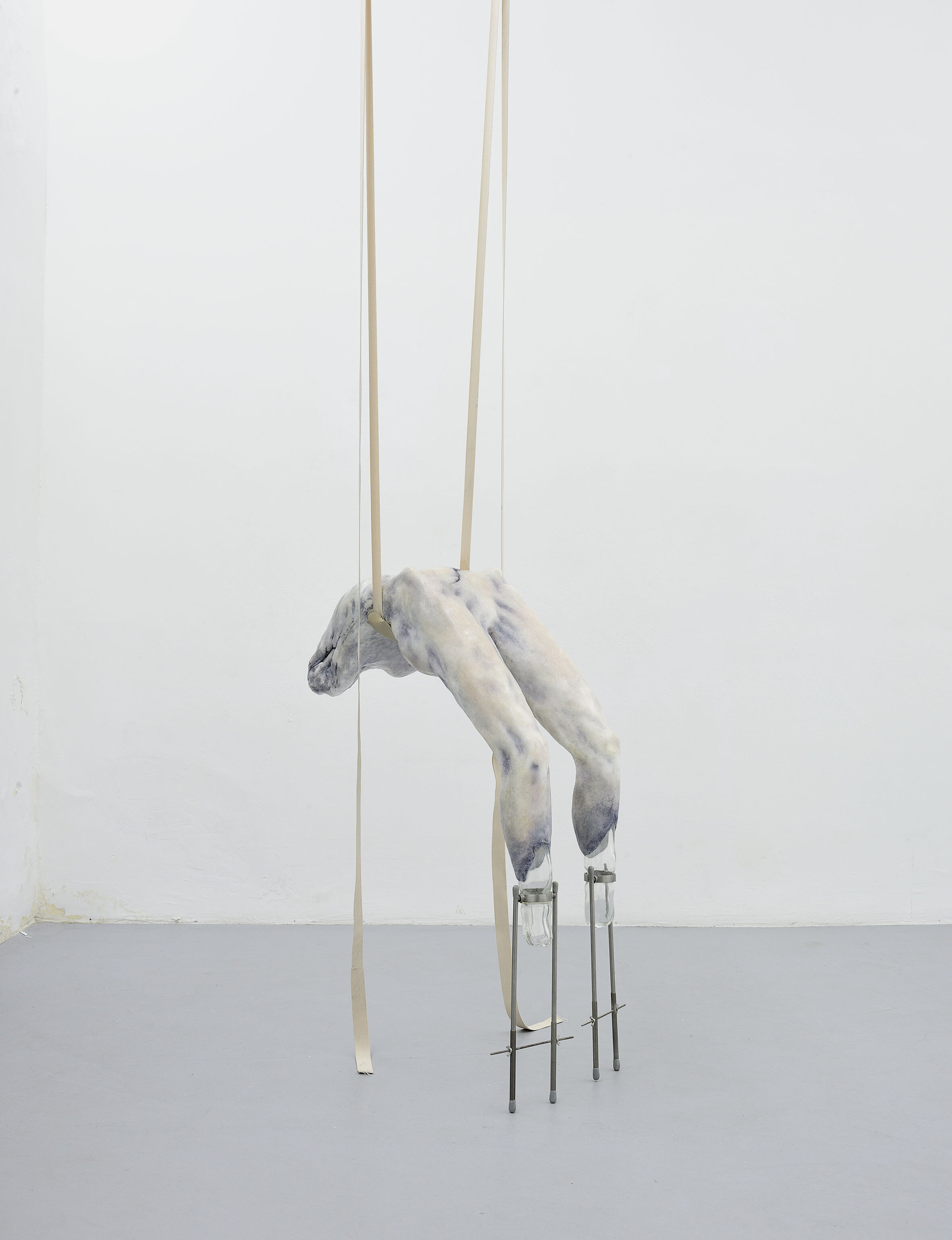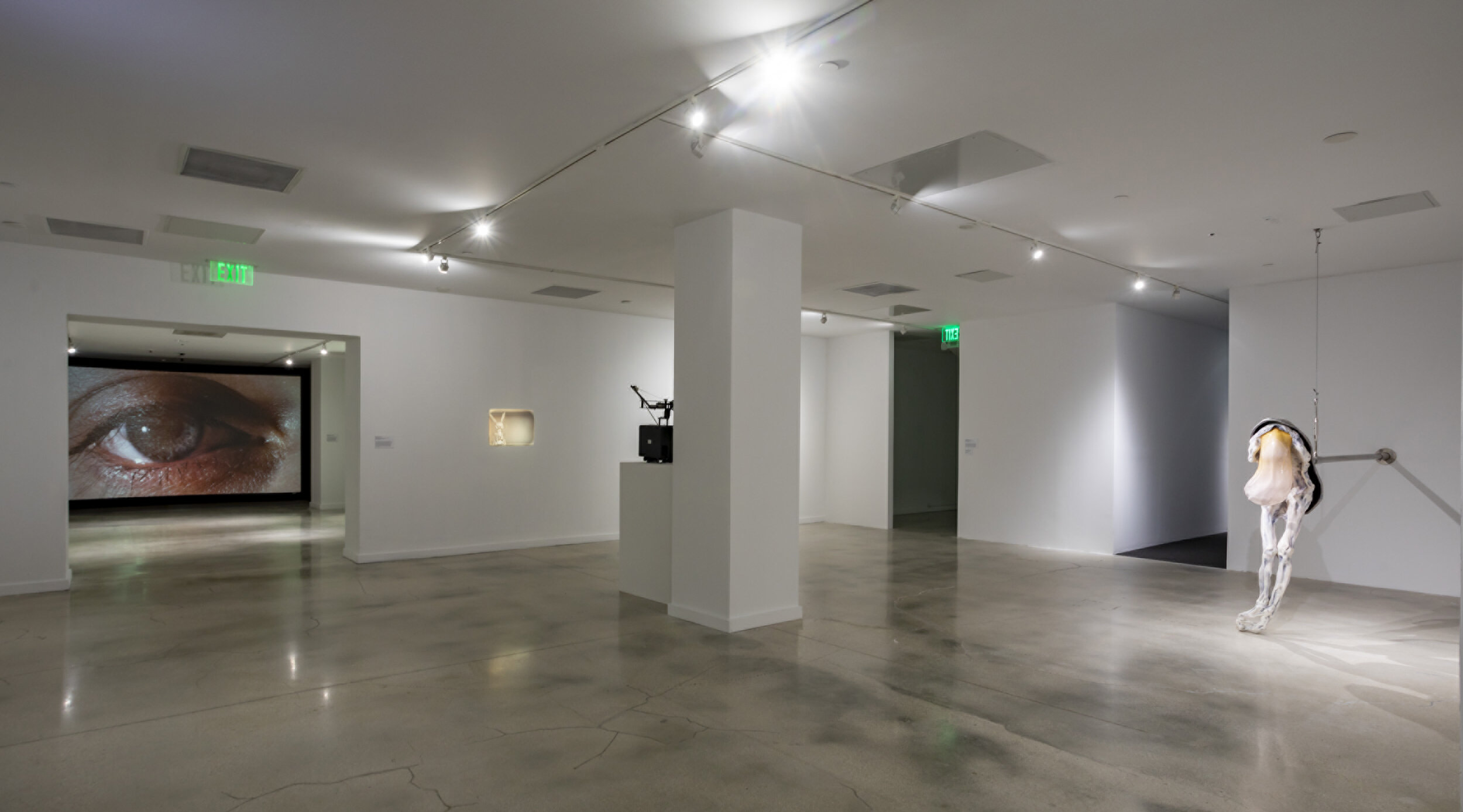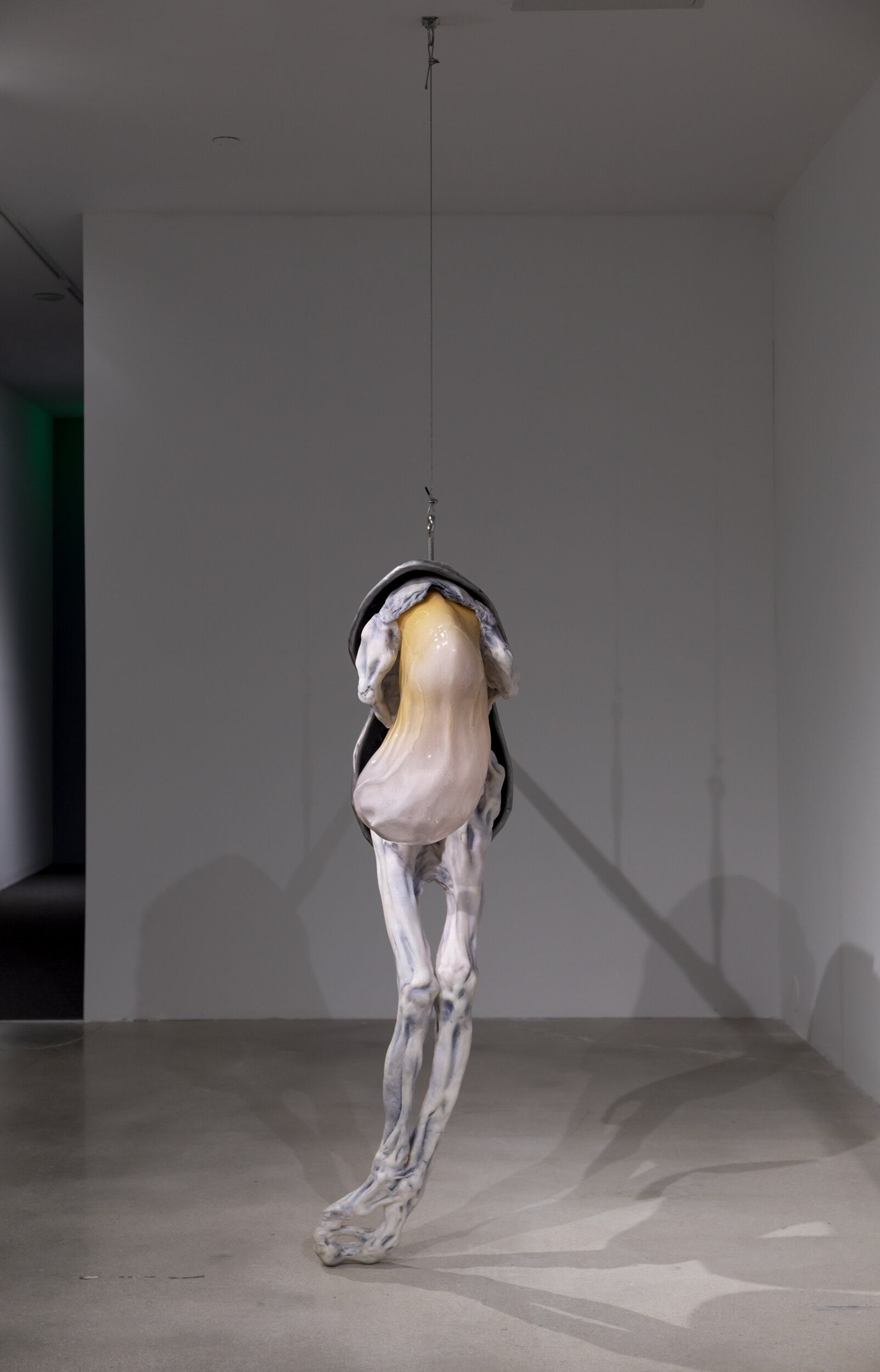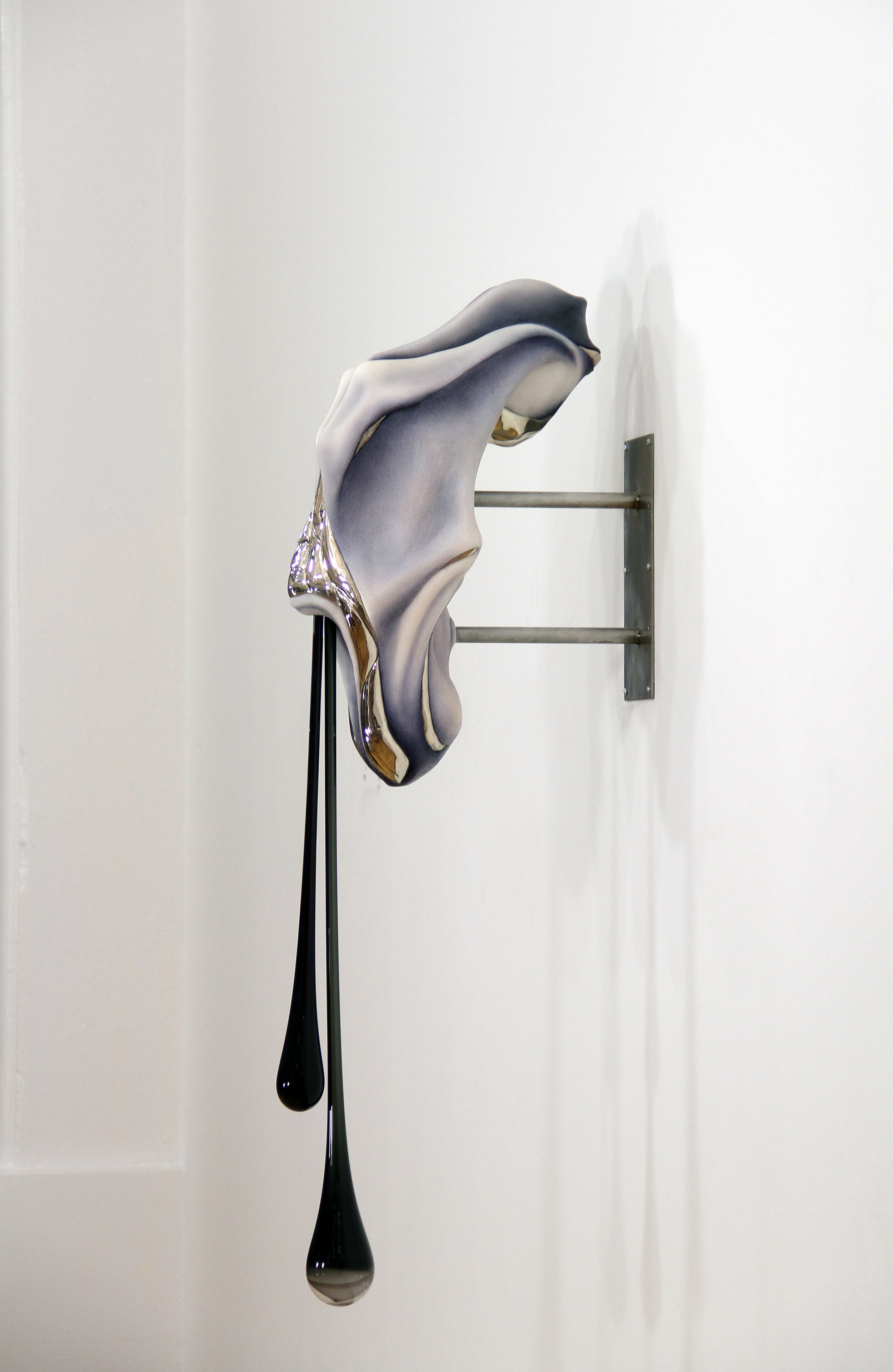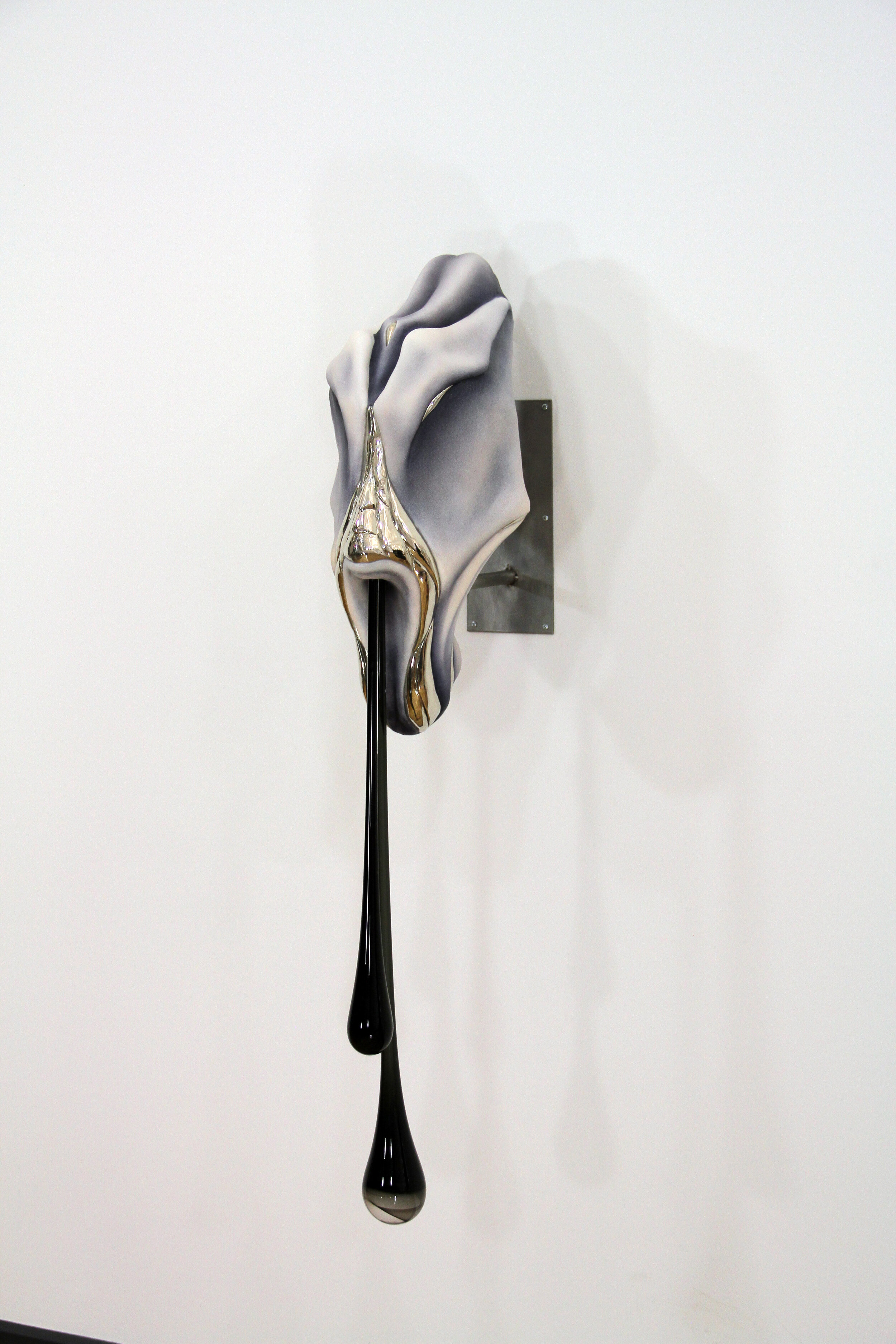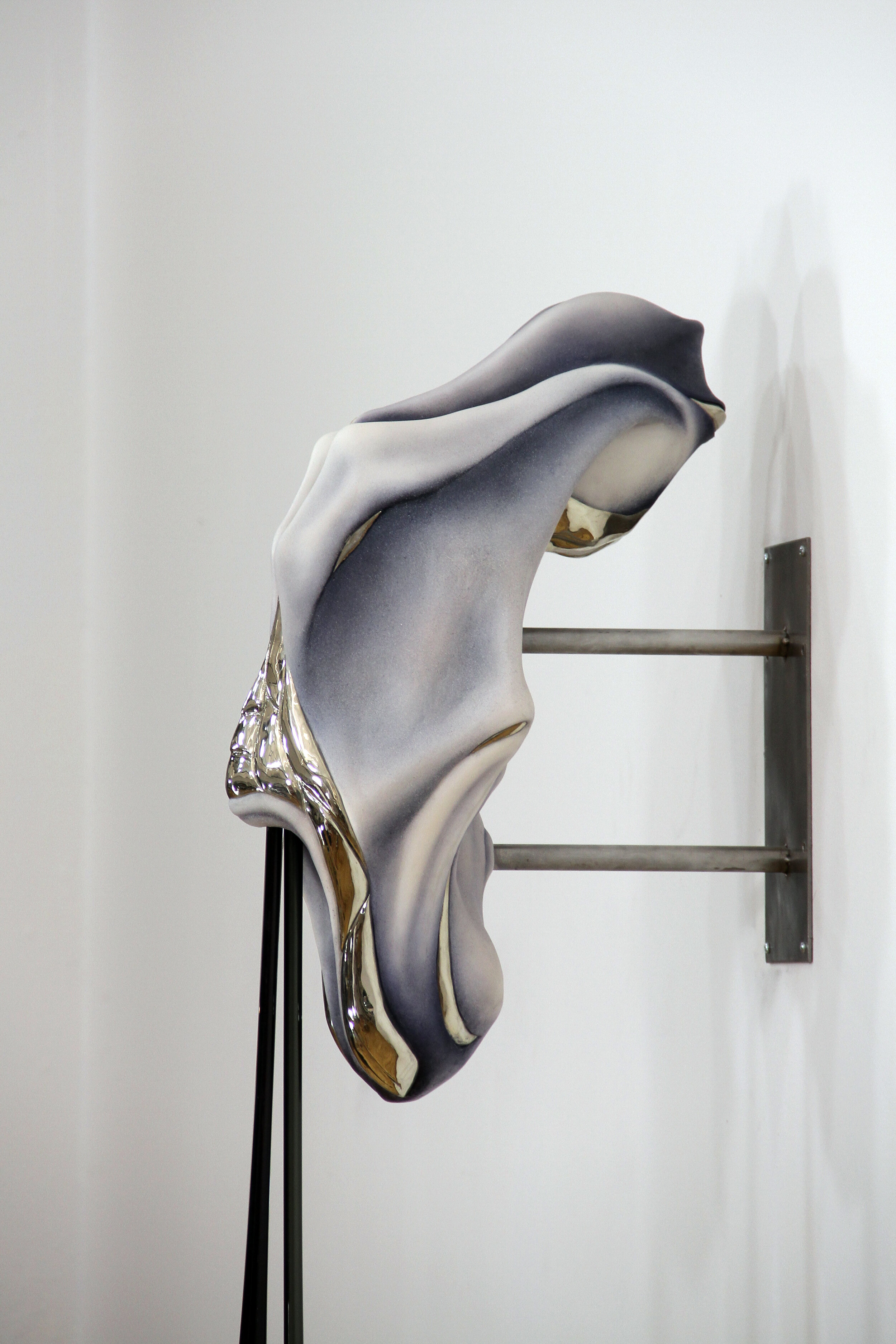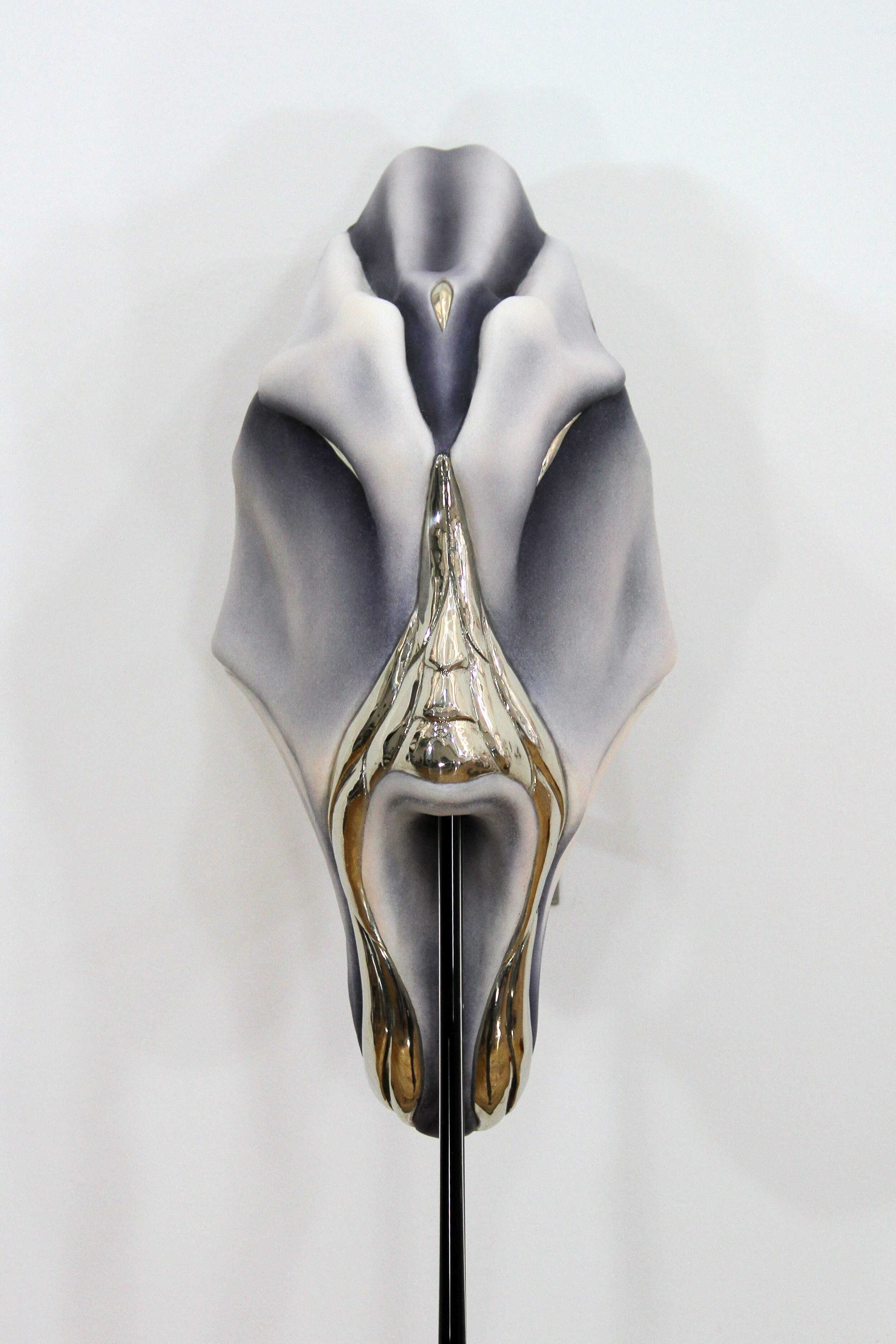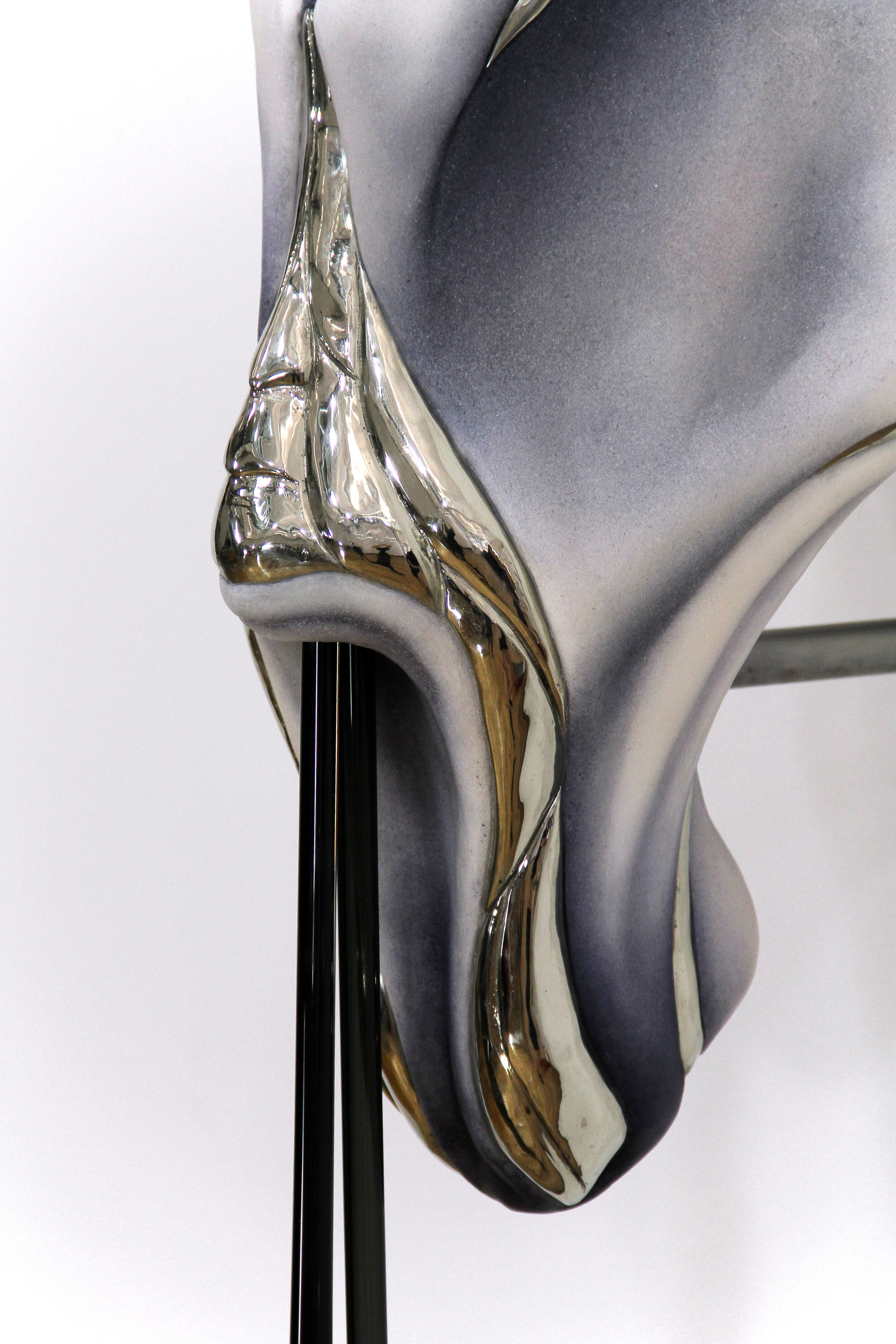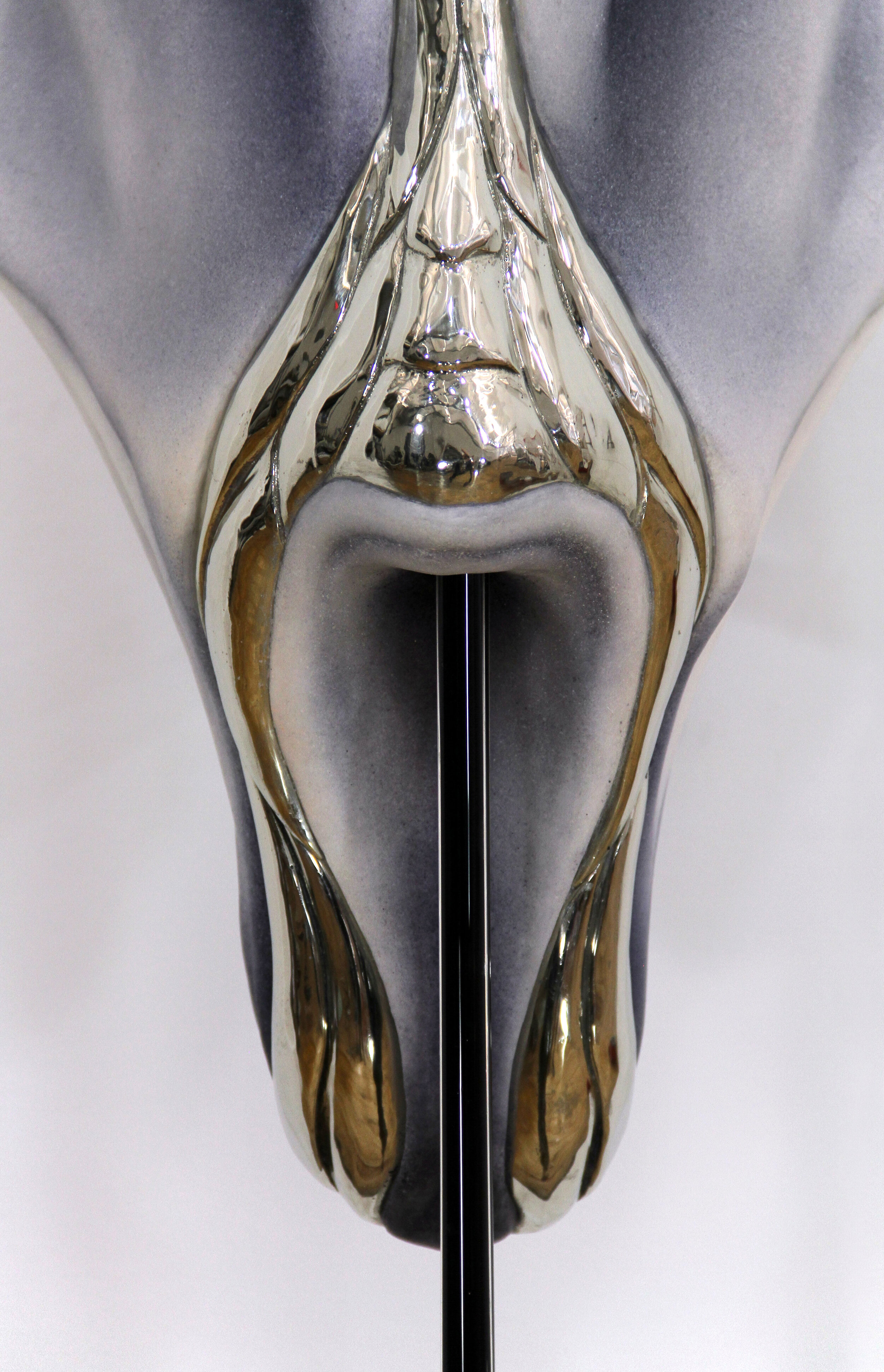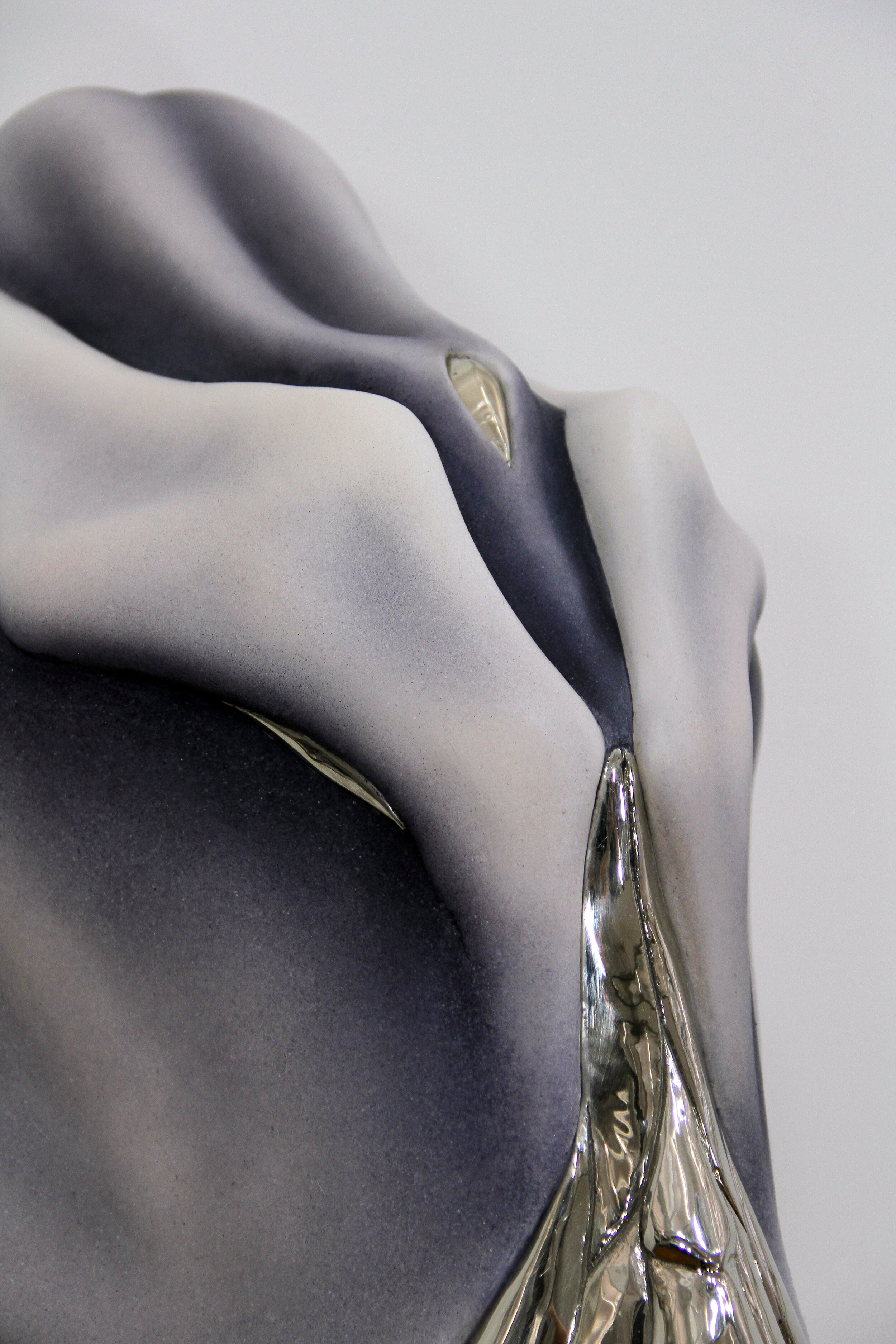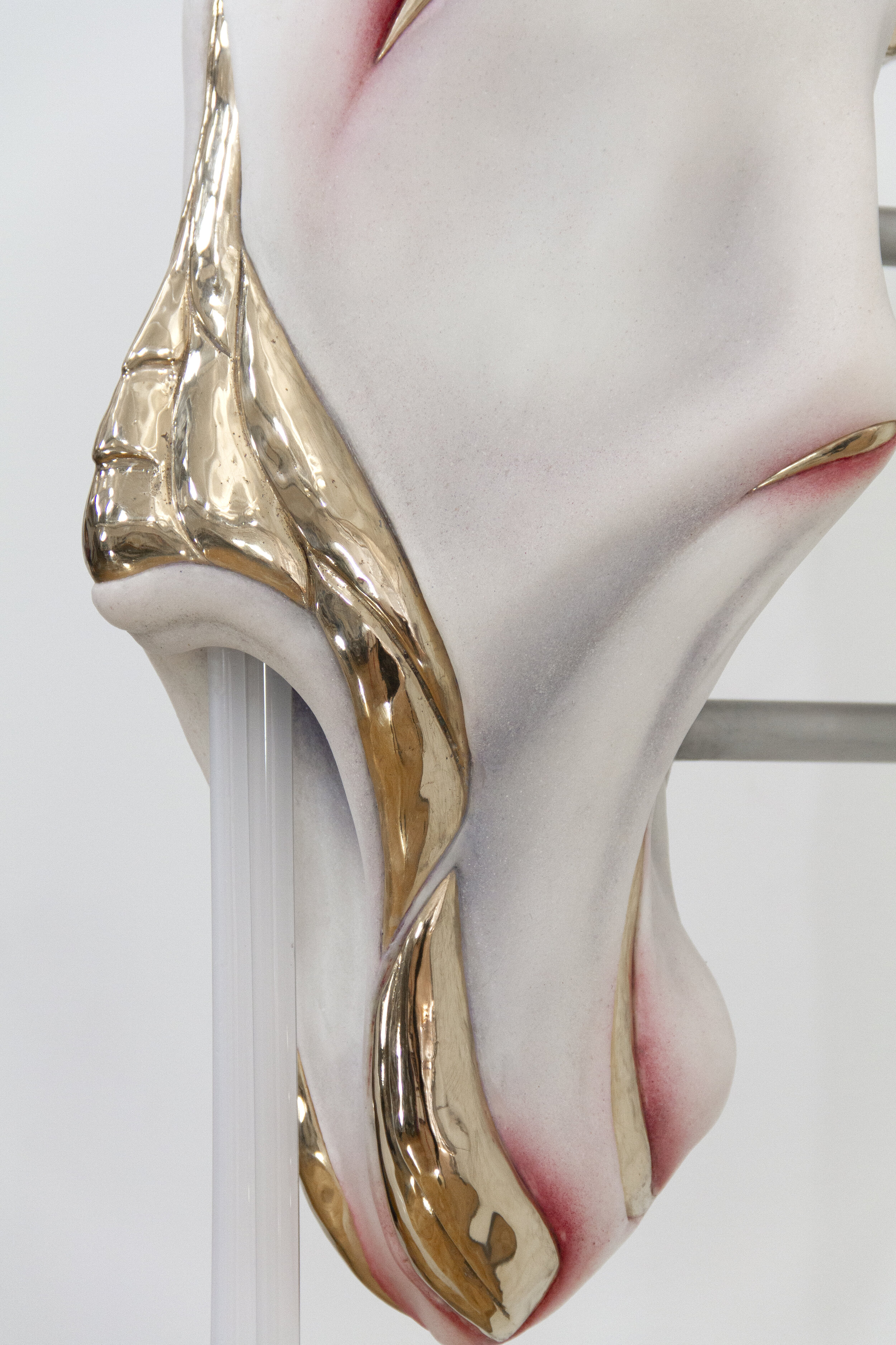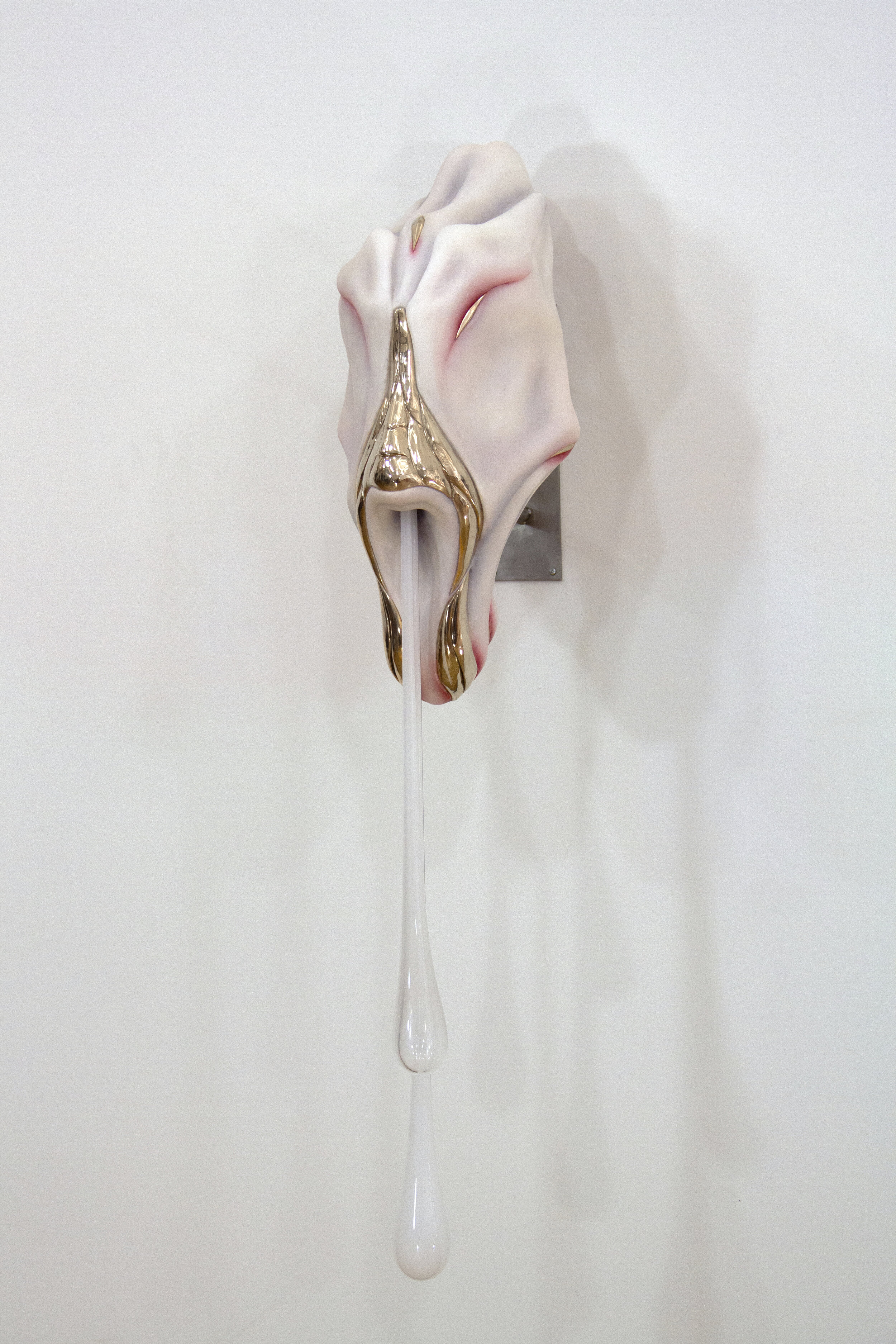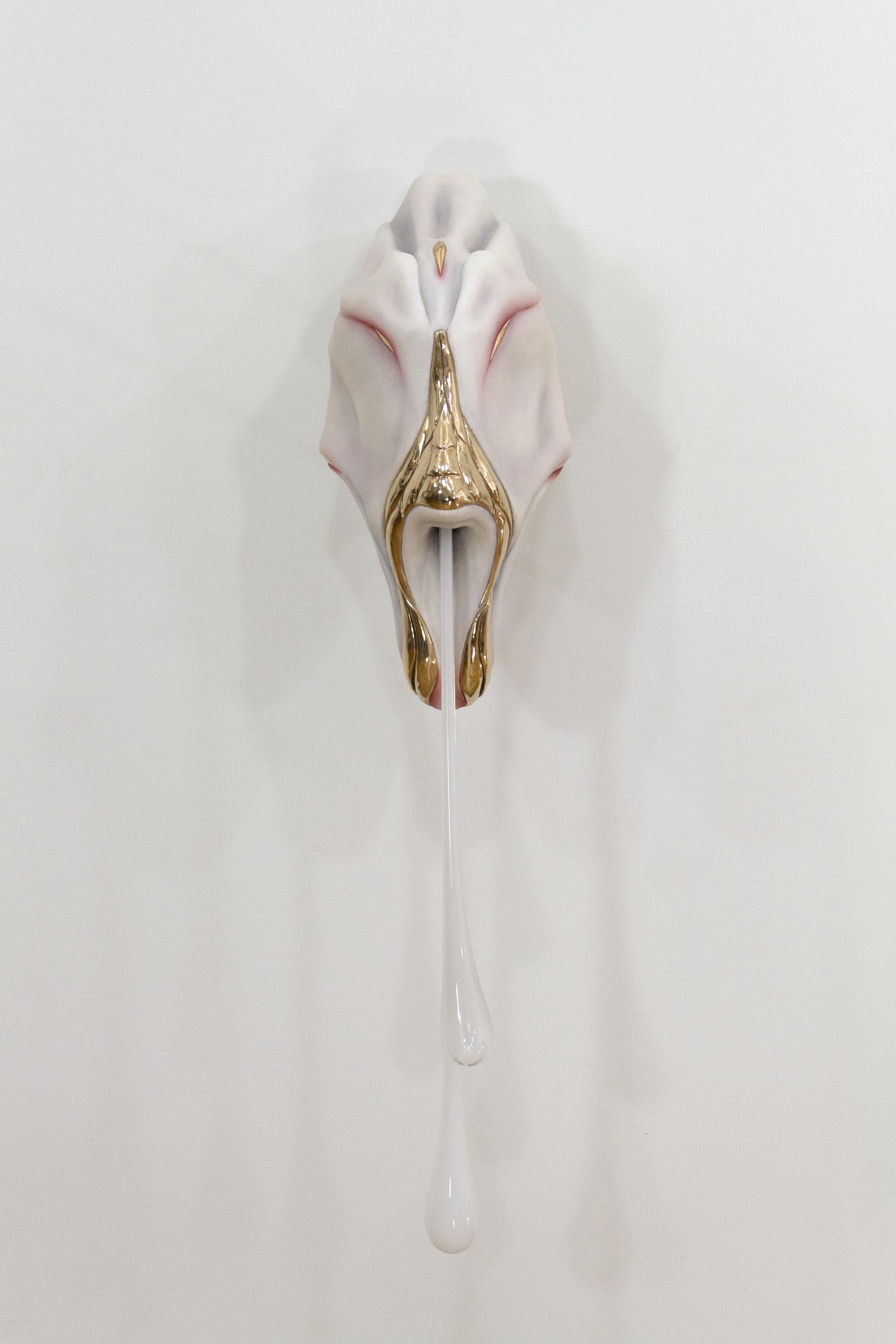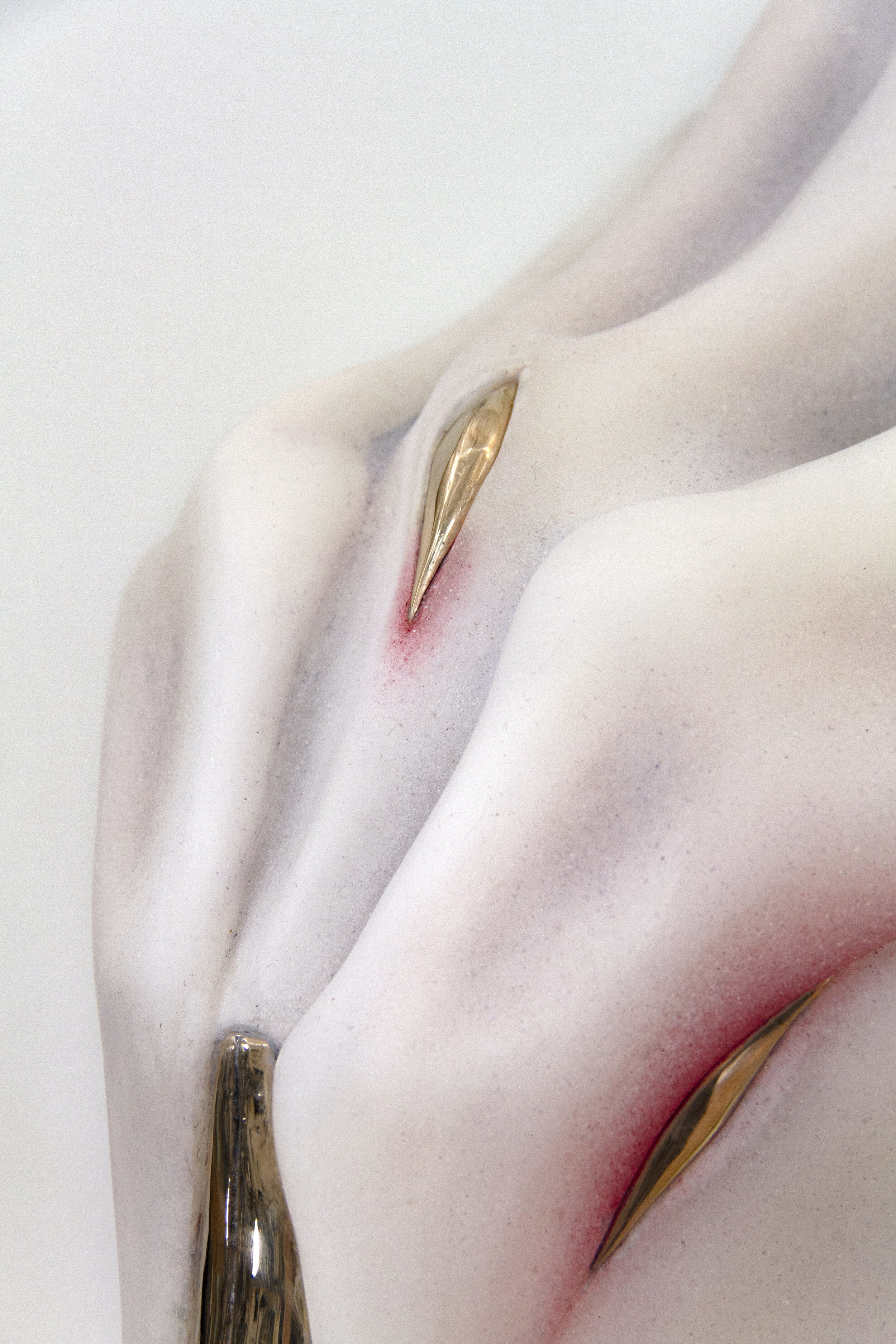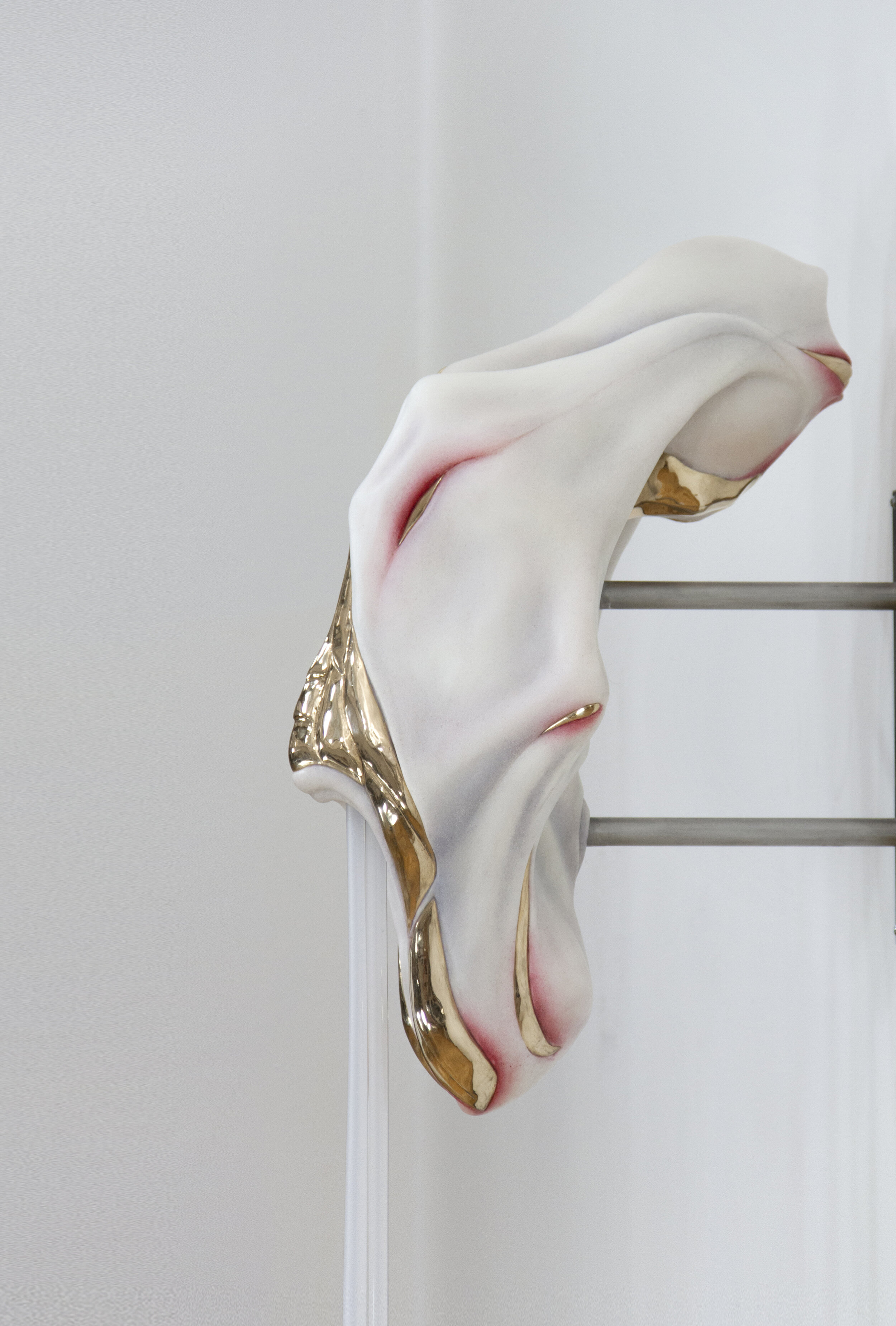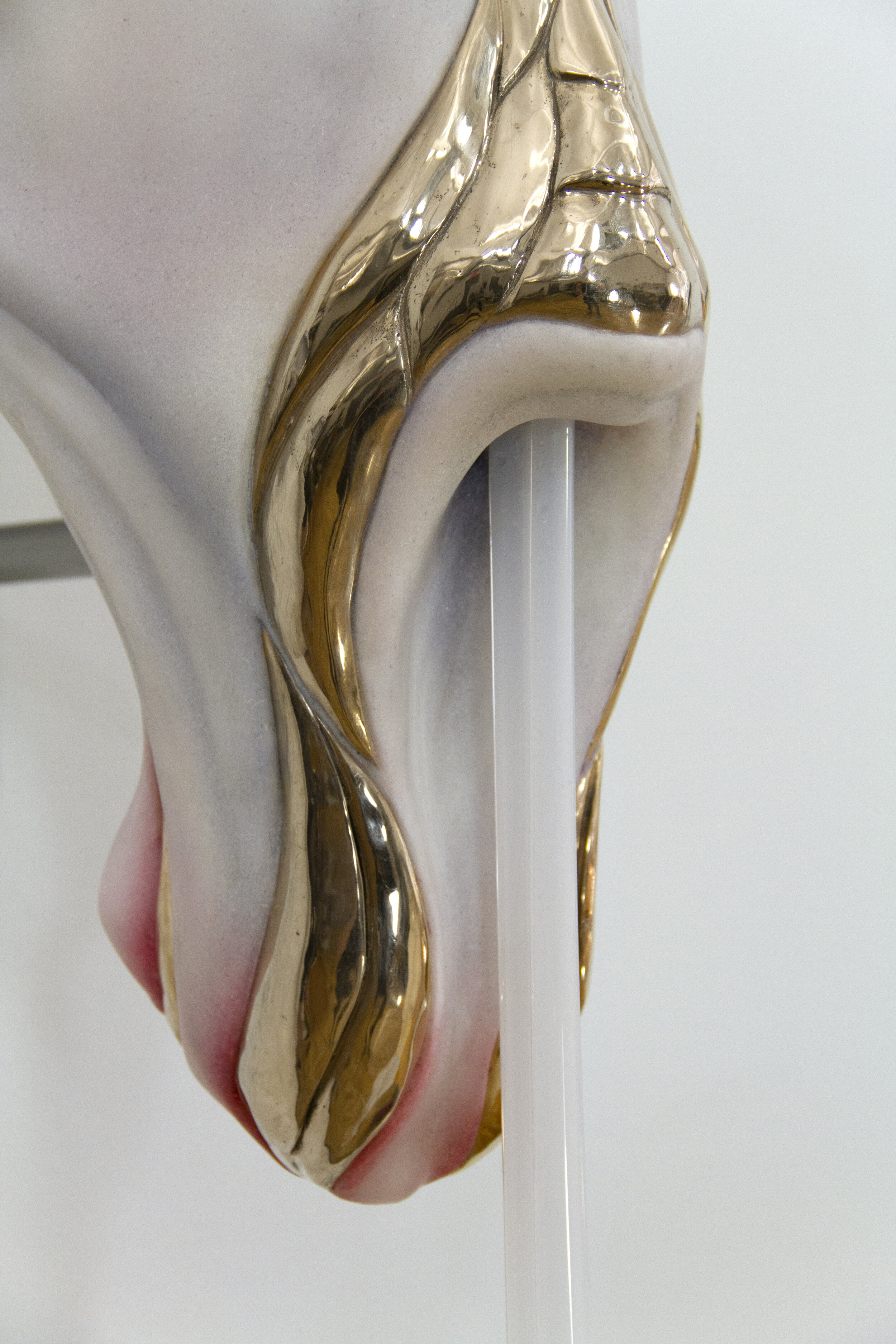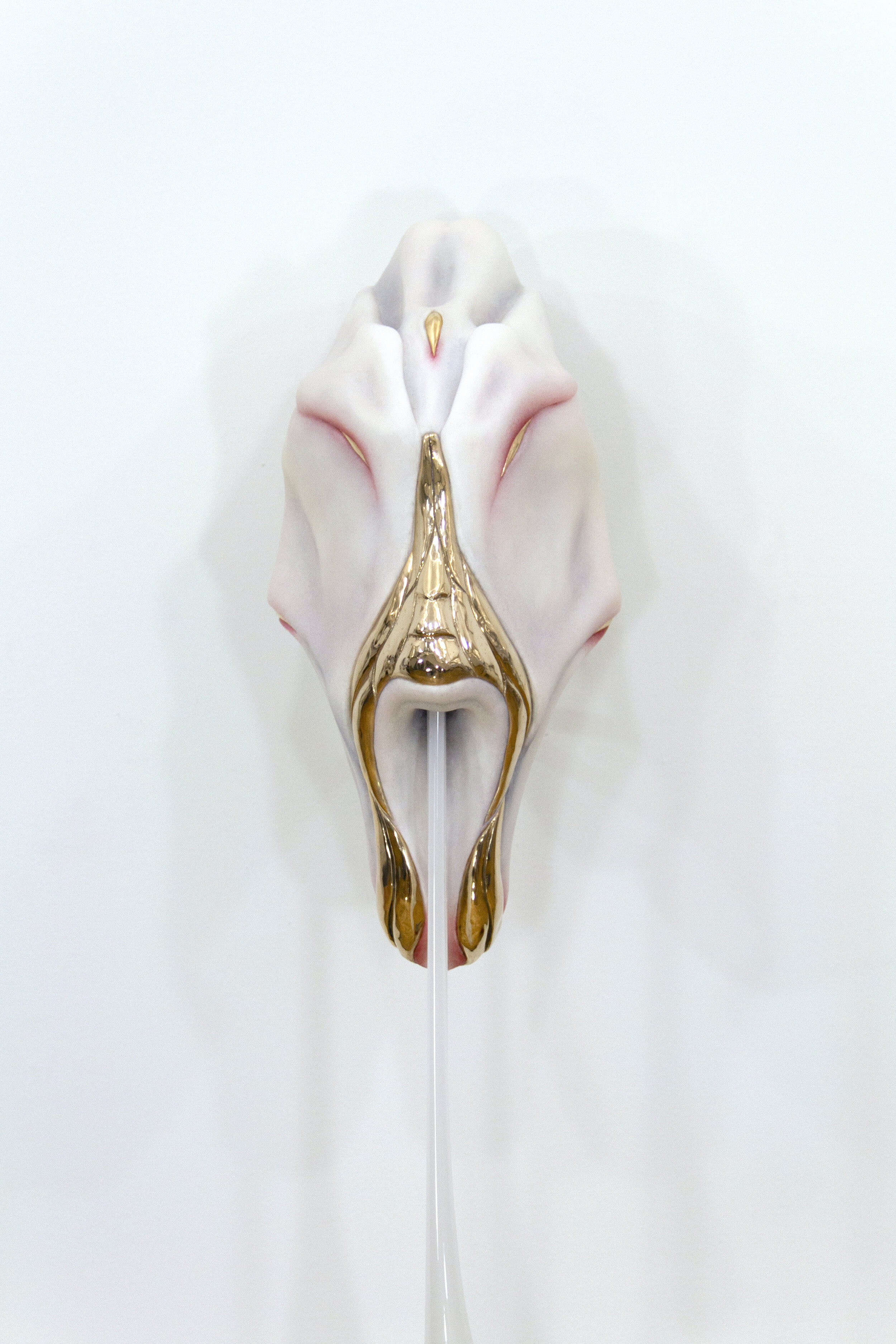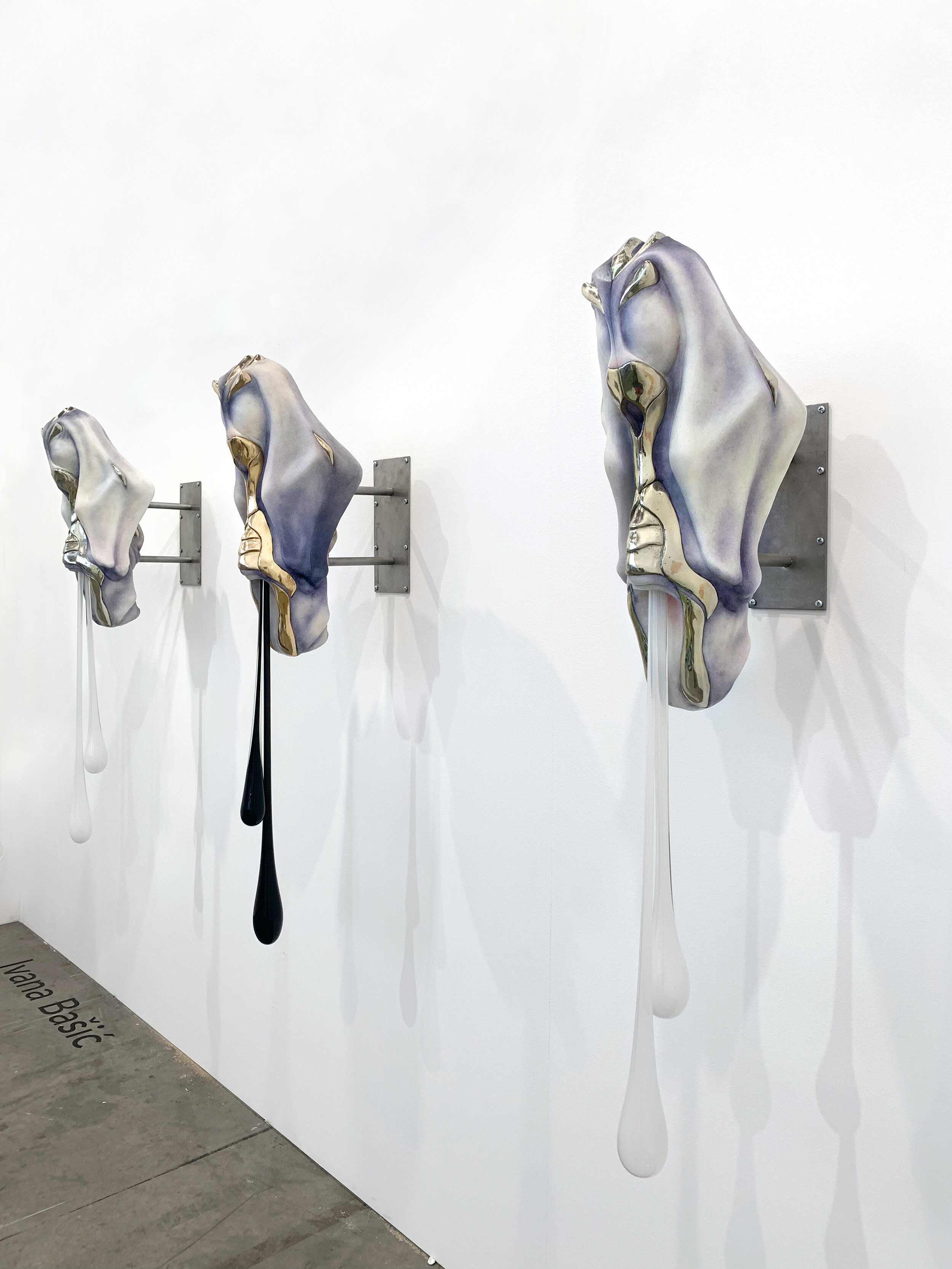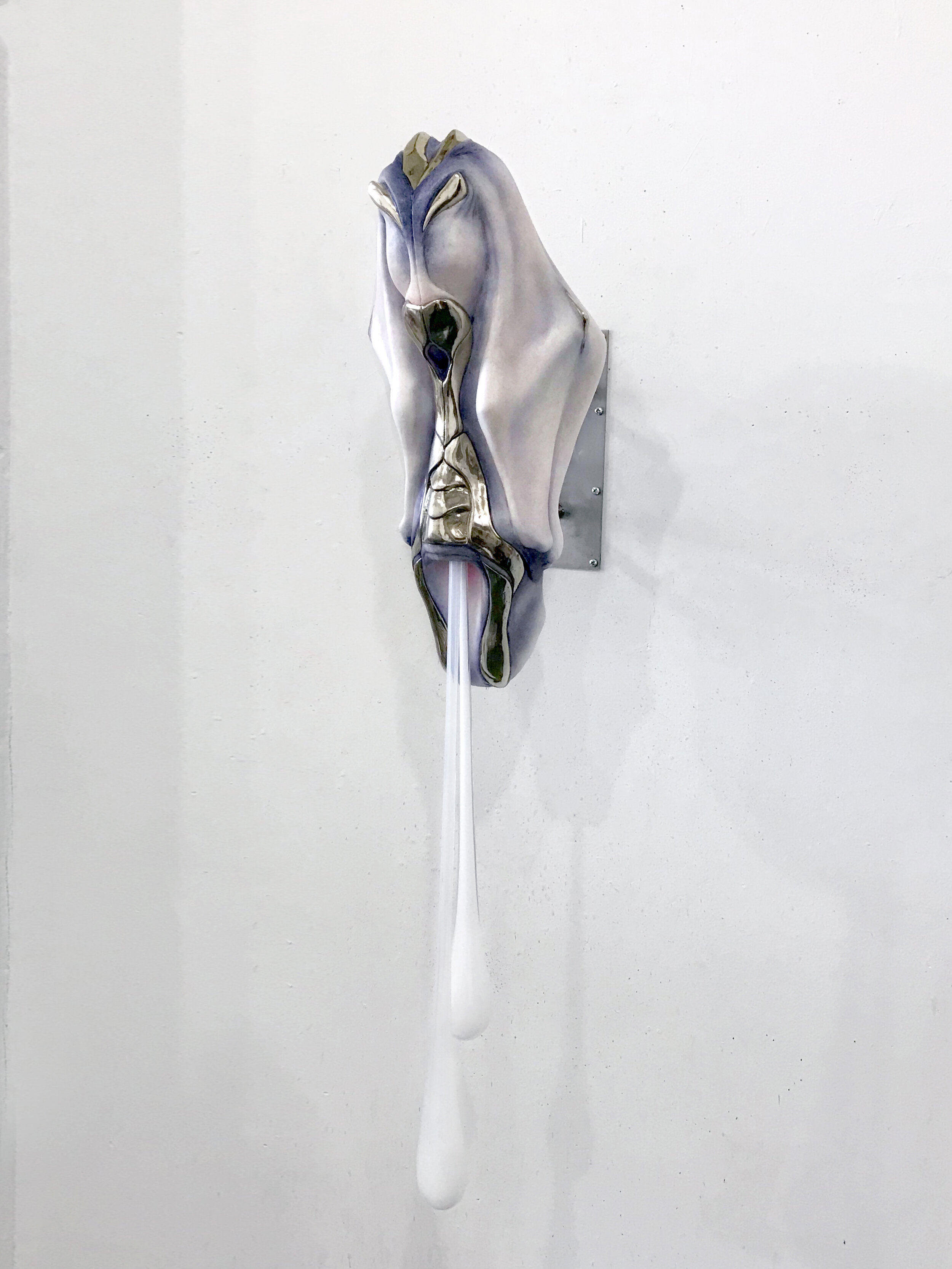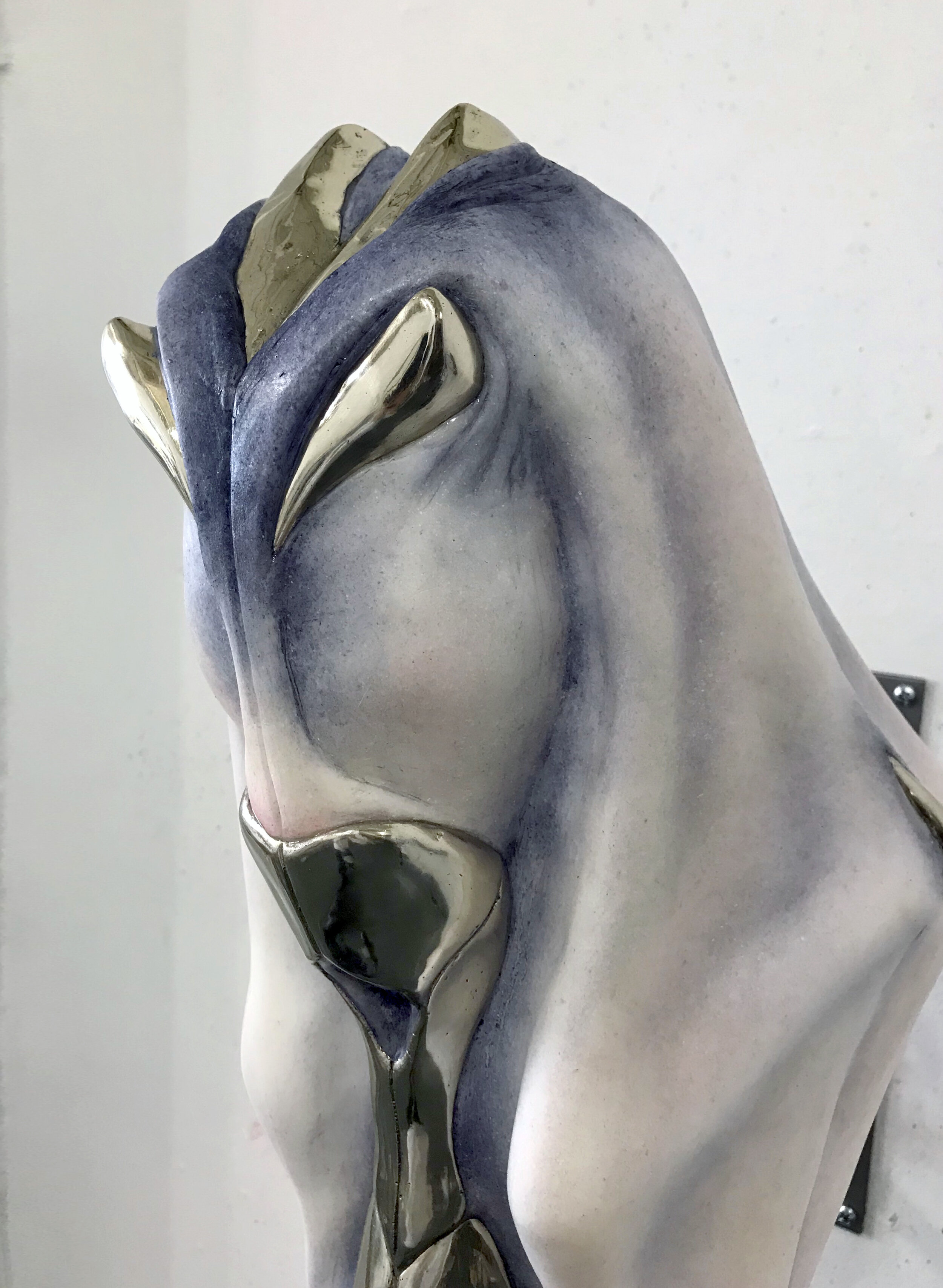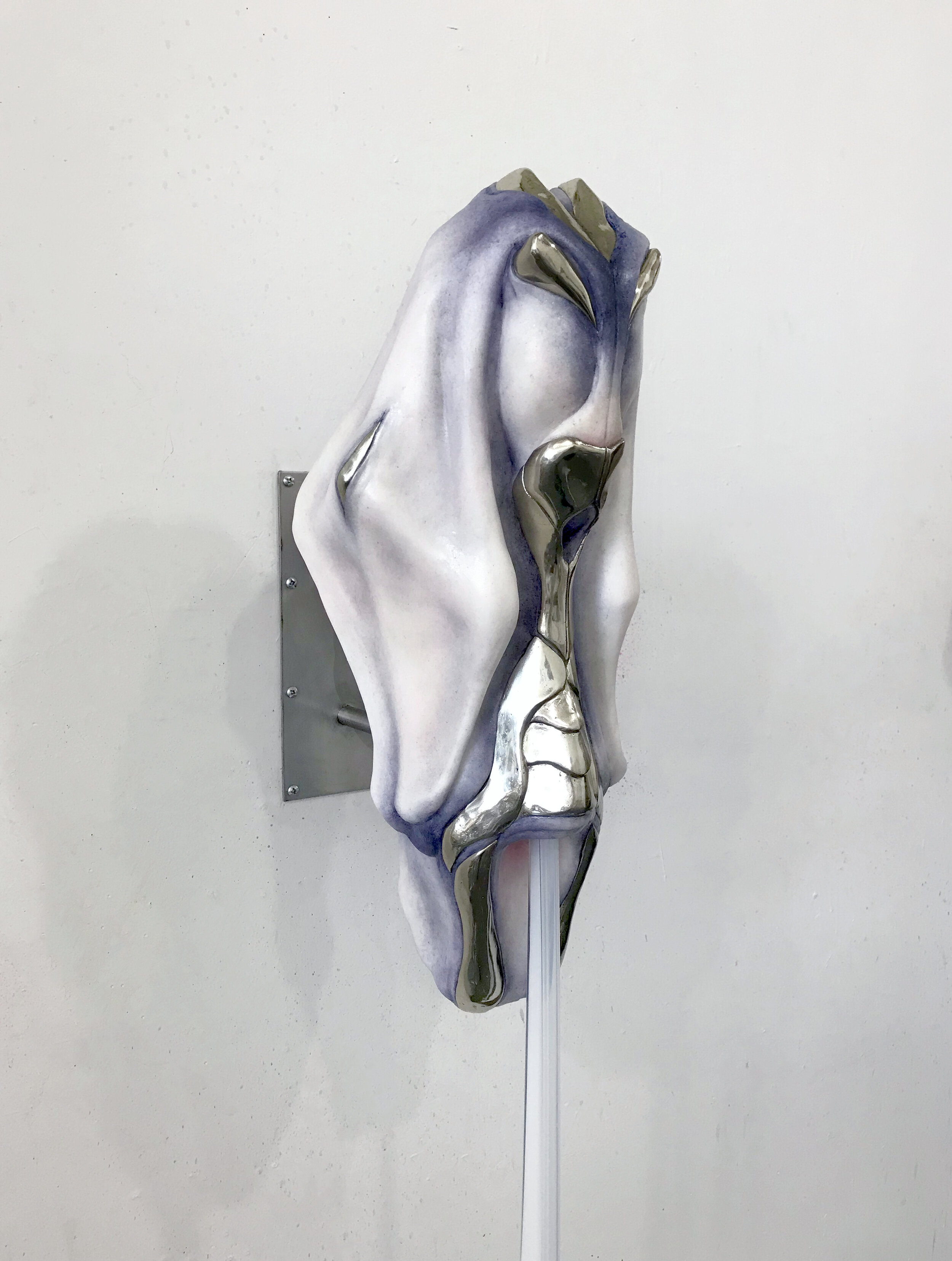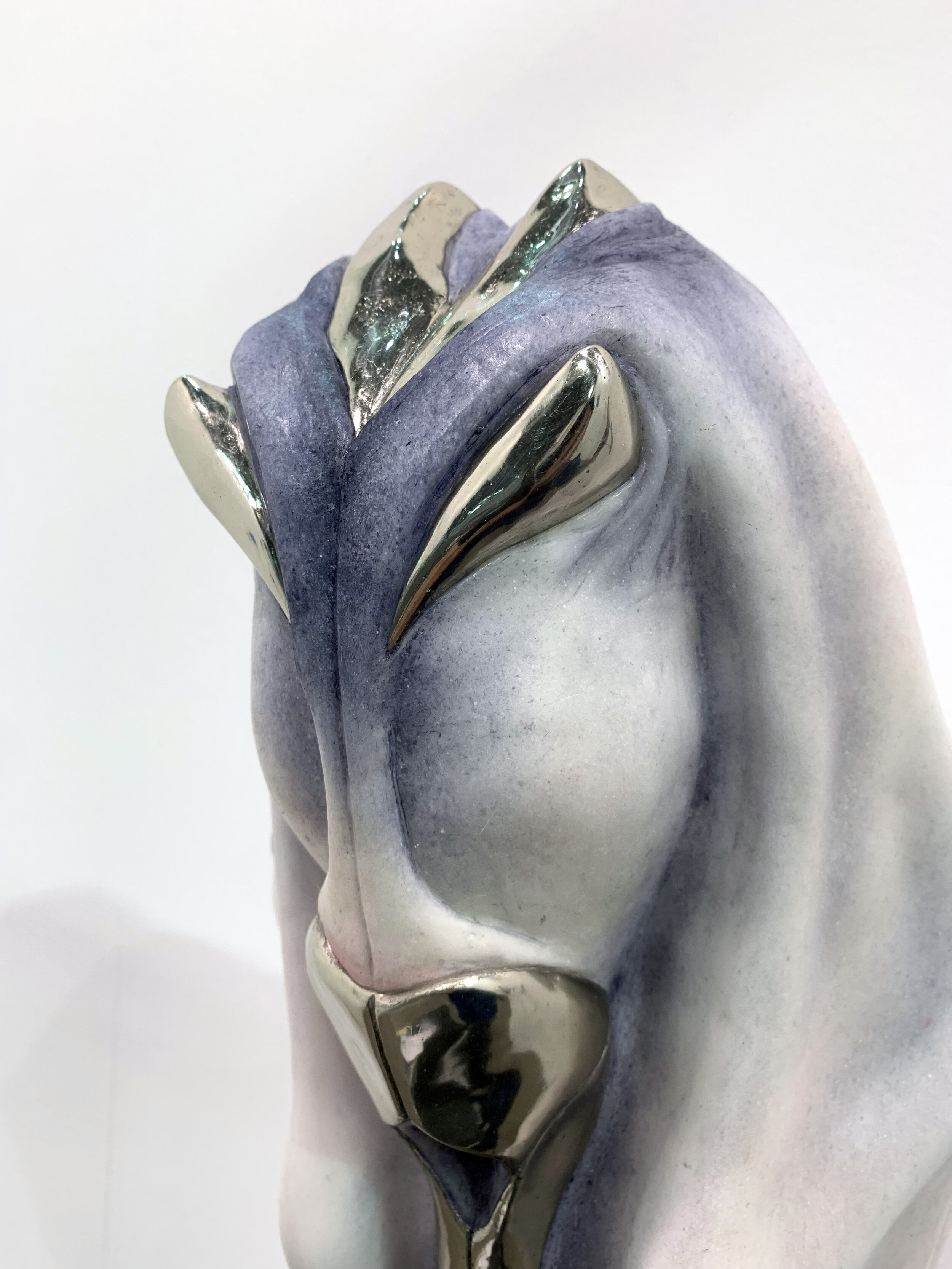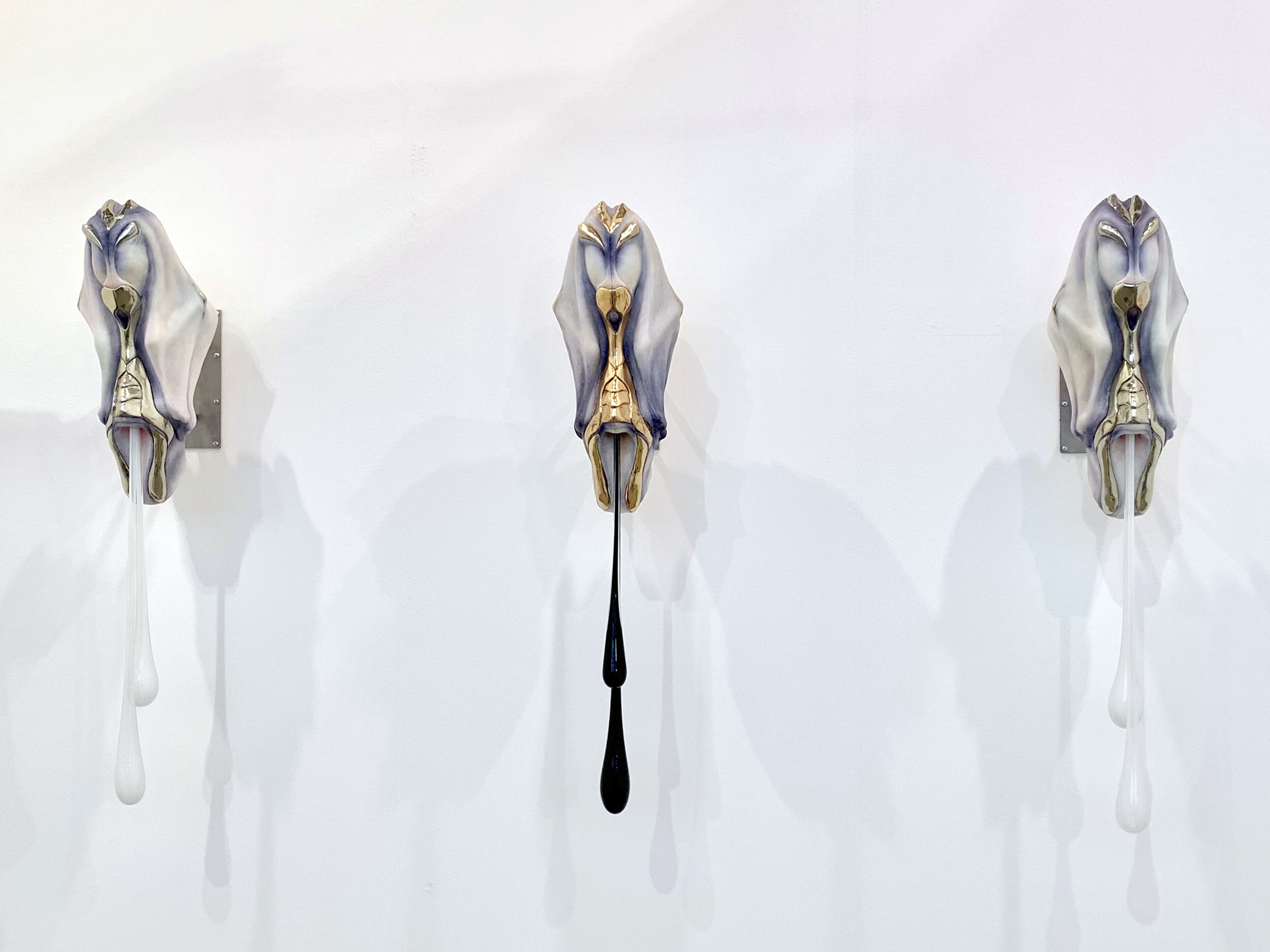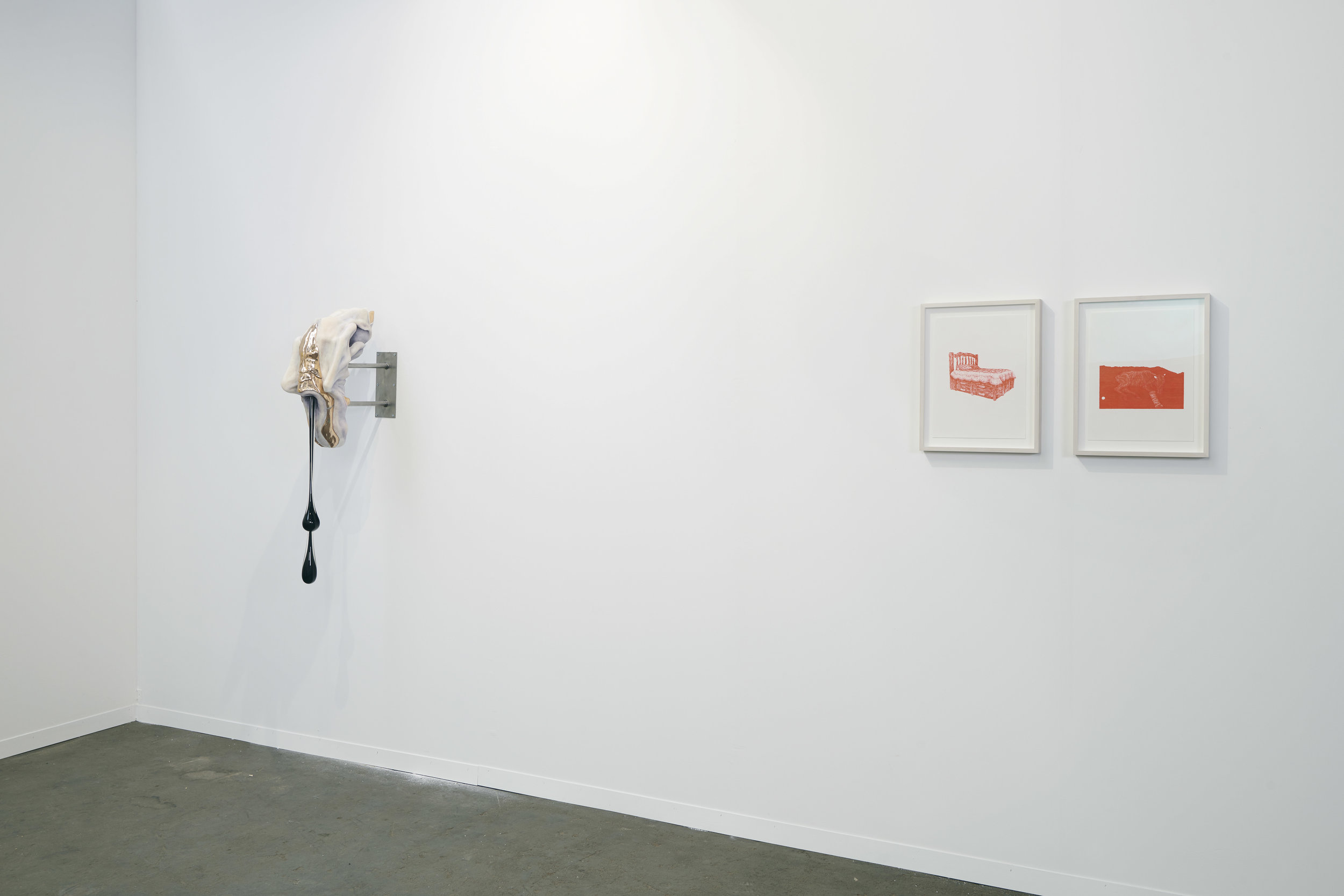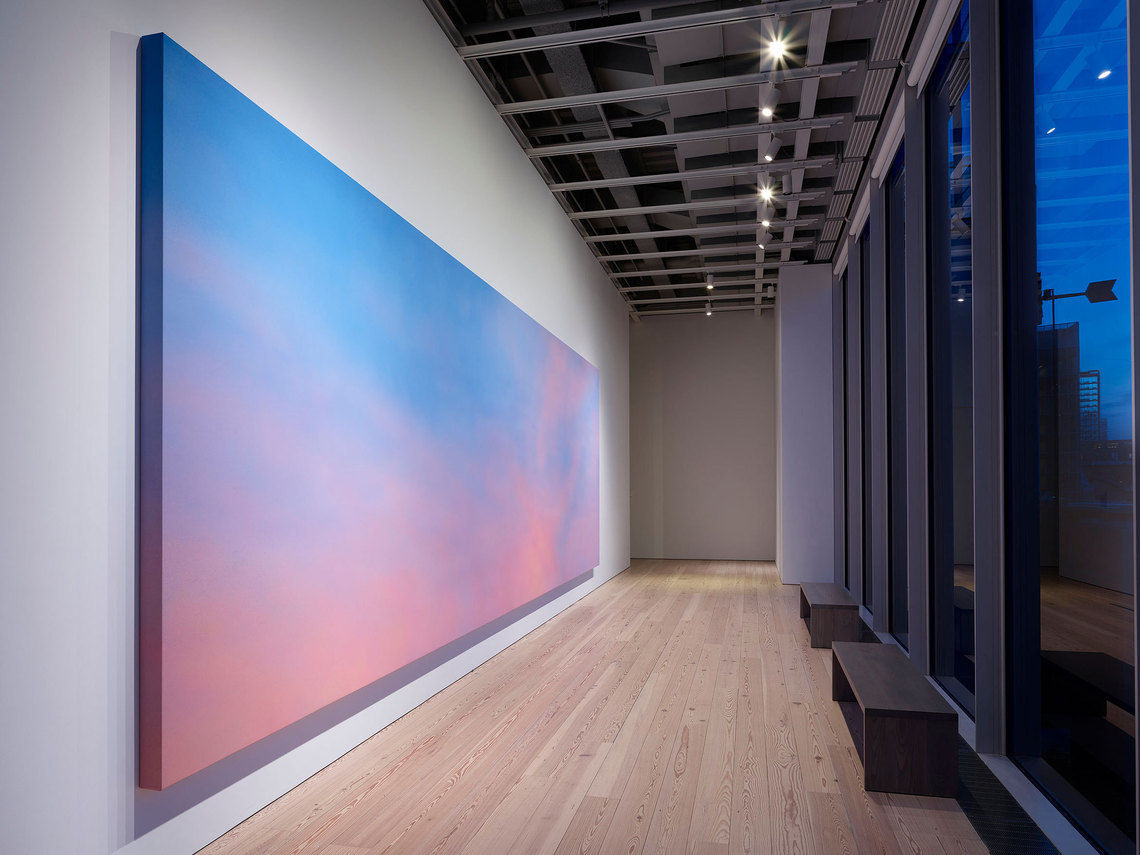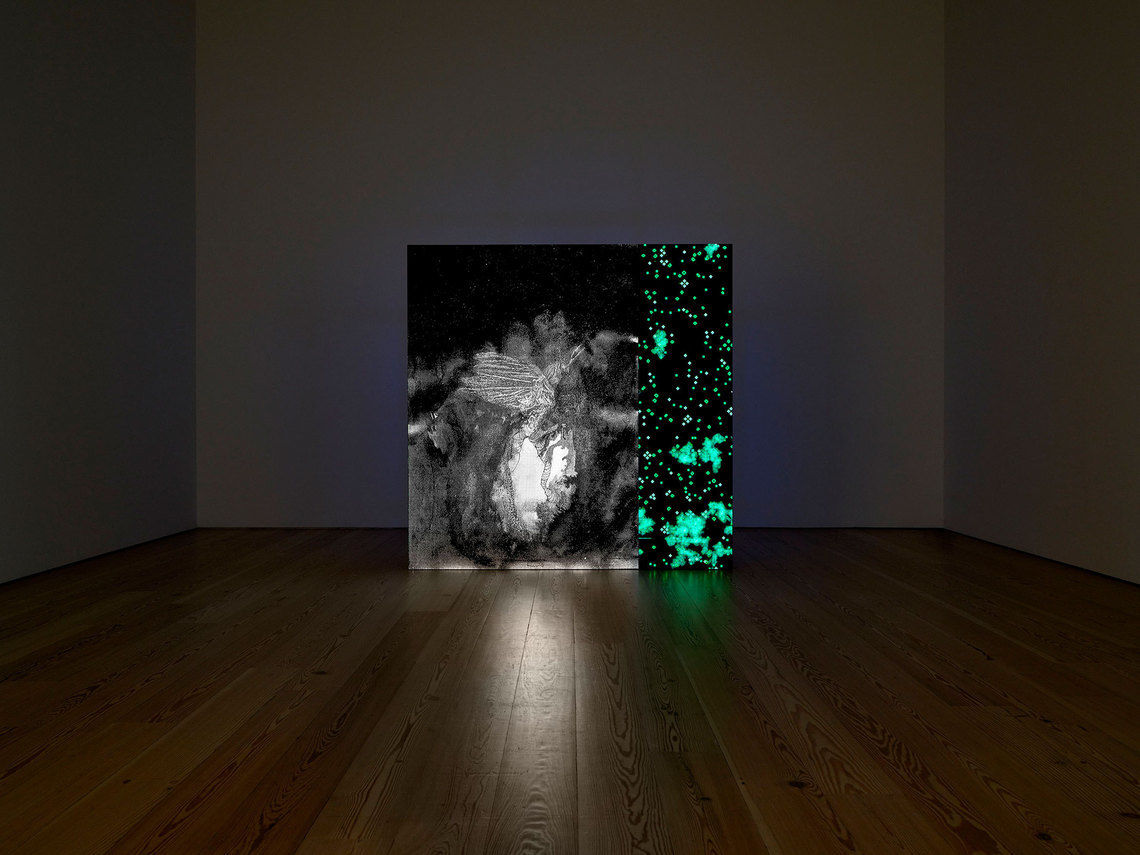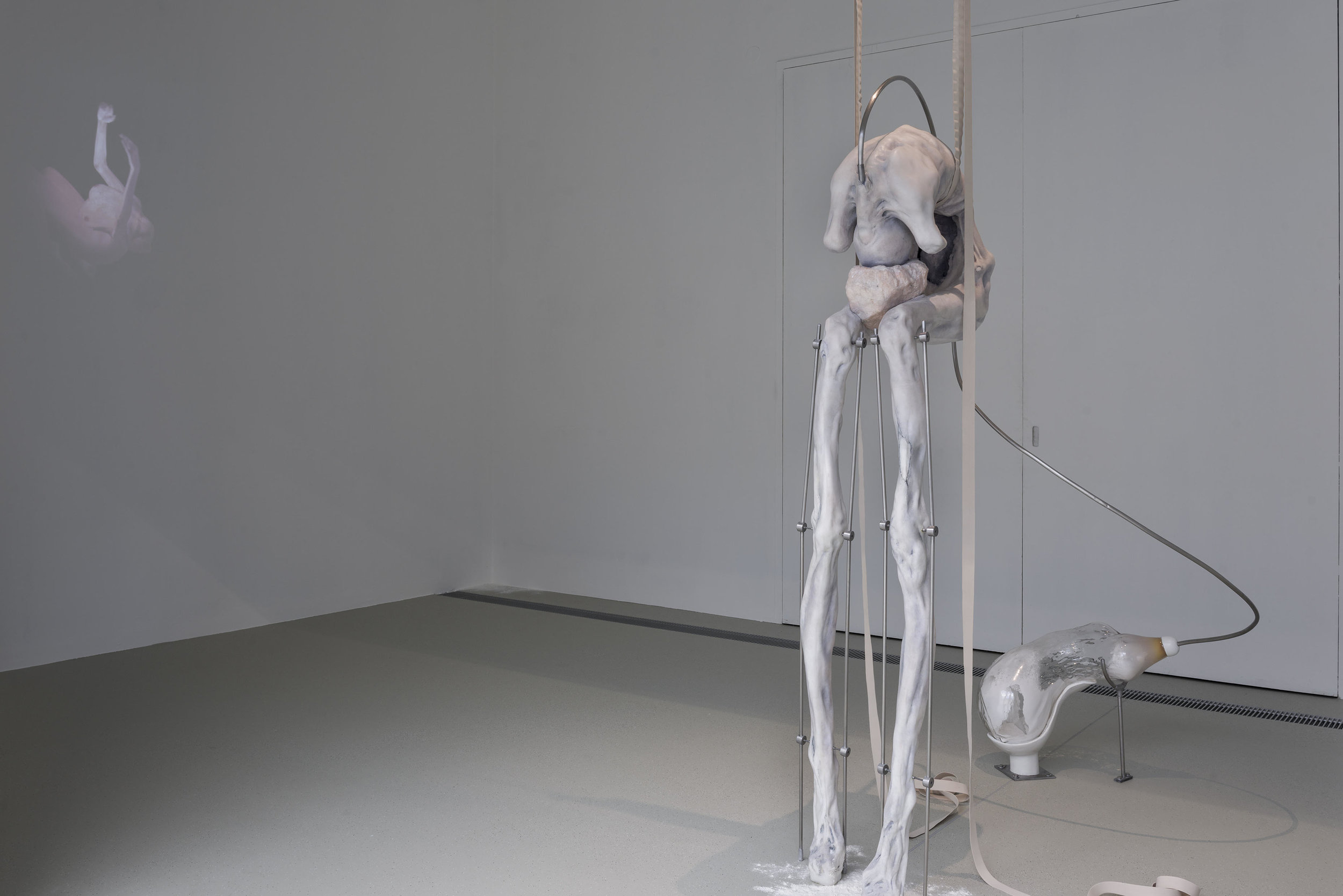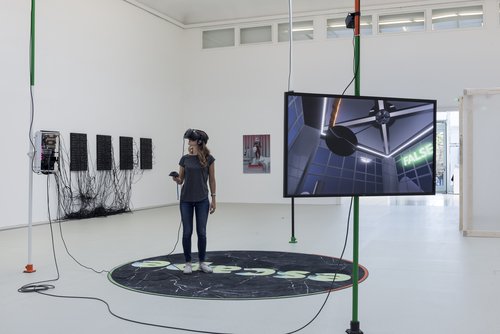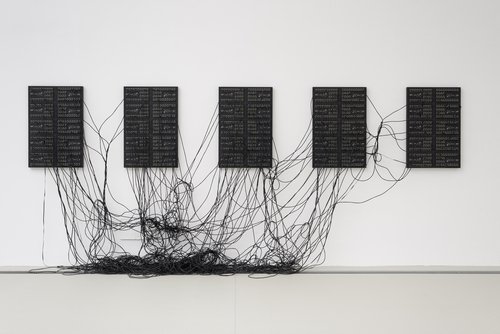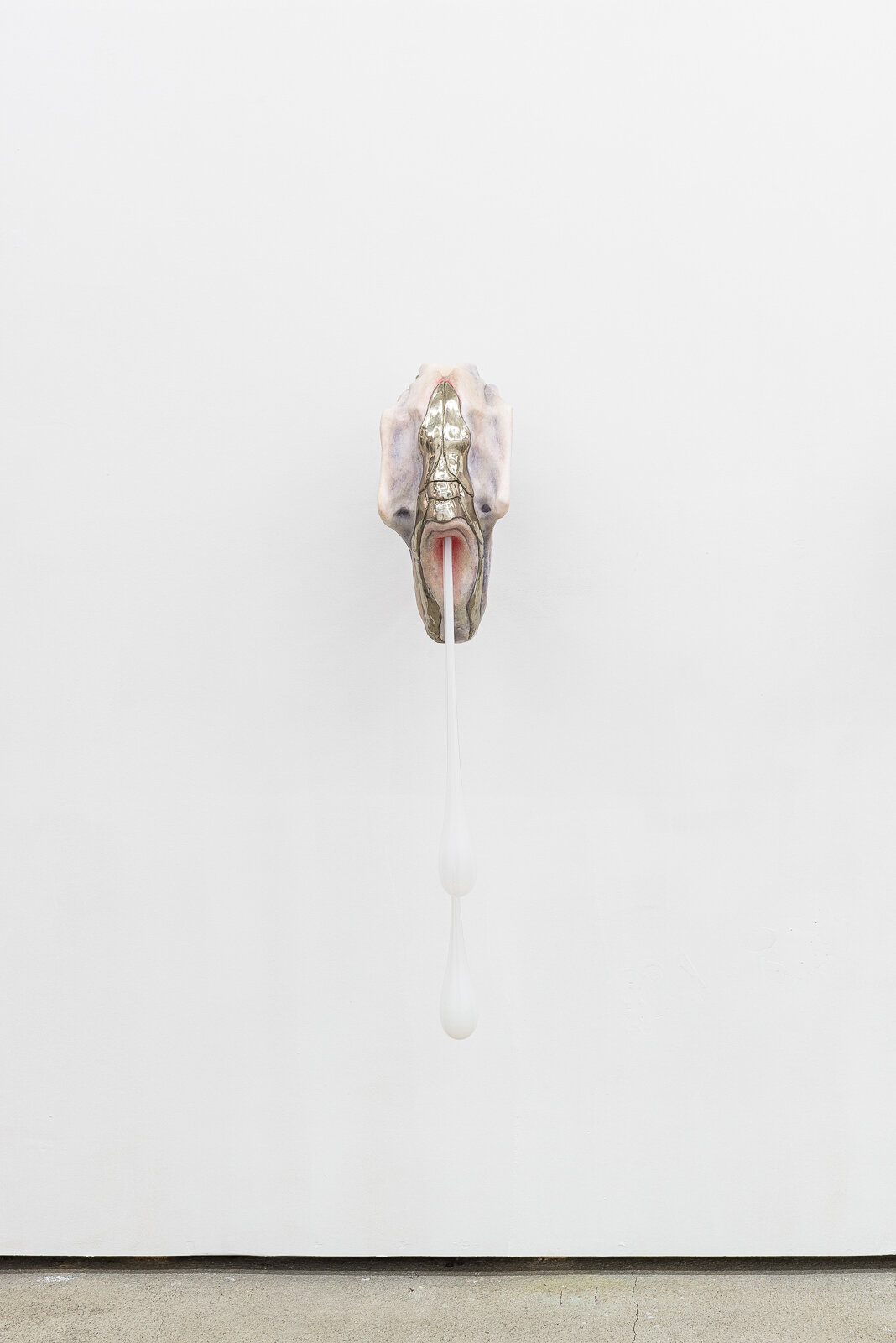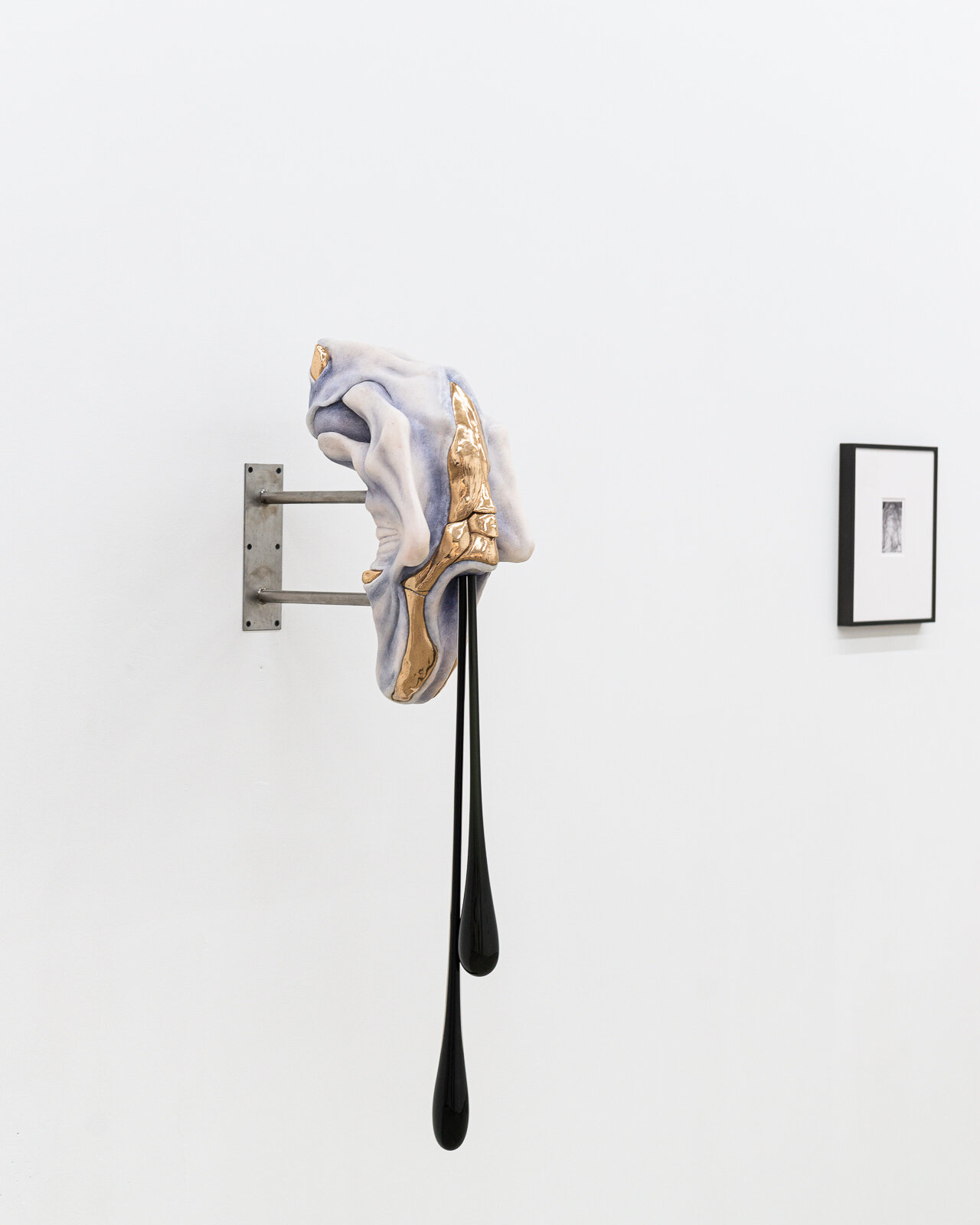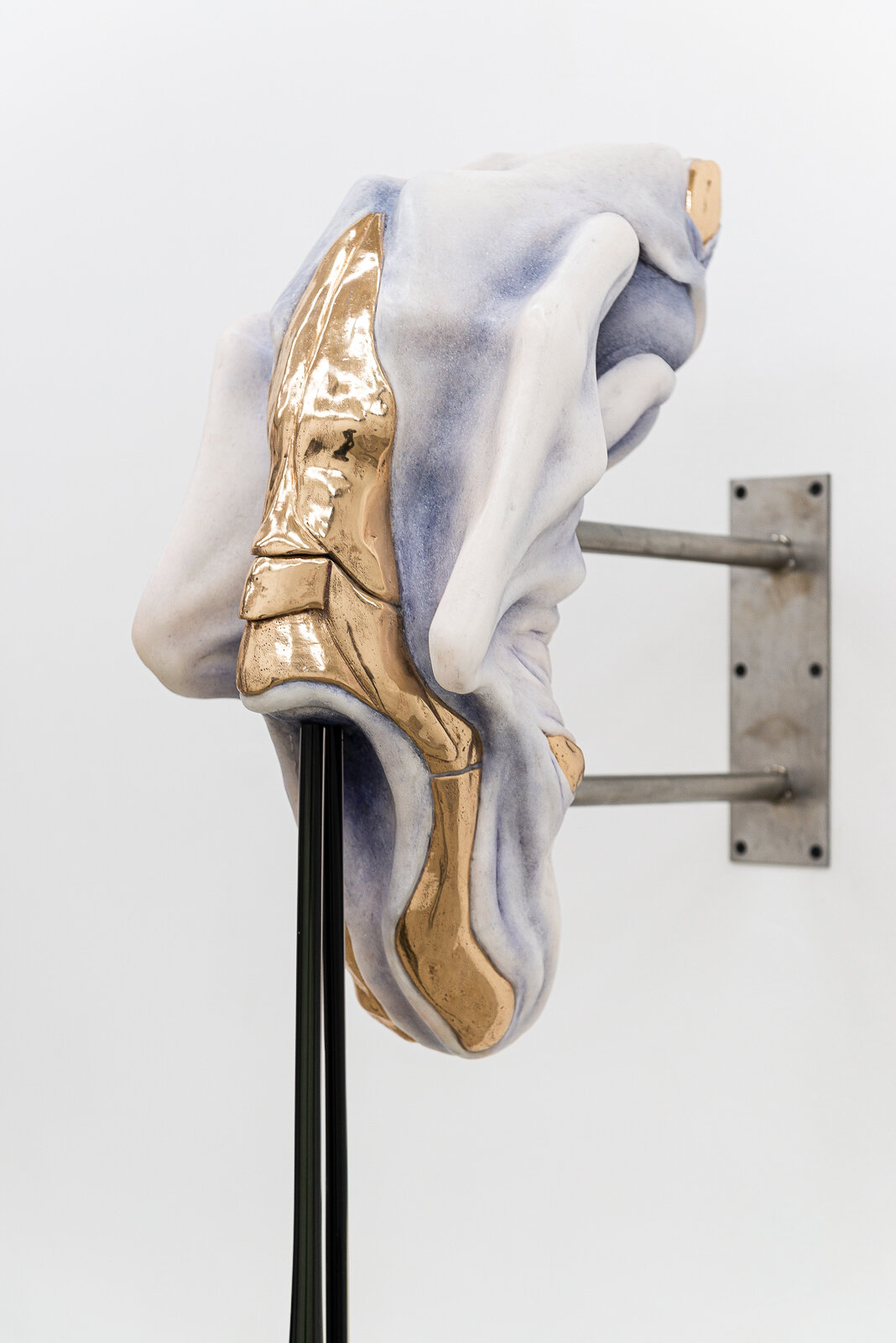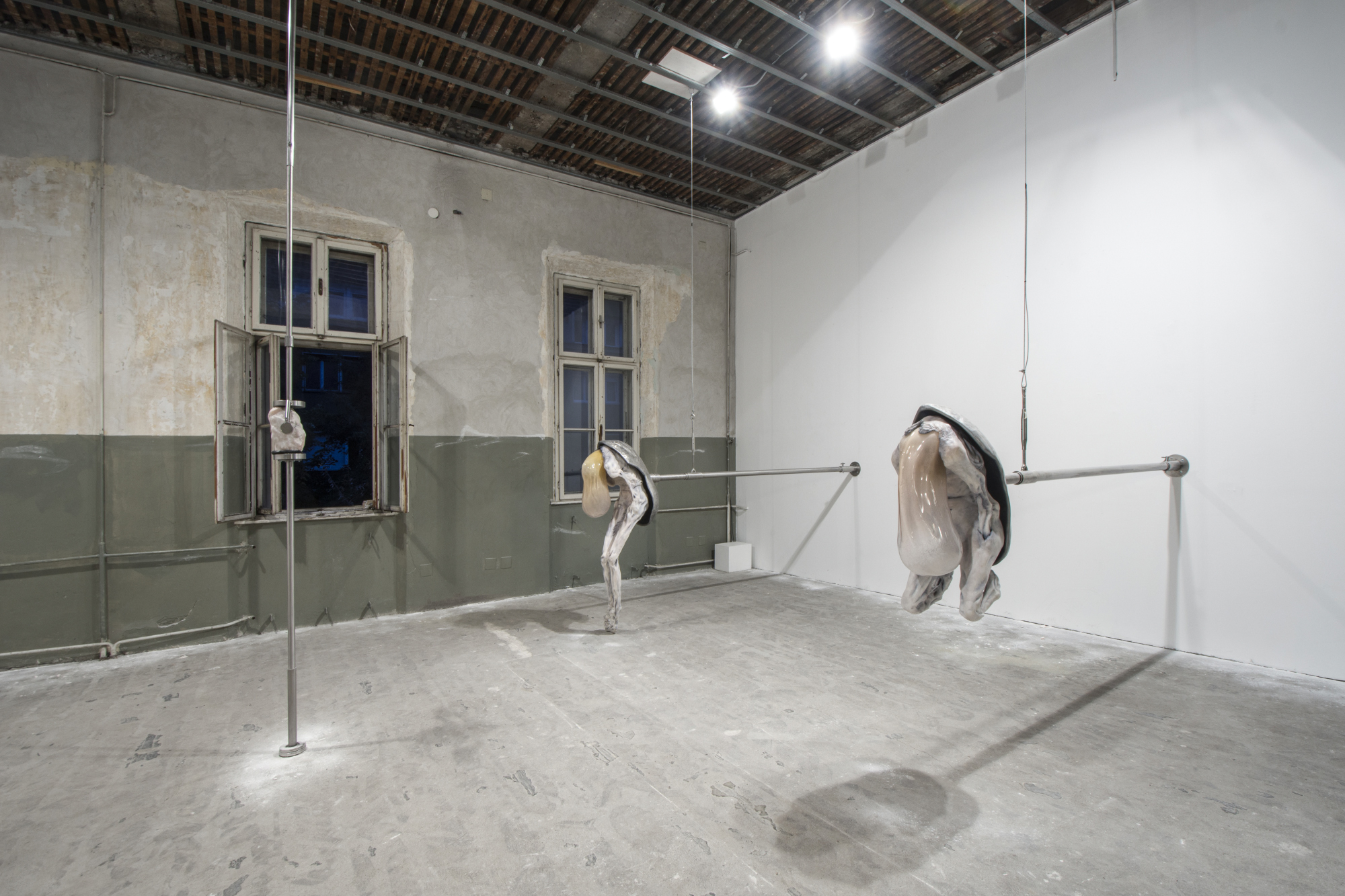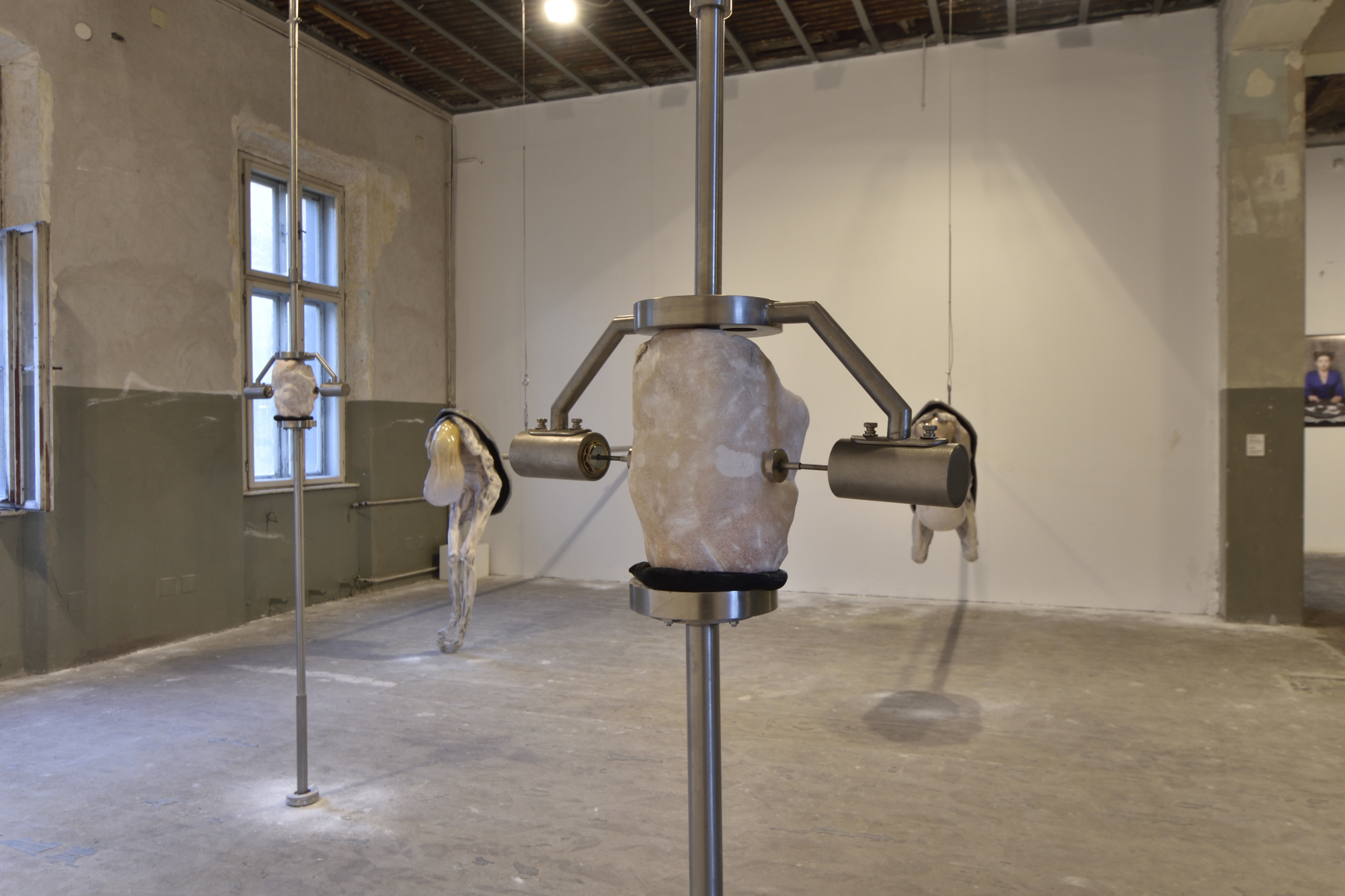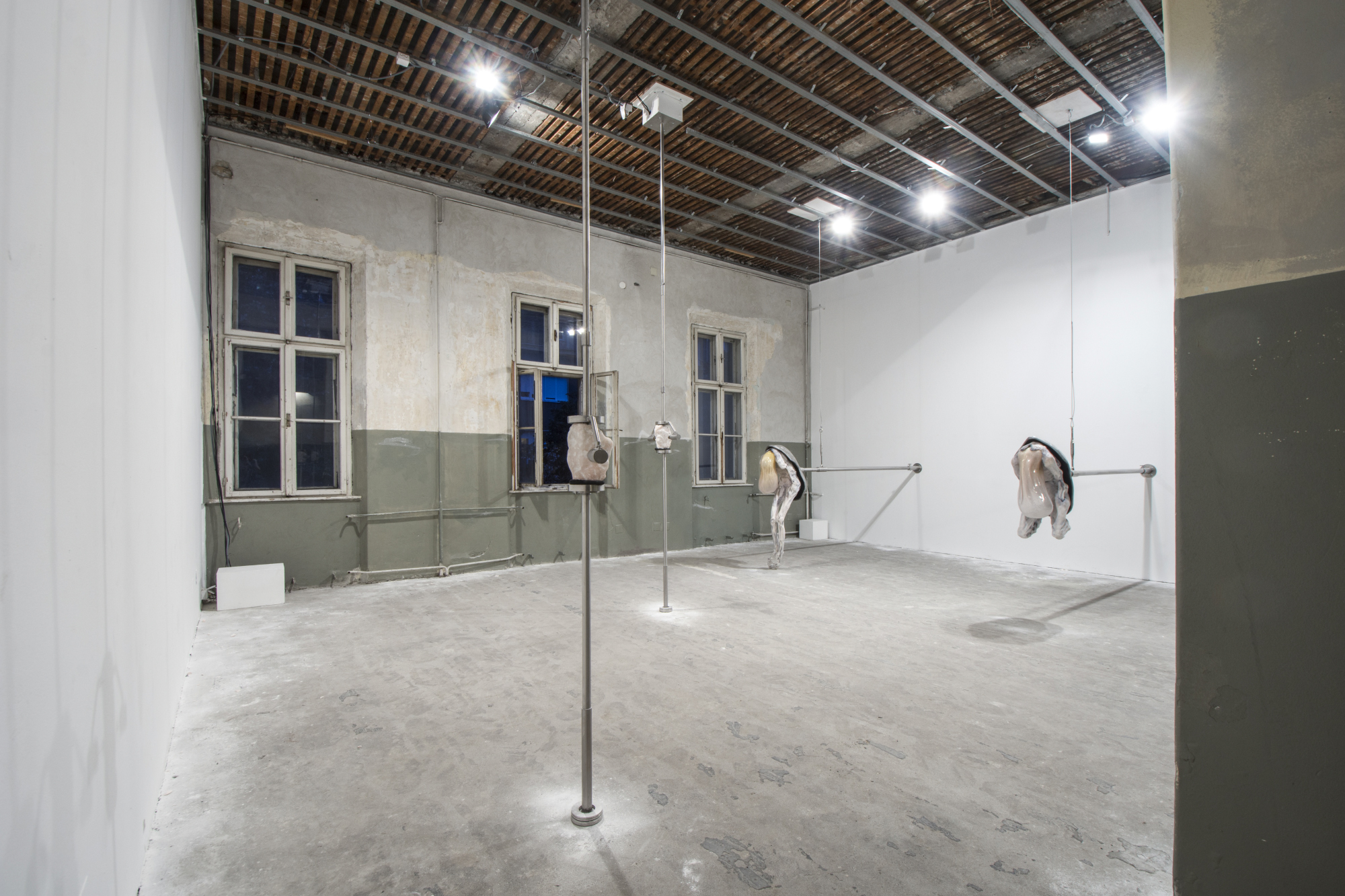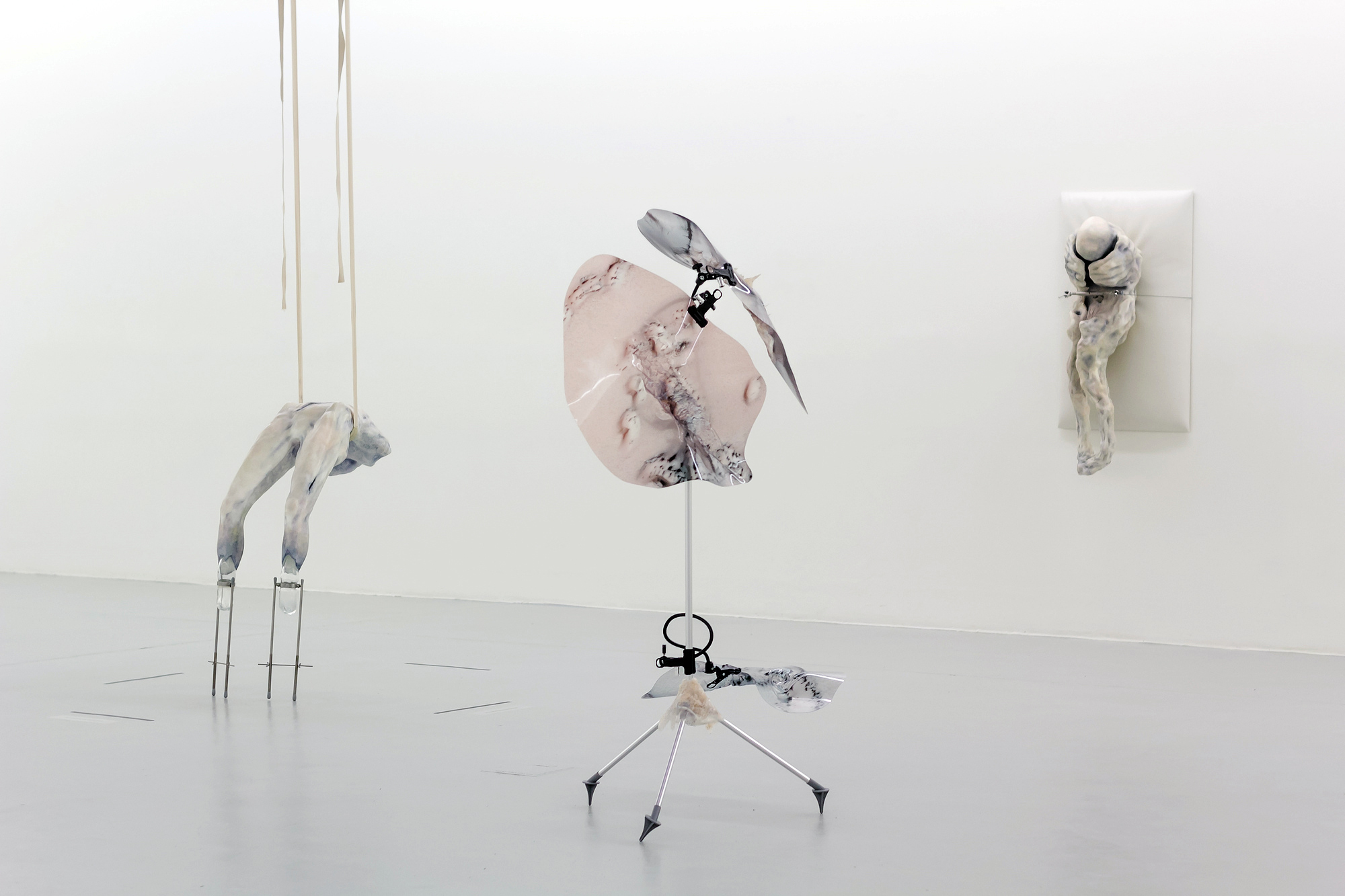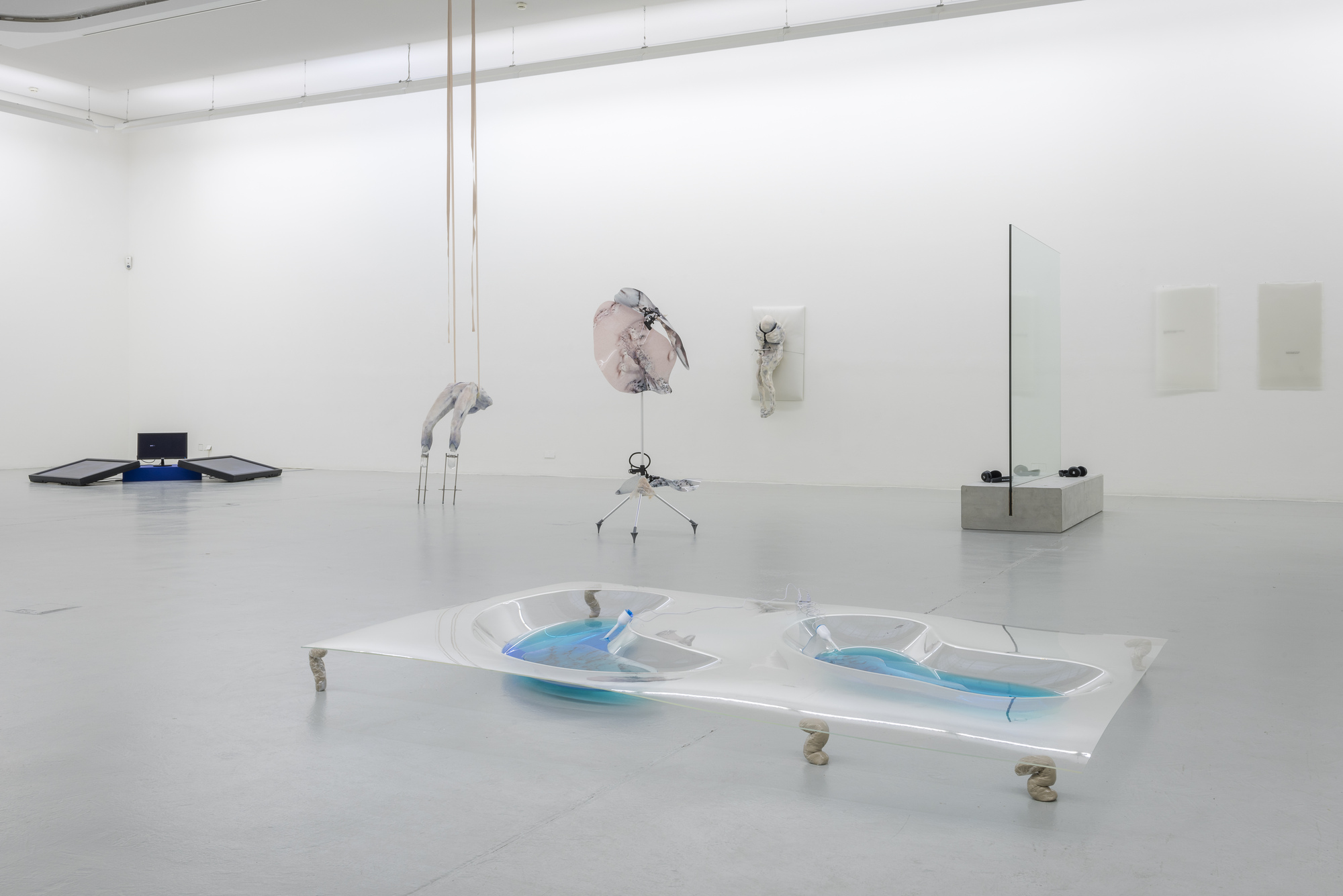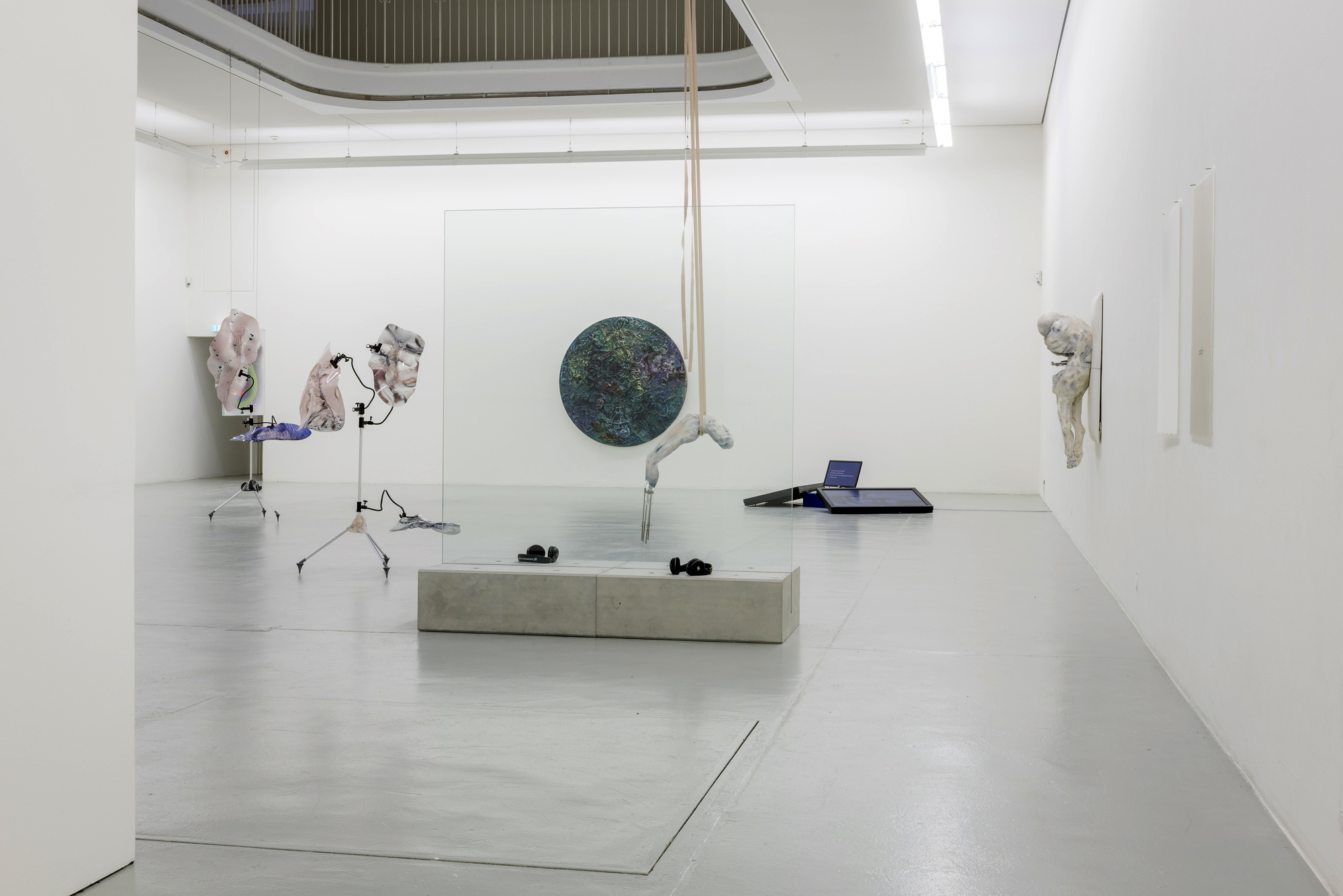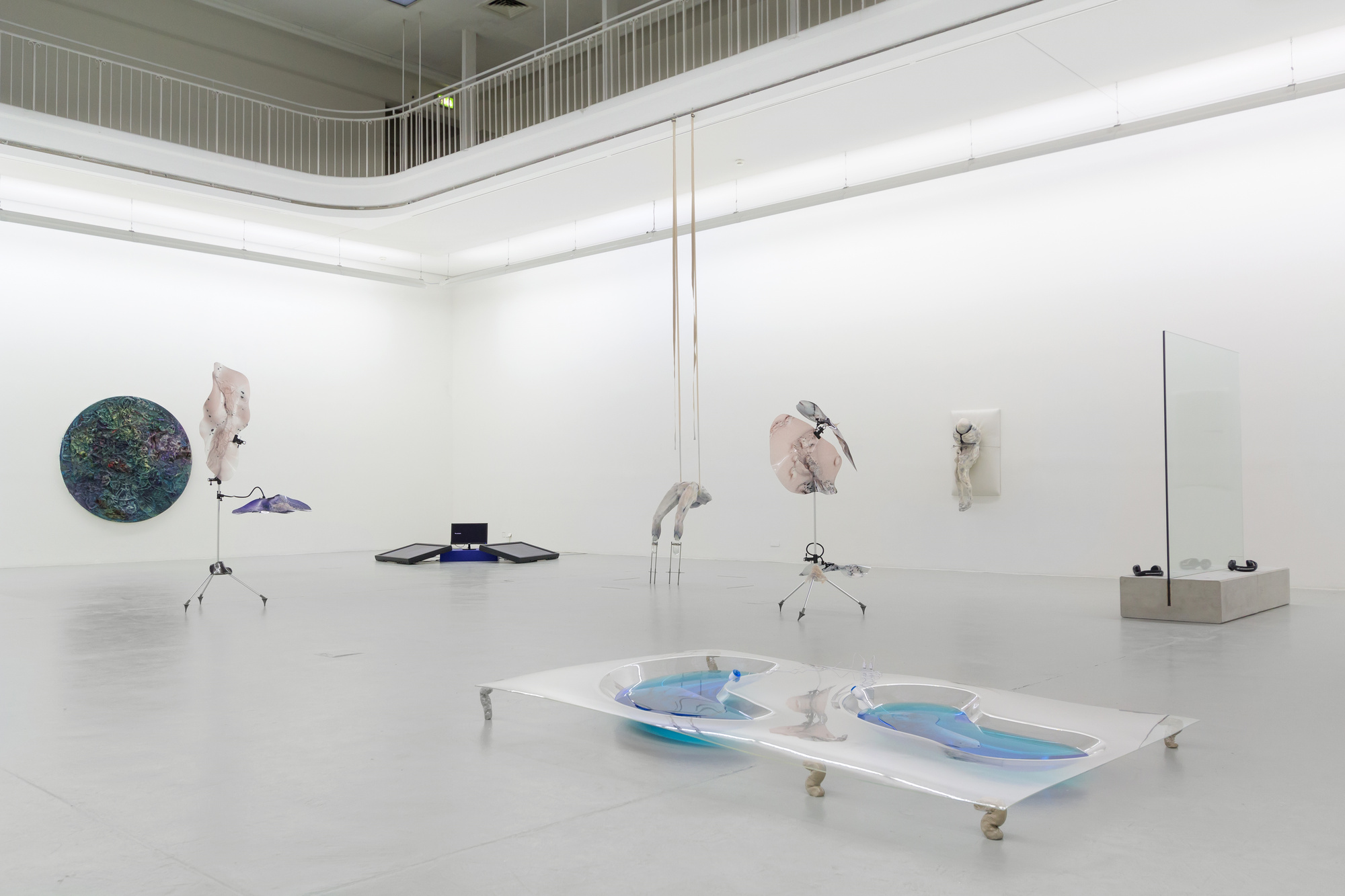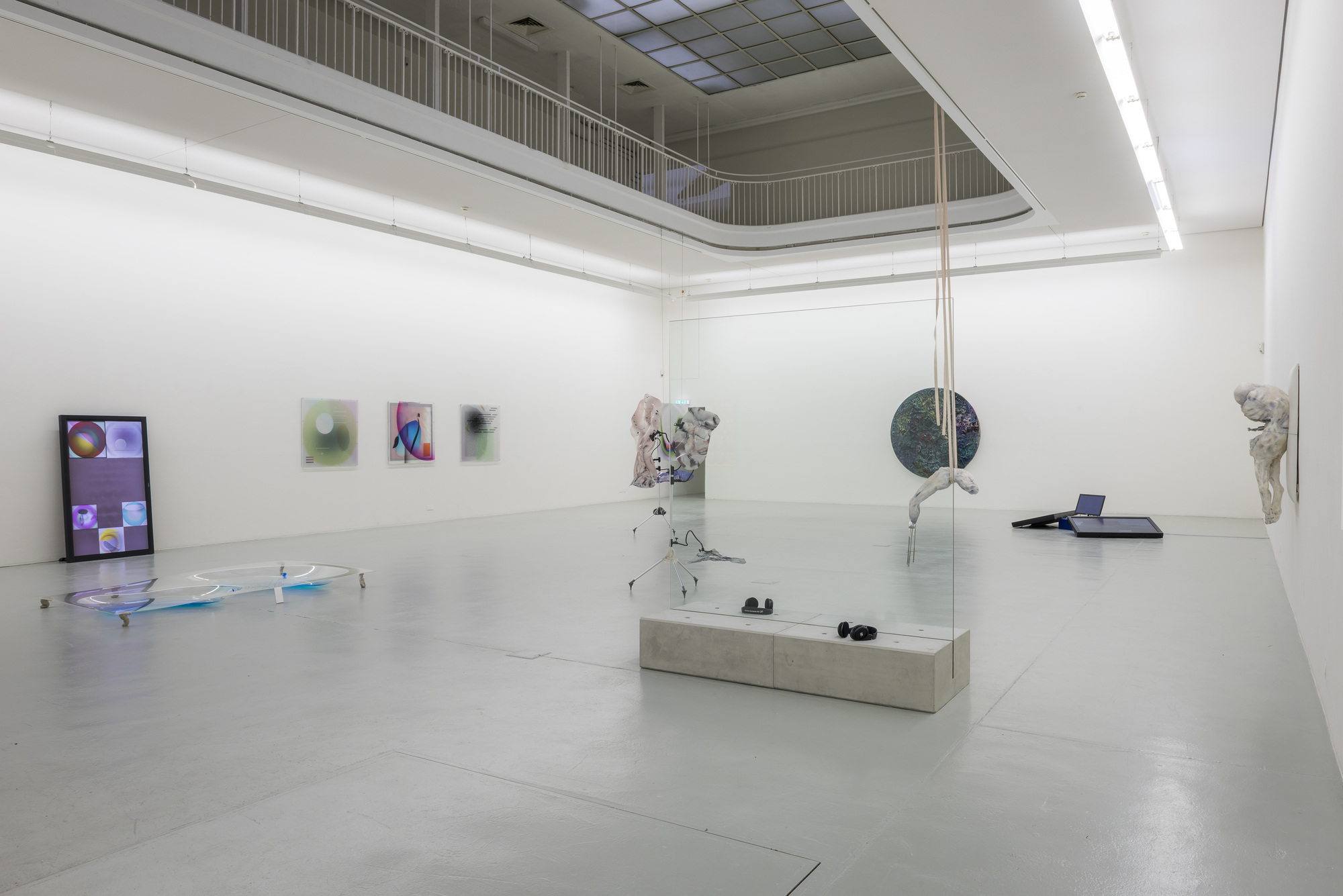Solo Show Metempsychosis: The Passion of Pneumatics at Schinkel Pavillon Berlin
06.06.2024 - 01.09.2024
Press Release:
Progressing like a rite of passage, Ivana Bašić’s presentation transforms both floors of the Schinkel’s iconic octagon-shaped building into a journey that examines the material and metaphysical bounds of humanity.
Debuting more than 20 new pieces, the exhibition weaves together sculptures, drawings, video, and an 23-feet-wide animatronic altarpiece into a surreal journey that contemplates the dissolution of the body and the material world, not as a loss, but as a moment of radical potential.
Charged by the artist’s childhood experiences of war, violence, and brutality brought on by the collapse of her native Yugoslavia, Bašić’s works investigate our most pressing ontological fixations: the fragility of the human condition; the breakdown of self and the Other; the reimagination of life and death; and the quest for immortality. Bašić's hybrid bodies contemplate metamorphosis as a substitute for physical flight, both on an individual level and collectively as a society. Can transformation be the way out, when there is nowhere left to retreat or hide?
Approximately human in scale, each of Bašić's sculptures combines disparate materials—wax, glass, bronze, stainless steel, and alabaster—into a unique symbolic material language consistent across the artist’s practice. Evoking womb fluids, and insectile bodies, the figures are at once violent and tender, suggesting primordial forces of the underground and unseen.
Significant objects in the show include a chimeric half-insectile, half-machine sculpture reminiscent of a praying mantis, which in Ancient Greek and Egyptian cultures was seen as an oracle and guide into the afterlife. Another sculpture seems to give birth to itself, pressing its own amniotic-hued glass head through its loins. Two biomechanical figures emerge from either end of an altar-like centerpiece. Their flesh-coloured folds of skin surrounded by shiny plates of armor—seemingly to protect the soft figures as they blossom and dissolve their human shells.
The exhibition title, Passion of Pneumatics, refers to the exhibition’s centerpiece, inspired by Italian Renaissance images of the Immaculate Heart of Mary. Here, the sun-like rays of the Immaculate Heart are replaced with pneumatic hammers that gradually pound a stone to dust at the sculpture’s core. Using the force of compressed air, the hammers’ repetitive movements are timed to the cadence of the artist’s breath, evoking the Gnostic idea of the Pneuma, “breath” and “spirit” in Greek. In the teachings of Gnosticism, the Pneumatics were the highest order of beings—those powered by the spirit, “the breath of life”, who transcend the material realm.
PDF | Floor Plan & Text About The Pieces >>
Human is at Schinkel Pavillon
Curated by Nina Pohl & Franziska Sophie Wildförster. Initial curatorial idea by Laura López Paniagua
19. March 2023 – 23. July 2023
Distinctions between dystopia and reality are increasingly collapsing in the face of inexhorable tech-nological and ecological upheavals. Against this backdrop, Human Is employs science fiction as a spiritual and aesthetic vehicle to mobilize alternative futures, political imagination and a new posthuman ethics. This exhibition borrows its name from the eponymous short story by Philip K. Dick (1955) and investigates the idea of being human as a contestable and reversible category.
Since the 19th century – and its notions of capitalist, scientific and technological progress – science fiction has held up a mirror to the changing contemporary »conditio humana« with its values, fears and limitations. The seemingly external threat of extraterrestrial, supernatural or artificial beings often reveals itself as self-made anxiety and part of our cultural condition. The monstrosity of the unknown arises to shake up limitations, in effect, decentering the human protagonist.
Human Is juxtaposes historical with newly produced artworks. The exhibition paints a polyphonic picture of the mutual penetration of body and technology: it addresses the often violent interde-pendence of humans on their technological surroundings and opposes any promises of salvation through trans-humanistic progress. Simultaneously, it opens up spaces of possibility in which dual-istic taxonomies can be overcome in favor of a networked and interdependent existence. Human Is engages science fiction to transcend the humanistically inscribed human, on the one hand, and the species of anthropos, on the other, through both material and perspectival liminality. Many works uncover the hierarchies of power that have traditionally dehumanized the Other. Afrofuturism, for instance, imagines a society beyond the histories of exploitation and discrimination in which people can live in equality, often through strategies of mutation, hybridization and camouflage.
For many, the collapse of the systems we have come to rely on is no longer a distant apocalyptic future. Visionary science fiction writer Ursula K. le Guin sees fiction as a container for reinventing the possibilities of human experience and knowledge beyond any linear narrative of progress. And it is through these stories that the destruction and alienation of contemporary existence can trigger creative processes and a new ethics of relationality, which may no longer be truly human.
Artists: Joachim Bandau, Ivana Bašić, Ian Cheng, David Cronenberg, Matthew Angelo Harrison, Tishan Hsu, Laika, Fritz Lang, Mike Kelley, Alexander Kluge, Tetsumi Kudo, Sidsel Meineche Hansen, Nour Mobarak, Sandra Mujinga, Mary Shelley, Diane Severin Nguyen, Ovartaci, Analisa Teachworth, Suzanne Treister and WangShui
Armory New York 2023
with Francesca Minini & Massimo Minini
From the dust, it is roused
the Body Pneumatic
2023
Wax, breath, blown glass, race-car exhaust manifolds, bronze, stainless steel, pressure
Au-delà Lafayette Anticipations
Curated by Agnes Gryczkowska
21 February - 07 May 2023
Bringing together artists from across different generations, Au-delà transforms Lafayette Anticipations into a journey evoking rituals at once ancient and contemporary, individual and collective, pagan and divine, in the search of a new sacred, a new unifying force.
While the world becomes increasingly wounded and desecrated and people seem more detached from the magic and power of the earth, the desire to invent and reinvent rituals and languages which would enable us to reach the sacred can be seen as a reaction to the degradation of the living, a counterculture responding to the general profanity of life. The subject of ritual—what makes us chant and dance, laugh and cry, dwell and transcend—tells a part of the history of our humanity while also outlining the one we hope to invent.
Unfolding like a choreographed rite itself through new, as well as rarely exhibited historical, modern, and contemporary works from the fields of art, music, fashion, and theatre, Au-delà takes us into a world in constant transformation, pulling us “beyond”, deeper into ourselves and through the layers of time in order to reinforce our presence in the now.
Artists: Alicia Adamerovich · Korakrit Arunanondchai & Alex Gvojic · Ivana Bašić · Hildegard von Bingen · Bianca Bondi · Romeo Castellucci · Matthew Angelo Harrison · Eva Hesse · Janina Kraupe-Świderska · Wifredo Lam · Michèle Lamy · Tau Lewis · Kat Lyons · Kali Malone · Ana Mendieta · Christelle Oyiri · Tobias Spichtig · TARWUK · Jeanne Vicerial · Anna Zemánková. As well as Cycladic idols and a Punic stele.
Form of Flight | Solo Show | François Ghebaly, New York
12.10. 2022 - 01.21.2023
François Ghebaly is proud to present Form of Flight, New York-based artist Ivana Bašić’s first solo exhibition with the gallery. The wall-based sculptures and drawings on display offer an introduction to the formal strategies and unique material language that the artist has developed over the course of her practice—what the artist calls “a language of becoming.”
Yugoslavian-born artist Ivana Bašić has for over a decade endeavored at an artistic and philosophical workspace far beyond the conventional bounds of human or organic form. To the contrary, her figures are metamorphic, in states of shifting biological, physical, and metaphysical identity. Charged by the artist’s early vantage of violence and brutality brought on by the collapse of Yugoslavia, Bašić’s multidisciplinary practice levies a posthumanist lens to investigate our most pressing ontological fixations: the fragility of the human condition; the breakdown of self and other; a reimagination of life and death; and a quest for immortality. For Form of Flight, these lines of inquiry converge in a body of sculptures and drawings that point toward still further possibilities of existence.
The exhibition title is taken from Catherine Malabou’s “The Ontology of the Accident,” wherein Malabou describes metamorphosis as a substitute for flight when there is nowhere left to retreat or hide: “The only possible way out from the impossibility of flight appears to be the formation of a form of flight. In other words, the formation of an identity that flees itself,” as a way to free itself.
Bašić employs specific materials throughout her work, each denoting a unique conceptual or narrative counterpart. This material codex is consistent across the artist’s practice, allowing the viewer to contextualize each individual artwork within Bašić’s greater theoretical cosmology, and to decode the unique forces and conflicts that undergird each of her figures. For example, wax represents flesh and organic tissues; soft and mutable, paraffin wax comprises many of her sculptures’ most vulnerable and corporeal elements. Its origins in petroleum and, much older, in petrified detritus and organic material gesture toward the cyclicality of life and decay. Glass, meanwhile, represents the breath that formed it, and stainless steel the forces of life and death that act on the body. Stone is the consolidation of organic life and matter that, under pressure, is further atomized into dust. Bašić borrows the latter-most formulation in part from philosopher Reza Negarestani: “Dust is irreducible. The elemental object of creation—a formula for life without life itself.” Bašić also includes what she calls intangible materials in her material lists: forces and properties such as pressure, breath, weight, and torque that in her words are contained within the matter and guide the formation of the pieces.
At opposite ends of the exhibition space are two new sculptures in copper, wax, alabaster, and stainless steel. I sense that all of this is ancient and vast. I had touched the nothing, and nothing was living and moist. #4 and #5 (2022) resemble both insect chrysalises with armor-like bronze protective shields, as well as otherworldly wombs caught in the process of opening, blossoming, birthing. Under the armor, wax that evokes bodily flesh unfolds to reveal alabaster stones as the nucleus of the sculptures—gently carved to look wet and intestinal. The rods surrounding the sculpture are functional safety instruments, known as “Grounding rods”—devices that are used as pathways for magnetic and electric forces to safely connect to the earth. The circular organization of the rods simultaneously evokes the gesture of pinning a butterfly, and mimics the rays of passion and transformation in mystical depictions of the Sacred Heart.
Installed on the right-hand wall is I too had thousands of blinking cilia, while my belly, new and made for the ground was being reborn Position III, #2 (2020). In this ‘chrysalis’ form, Bašić explores mimicry as a protective strategy. When encountered frontally, a metallic facial feature appears to emerge from the figure’s pale waxen folds. Yet when viewed in profile, the piece reveals that this face is a decoy or mirage. Bašić’s use of polished bronze and metal elements denote an organism’s protective strategies during metamorphosis, like the eyespots butterflies wear on their wings to resemble a larger animal. Here, the metallic face conceals the figure’s delicate pupating underside, which faces the wall and is suspended on a steel bracket. From an opening beneath the armor, the figure’s breath—represented by black glass drops—oozes towards the floor. Bašić’s figures are nearly always represented away from walls or above floors, usually with stainless steel armatures acting as interlocutors. The resulting entities are quite literally “ungrounded” from common physical and metaphysical conditions.
Perhaps surprisingly, Bašić’s sinuous organic and biomechanical sculptures are neither virtually rendered nor computer-assisted. Instead, they are formed through intricate manual technique. Cast elements are painstakingly formed using clay blocks, their humanoid, insect, and otherwise indeterminate forms drawn out through feel and intuition as the artist sculpts by hand. Bašić says of her relationship with form, “each departure from human physiology is, for me, a point of liberation from the material realm and its constraints”—that is to say, a step away from the severity of the human condition, and motion toward something that is irreducible, eternal.
Breath seeps through her tightly closed mouth | Position II: Swelling #2 (2019) offers an example of this flight from materiality. Evolving beyond wax, stone, and bronze components, the artwork contains only a single blown glass entity suspended on a steel armature—pure, transcendental ‘breath’ in commune with the entropic pressures of life and death.
Scattered throughout the exhibition, Bašić presents three new watercolor drawings on paper, each belonging to a numbered series titled Ungrounding (2022). Though separate from the artist’s material study, the drawings show clear throughlines with Bašić’s larger formal imagination. In some regards, the virtual properties of drawing suggest in these works entities even more transient and ephemeral than Bašić’s glass or paraffin. Familiar shades of pale pink and white are bound by dark, steely curves; forms are elliptical and womb-like, evoking cyclical images of nebulae, cellular life, becoming and unbecoming—“dust to dust.” For Bašić, this sort of quantum return is an optimistic, generative space—a reacquaintance with the most basal and indivisible ingredients of existence.
Chapter 3HREE 'What is important now is to recover our senses'
Het Hem Amsterdam
1 . 24 . 2020 - 8 . 2 . 2020
Curated by Maarten Spruyt & Rieke Vos
CRASH TEST | Molecular Revolution
curated by Nicolas Bourriaud
MOCO Montpellier
Belay My Light, the Ground Is Gone, 2018
Wax, pink alabaster, blown glass, breath, dust, weight, oil paint, pressure, stainless steel
Ivana Bašić in Flash Art #332
@ivana_basic inaugurates the column for @flashartmagazine - Letter From The City - writing about the months of isolation, the insectile universe and the birthing of the new work - with voices of: Clarice Lispector, Reza Negarestani, Steven Shaviro, James Baldwin and Oscar Wilde
WILD AT HEART
Marlborough New York
-
06 . 14 . 2021 - 08 . 11 . 2021
Ahmed Alsoudani, Alice Aycock, Ivana Bašić, Chakaia Booker, Enzo Cucchi, Inka Essenhigh, Jonah Freeman & Justin Lowe, Ron Gorchov, Justen Ladda, Le’Andra LeSeur, Ran Ortner and Beverly Pepper.
INCORPOREA 03
Basement Roma
-
09 . 18 . 2020 - 09 . 30 . 2021
INCORPOREA is a year-long choral exhibition set up as to develop and transform itself over time, and aimed at investigating the body in all its folds and meanings: the body as a revolutionary space, of antagonism and freedom, expression and research, self-definition and power, identity and gender.
Going across different generations and media, starting from new artistic expressions and going back towards the historical avant-gardes, INCORPOREA will investigate the practices that have uncovered, transformed and re-imagined the body and the speculations it has inspired.
Moving around the boundaries, meanings and shapes of the body, the exhibition intends to introduce a new corpus of works every month in a sort of endless movement, a constant flow of addition and subtraction, with the aim of exploring an urgent and significant theme, articulating the elements that define it beyond preconceived categories, in today’s ever-changing scenario.
Artists: Ivana Bašić, Yu Ji, Hannah Levy
The Body Electric
Museum of Art and Design, Miami Dade College
11 . 5 . 2020 - 5 . 30 . 2020
The Body Electric, a major exhibition that looks at our fraught relationship to technology, particularly the increasingly inescapable interface between our bodies and screens. The remarkably varied art in the exhibition examines the last fifty years of artists addressing the way technological mediation has come to dominate our interactions with the world, with each other, and with our selves.
In an age dominated by digital technology, The Body Electric explores themes of the real and the virtual, the organic and the artificial, moving from the world into the screen and back again. Looking across the past fifty years, the exhibition presents an intergenerational and international group of twenty-six artists who have seized upon the screen as a place to rethink the body and identity, with a particular emphasis on questions of gender, sexuality, class, and race. The exhibition contextualizes contemporary artists who today engage with digital technology and the influence of the Internet within a broader art historical narrative to reveal shared interests that emerge across generations, despite differing technological means.
Video cameras record private moments and public spectacles, photographs capture alternate personas, and digital avatars simulate human behavior. Together, they reveal ways that technology changes our collective understanding of the body, everyday life, and sense of self. Works in the exhibition—from the inviting and familiar to the provocative and unsettling—question ways that photographic, televisual, and digital media affect our perceptions of the human body and ordinary experience.
The Body Electric is curated by Pavel Pyś, Curator, Visual Arts, Walker Art Center, with Jadine Collingwood, Curatorial Fellow. The presentation at MOAD is organized by Rina Carvajal, Executive Director and Chief Curator, with Isabela Villanueva, Consulting Assistant Curator
Artist :
Vito Acconci
Laurie Anderson
Ed Atkins
Trisha Baga
Ivana Bašić
Gretchen Bender
Zach Blas
Nancy Burson
James Byrne
Peter Campus
Petra Cortright
Andrea Crespo
Jaime Davidovich
Otavio Donasci
Juan Downey
Zackary Drucker
Rhys Ernst
VALIE EXPORT
Jes Fan
Simone Forti
Robert Gober
Aneta Grzeszykowska
Lynn Hershman Leeson
Tishan Hsu
Pierre Huyghe
Juliana Huxtable
Sanja Iveković
Josh Kline
Shigeko Kubota
Carolyn Lazard
Candice Lin & Patrick Staff
Rafael Lozano-Hemmer
Anna Maria Maiolino
Helen Marten
Sidsel Meineche Hansen
Marta Minujín
Charlotte Moorman
Paul Mpagi Sepuya
Bruce Nauman
Nam June Paik
Letícia Parente
Claudio Perna
Sondra Perry
Howardena Pindell
Ulrike Rosenbach
Cindy Sherman
Lorna Simpson
Marianna Simnett
Stelarc
Hito Steyerl
Martine Syms
Ryan Trecartin
Wolf Vostell
The Wooster Group
Anicka Yi.
Frieze New York 2020
Marlborough Gallery
-
I too had thousands of blinking cilia,
while my belly, new and made for the ground
was being reborn | Position III
2020
Materials: Wax, bronze, breath, blown glass, oil paint, stainless steel, pressure
Artissima 2019
Novembar Gallery
-
I too had thousands of blinking cilia,
while my belly, new and made for the ground
was being reborn | Position II
2019
Materials: Wax, bronze, breath, blown glass, oil paint, stainless steel, pressure

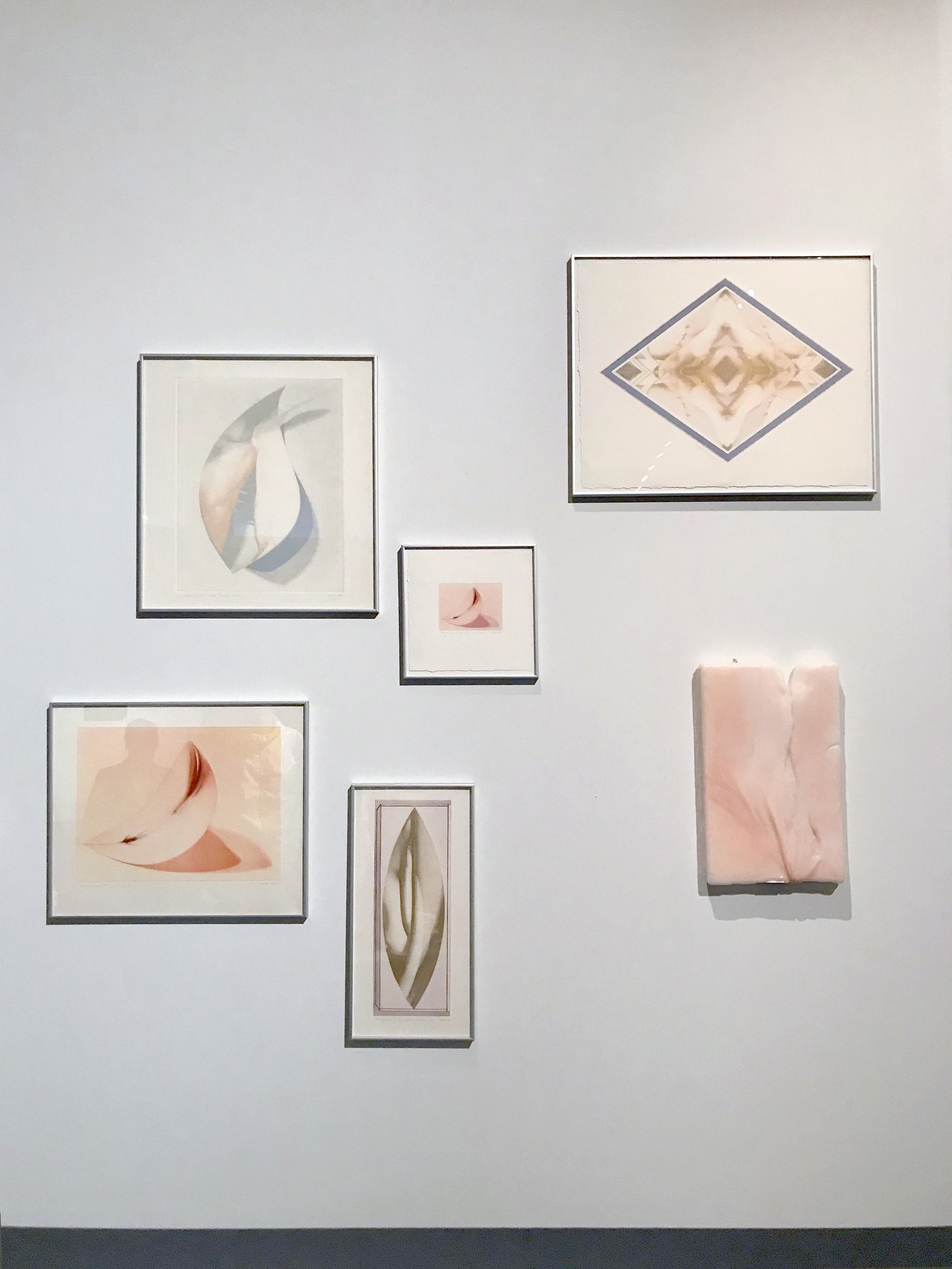
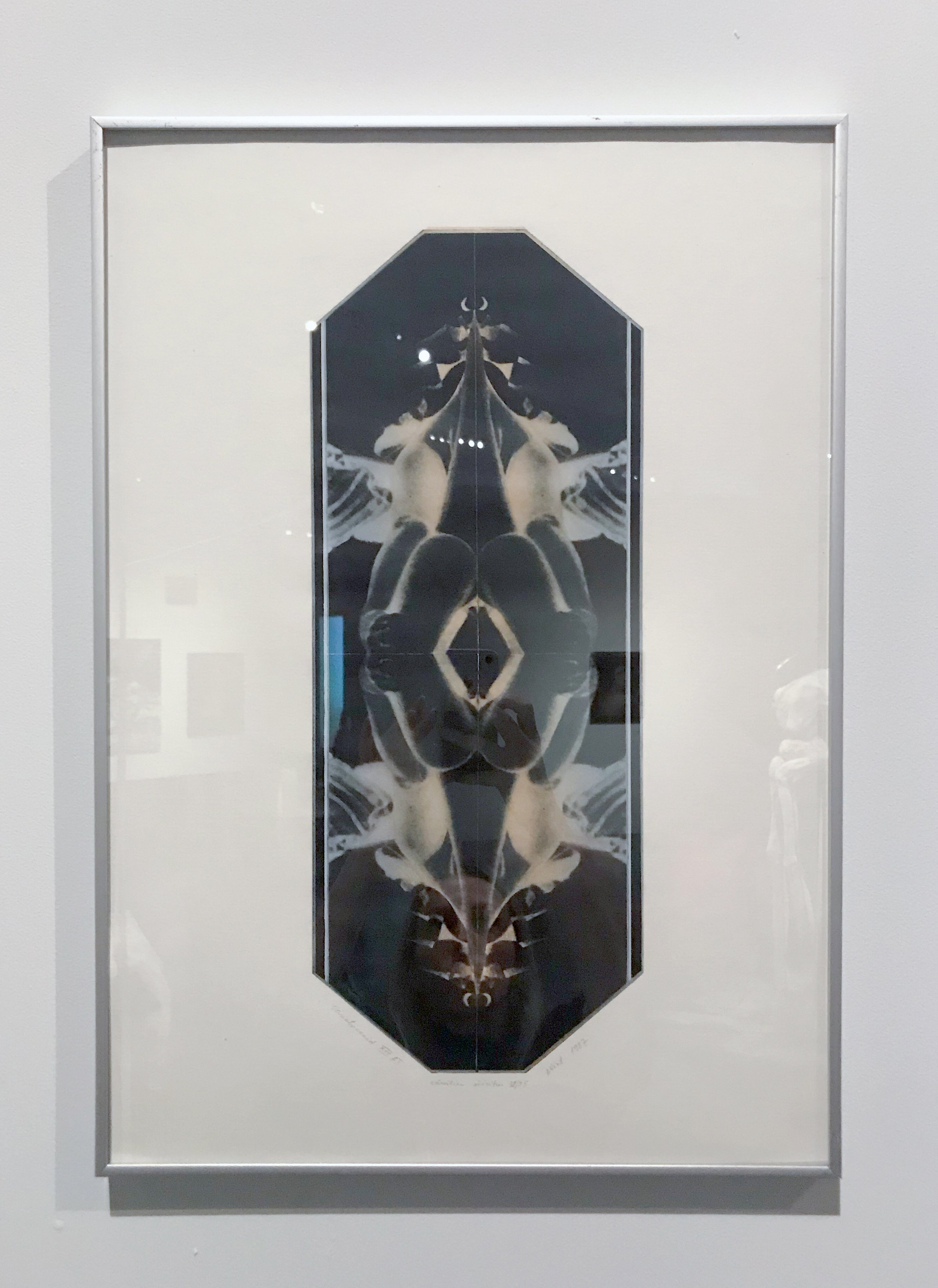
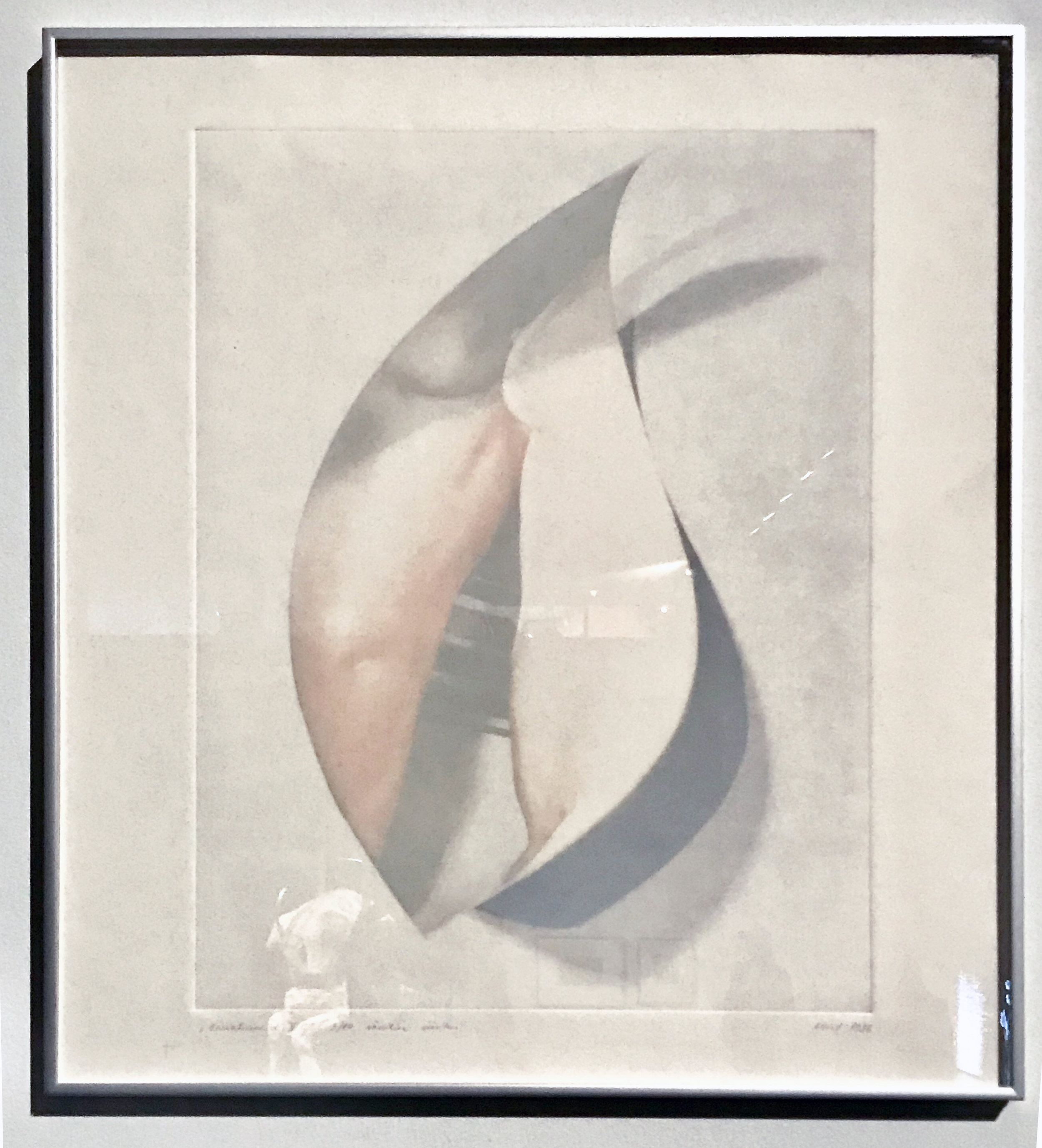

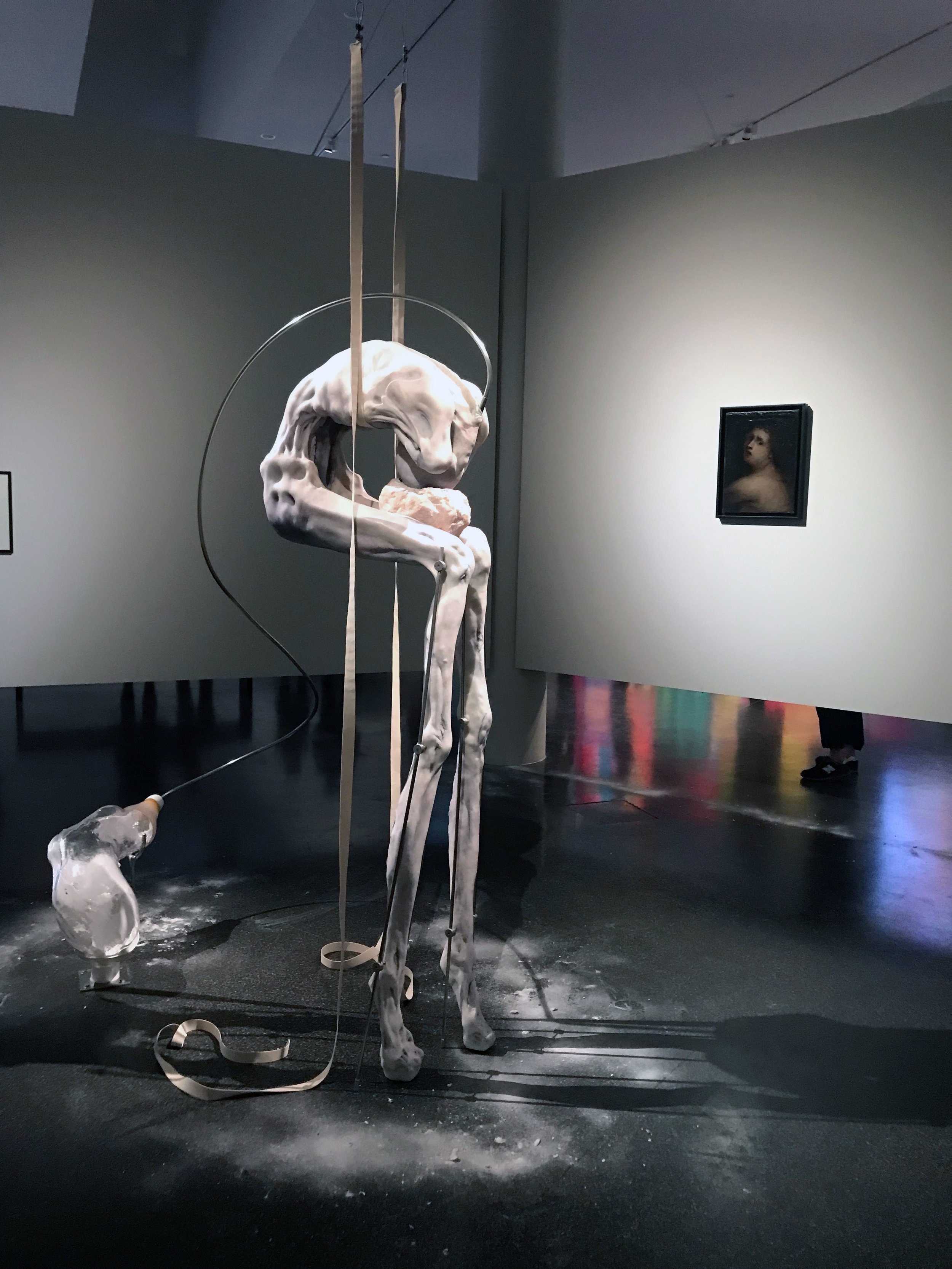


KUMU Art Museum, Tallinn
Open Collections: The Artist Takes the Floor
7.5.19 - 11.10.19
A special project titled “Mutant”, curated by Maria Arusoo and organized by Eha Komissarov at KUMU Kunsti Museum.
In the show Estonian artist Aili Vint’s print series titled "Variations" (1980 - 1987), 19th century prints as well as the oldest work in the show - a painting by an unknown Italian artist which dates back to the 17th century have all been placed in a dialogue with artworks by a New York based Serbian contemporary artist Ivana Bašić. The curated project deals with the dystopian human body of the past and future, taking into account the destruction and alienation of the body in the post-capitalist society of today.
Art Brussels ‘18
Gallery Pact
—
I too had thousands of blinking cilia,
while my belly, new and made for the ground
was being reborn
2018/2019
Materials: Wax, breath, bronze, glass, oil paint, weight, stainless steel, pressure
Dreamlands: Immersive Cinema and Art, 1905–2016
Curated by Chrissie Iles, Anne and Joel Ehrenkranz Curator
Whitney Museum of Art
Dreamlands: Immersive Cinema and Art, 1905–2016 focuses on the ways in which artists have dismantled and reassembled the conventions of cinema—screen, projection, darkness—to create new experiences of the moving image. The exhibition will fill the Museum’s 18,000-square-foot fifth-floor Neil Bluhm Family Galleries, and will include a film series in the third-floor Susan and John Hess Family Theater.
The exhibition’s title refers to the science fiction writer H.P. Lovecraft’s alternate fictional dimension, whose terrain of cities, forests, mountains, and an underworld can be visited only through dreams. Similarly, the spaces in Dreamlands will connect different historical moments of cinematic experimentation, creating a story that unfolds across a series of immersive spaces.
The exhibition will be the most technologically complex project mounted in the Whitney’s new building to date, embracing a wide range of moving image techniques, from hand-painted film to the latest digital technologies. The works on view use color, touch, music, spectacle, light, and darkness to confound expectations, flattening space through animation and abstraction, or heightening the illusion of three dimensions.
Artists:
Trisha Baga, Ivana Bašić, Frances Bodomo, Dora Budor, Ian Cheng, Bruce Conner, Ben Coonley, Joseph Cornell, Andrea Crespo, François Curlet, Alex Da Corte, Oskar Fischinger, Liam Gillick, Dominique Gonzalez-Foerster, Pierre Huyghe, Alex Israel, Mehdi Belhaj Kacem and Pierre Joseph, Aidan Koch, Lynn Hershman Leeson, Anthony McCall, Josiah McElheny, Syd Mead, Lorna Mills, Jayson Musson, Melik Ohanian, Philippe Parreno, Jenny Perlin, Mathias Poledna, Edwin S. Porter, Oskar Schlemmer, Hito Steyerl, Rirkrit Tiravanija, Stan VanDerBeek, Artie Vierkant, and Jud Yalkut
Museum Website
Artificial Paradise?
Immersion in Space and Time
Künstlerhaus Halle für Kunst & Medien, Graz
9.23.2018 - 11.29.2018
Artificial Paradise? Immersion in Space and Time will bring together recent immersive works by twelve international artists with works newly commissioned for the exhibition. The immersion in an image, in its sphere of imagination, is a concern that can be traced far back in art history.
The exhibition focuses particularly on the threshold of submersion into artificially created worlds. Whereas the older genre of landscape painting predominantly offered the imaginary participation in an illusionistic, idealistic nature, the new virtual reality works aim at a—preferably —complete absorption of the viewer. The submersion into artificial surroundings can be accomplished literally by way of spatial installations and environments with sounds. Furthermore, the artistic discussion of the relationship between digital and analog aspects as well as the immersive use of media for military and political strategies will be the subject of the exhibition. Can the belief in progress that is connected with technological development lead to paradisiacal conditions? Or do these virtually perfect worlds also evoke feelings of uncertainty and numbness? The elevation of the beautiful to the sublime, as it had been linked especially to Romantic landscape painting, apparently involves also horror and fear due to its unattainability and perfection. Moreover, the theory of the “uncanny valley” is based on the fact that artificially created bodies and figures of a certain degree of anthropomorphic resemblance can drastically lose credibility in the eye of the viewer. Too real seems to be unsettling. Artificial Paradise? Immersion in Space and Time wants to stimulate the visitors’ conjectures and speculations regarding future artificial worlds. And thus, the exhibition also poses the question, how future artificial paradises could look like.
Artists:
Banz & Bowinkel
Ivana Bašić
Paul Chan
Frauke Dannert
Harun Farocki
Olga Fedorova
Johann Kniep
Marc Lee
Manuel Roßner
Gerriet K. Sharma
Jakob Kudsk Steensen
Addie Wagenknecht
Athens Biennale ‘18
ANTI
10.26.18. - 12. 9.18
Curators: Stefanie Hessler / Poka-Yio / Kostis Stafylakis
Enter ANTI: ANTI is a preposition, a position, a person. ANTI is indulgent, ascetic, libertarian. ANTI invests in bitcoins and detests political correctness. ΑΝΤΙ is a contraestablishment politician, a humanist, a creature of our time.
The 6th Athens Biennale flirts with the term, the attitude, the (im)possibility of ANTI. It asks: How does opposition play out today? And what kinds of identities does it forge? At present, an oppositional stance, an attitude of ANTI—an “antitude”—seems to encompass wide arenas of social life including cultural expressions, identity politics, art labor, media and scripted protagonist impersonations on Netflix as well as “weird advertising”, videogames and music video productions. In other words, attitudes of resistance, non-conformity and marginality are rapidly becoming canonized and commodified. ANTI is adored and detested as pre-eminent role model. The imagery of the cunning villain, the proactive manipulator, the taboo perpetrator, is one of today’s most fascinating characters in institutional and counter-establishment politics, tactical resistance and pop culture.
Ecce Puer
57. Belgrade Biennale / OCTOBER SALON
The Marvelous Cacophony
Belgrade City Museum
Curated by Gunnar B. Kvaran and Danielle Kvaran
The Marvellous Cacophony is based on the idea of diversity. This concept puts the Serbian and the Belgrade art scenes into an international context, but at the same time, refers to the complex cultural and socio-political situation in the region. At the beginning of 21st century, despite the fact that the Western notion of contemporary art has become an universal model of reference, no single common denominator has emerged. The art world has many centres, multi-layered activities, a plurality of ideas about what art is and what it can be, and an impressive number of heterogeneous works. This Marvellous Cacophony reflects the richness of the world. It is a positive condition, creating energies that can include dissonance and even conflicting ideas and expressions. It involves the coexistence of multiple identities and permanent relational flows, conveying notions of miscellany and openness, and creating meaningful narratives about art and culture, social issues and politics. The Marvellous Cacophony will explore worldwide artistic production, looking into diverse art scenes and different generations of living artists. It will bring together a constellation of works that express, through their forms, structures, materials, techniques, devices and content, the extraordinary richness of contemporary artistic expression.
Belgrade Biennale Website
KÖRPERWENDE
FROM NAM JUNE PAIK TO HIROSHI ISHIGURO
NRW-Forum Museum, Dusseldorf
3.29.19 – 5.5.19
When the film The Thieving Hand was released in 1908, the filmmaker had no idea how quickly prostheses and human machines would develop in the future. This early silent cinema fantasy about an obstinate kleptomaniac hand kicks the exhibition Körperwende - from Nam June Paik to Hiroshi Ishiguro off. Video excerpts from Nam June Paik's first non-human action artist, Robot K456, and Erika Kiffl's photographs of Paik's robot works at the 1993 Biennale are also on display, as well as Hiroshi Ishiguro's humanoid robot conductor, Alter 3, and Nick Ervinck’s futuristic 3-D sculptures of androids. Martina Menegon’s VR work addresses the split between real and virtual, flesh and data; Pinar Yoldas' Kitty AI proclaims a postapocalyptic, sociopolitical and economic manifesto. From the phenomenon of phantom limb pain in Oscar Santillan’s work to Ivana Bašić’s wax sculpture that exposes “healthy” and “deformed” bodies as ideological constructs, the exhibition explores the limits of the body and body image, the self and the other, and the perception of the body in space. Somewhere between artificial production, imaginative candor, and the fragility of the body, the works create atmospheres between amazement, alienation, fear fantasies, and beauty.
Artists:
Erika Kiffl
Hiroshi Ishiguro
Ivana Bašić
Martina Menegon
Nam June Paik
Nick Ervinck
Oscar Santillan
Pinar Yoldas
Immortalism
Kunstverein Freiburg
9.15.17 - 10.27.17
Ivana Bašić
Harm van den Dorpel
Cécile B. Evans
Pakui Hardware
Lina Hermsdorf
Kitty Kraus
Oliver Laric
Dominik Sittig
Anton Vidokle
Tchelet Weisstub
In 1922, under the slogan ‘immortalism and interplanetarism’ the Moscow bio-cosmists demanded nothing less than the immediate elimination of the temporal and spatial limits of human life. They follow in the footsteps of Russian philosopher Nikolai Fyodorov (1829–1903). He speculated about the abolition of mortality and the resurrection of all humans by the technology of art under the auspices of a state becoming a museum. Fyodorovs ideas influenced theorists, scientists and activists in pre- and early soviet times. The cosmists share the belief in a rational evolution of mankind, finding its completion in the overcoming of death and the conquest of space.
Today developments in artificial intelligence and biotechnology fuel transhumanist utopias of eliminating the temporal limits of human life. It comes as no surprise that Calico – the Califoria Life Company a subsidiary of Alphabet Inc. – set itself the business objective to prolong human life. Yet, whereas Russian cosmists regarded the achievement of human immortality as a collective, ‘common task’ many current transhumanist aspirations are aimed at self-optimisation.
The exhibition Immortalismus (Immortalism) brings together works by contemporary artists that open up different perspectives on visions, technologies and ideologies to overcome death. It takes the utopian ideas of Nikolai Fyodorov and the Russian avant-garde movement of the cosmists as a historical starting point.


















































